The Devil you Say!
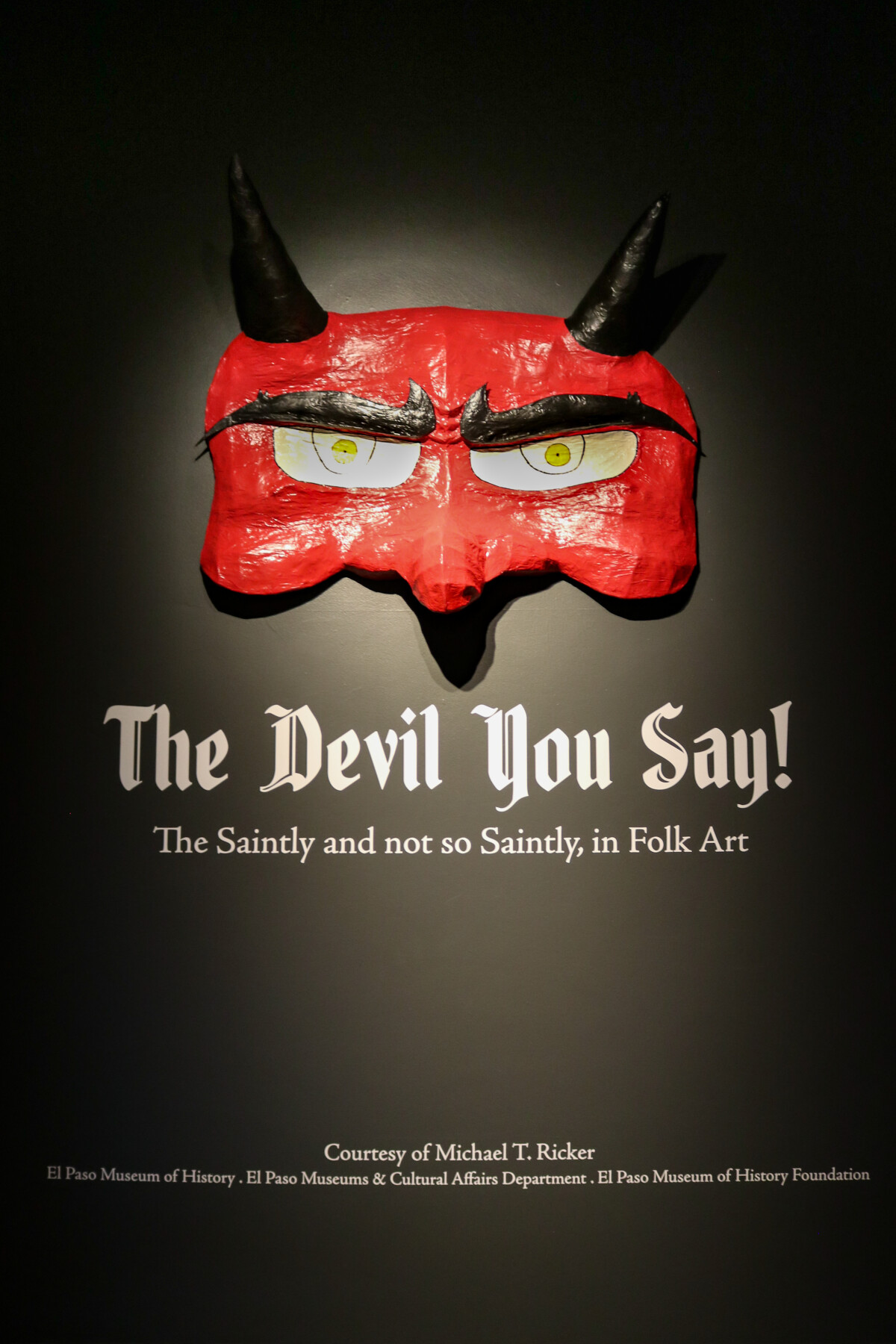
The Devil you Say!
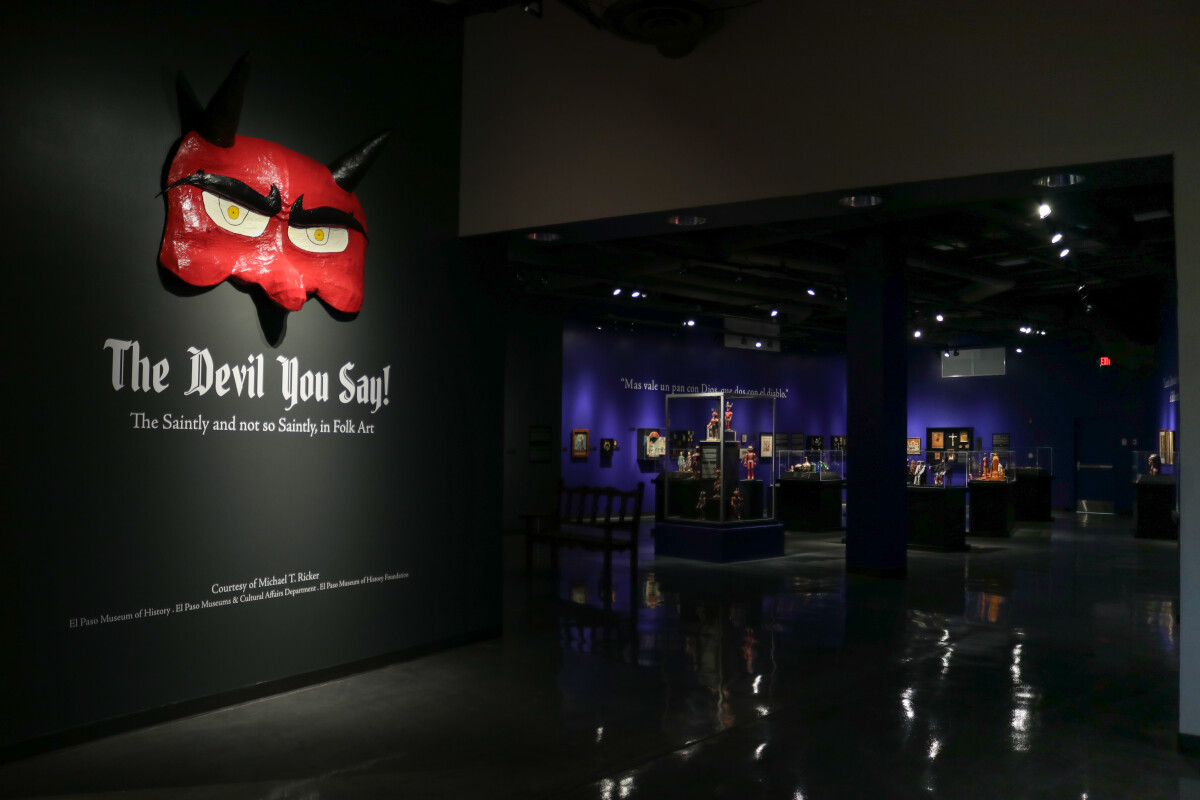
The Devil you Say!
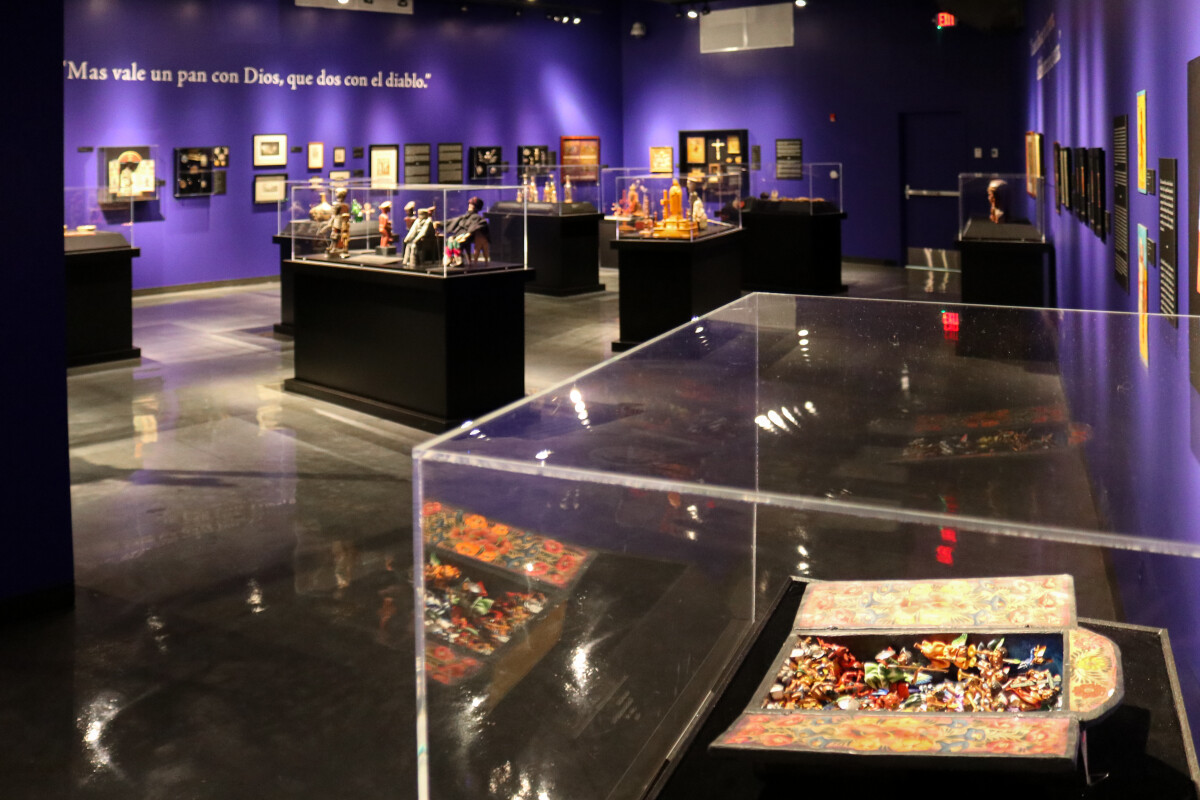
The Devil you Say!
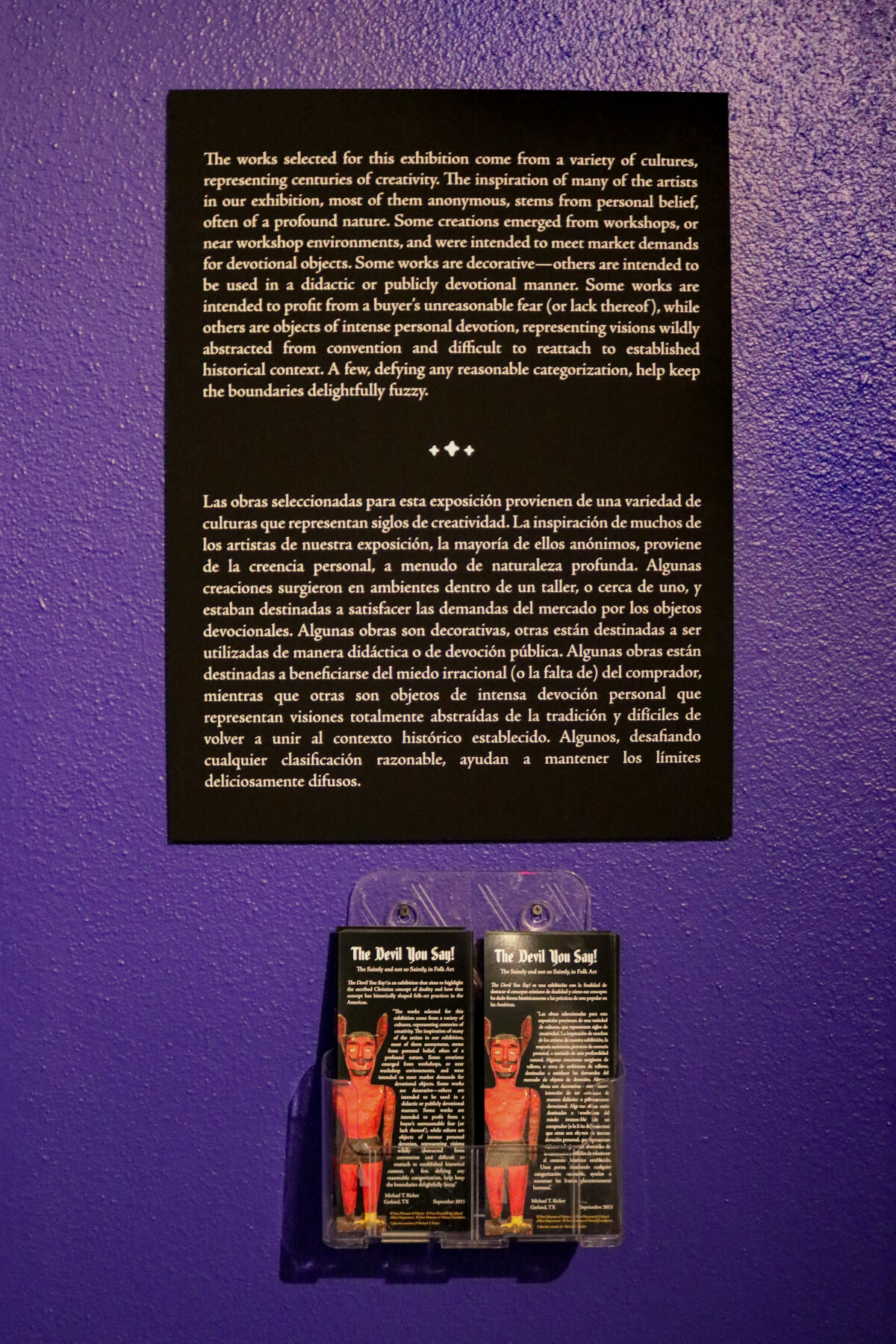
The Devil you Say!
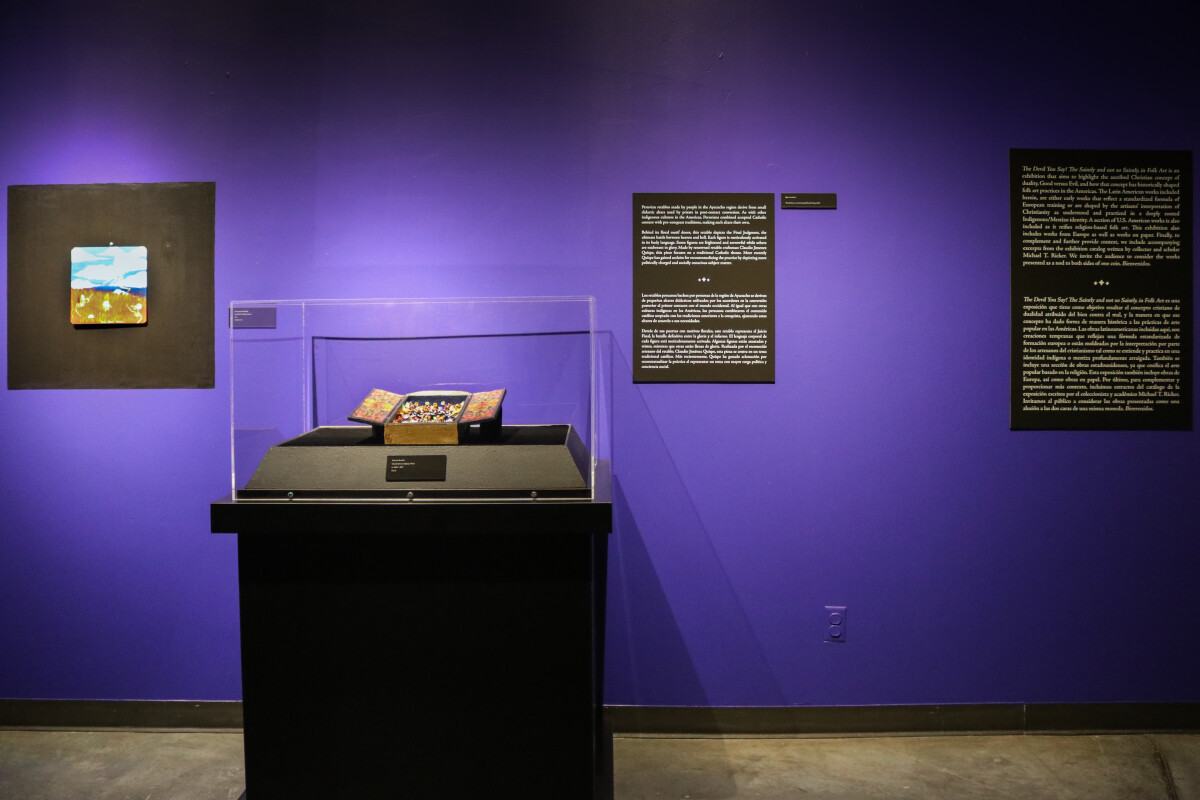
The Devil you Say!
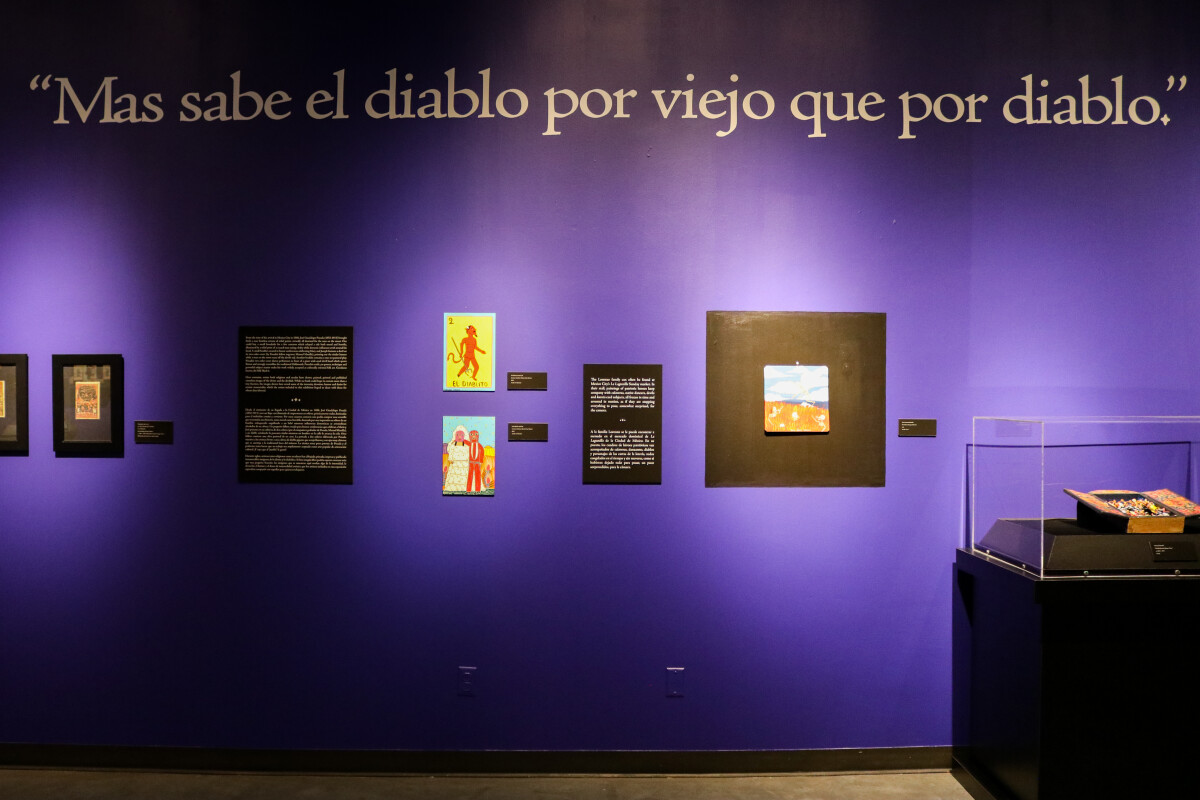
The Devil you Say!
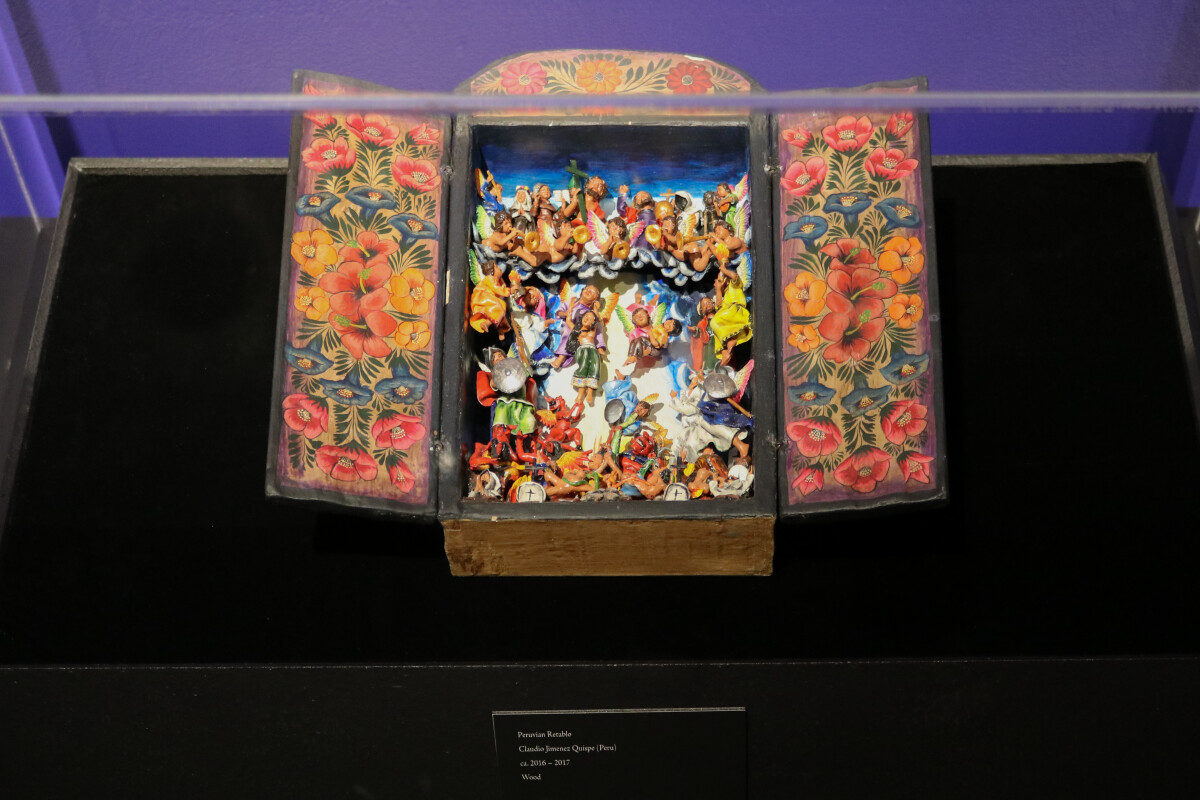
The Devil you Say!
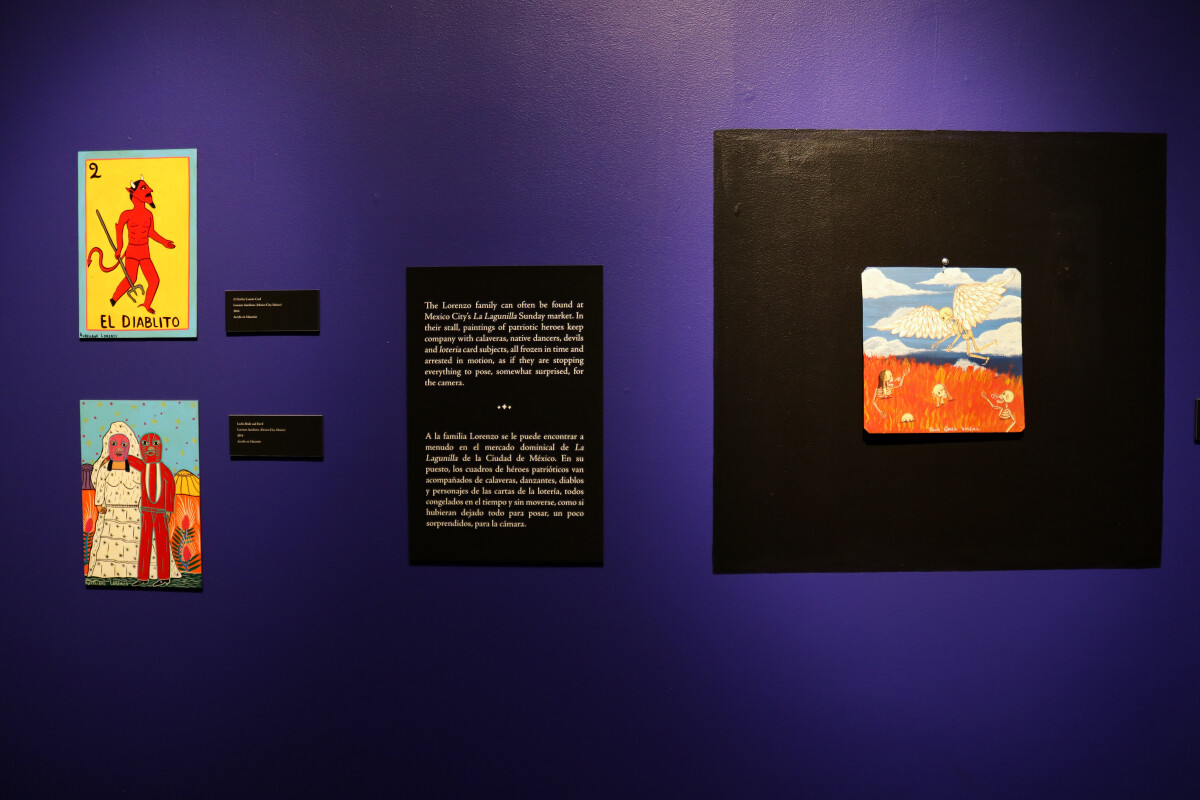
The Devil you Say!
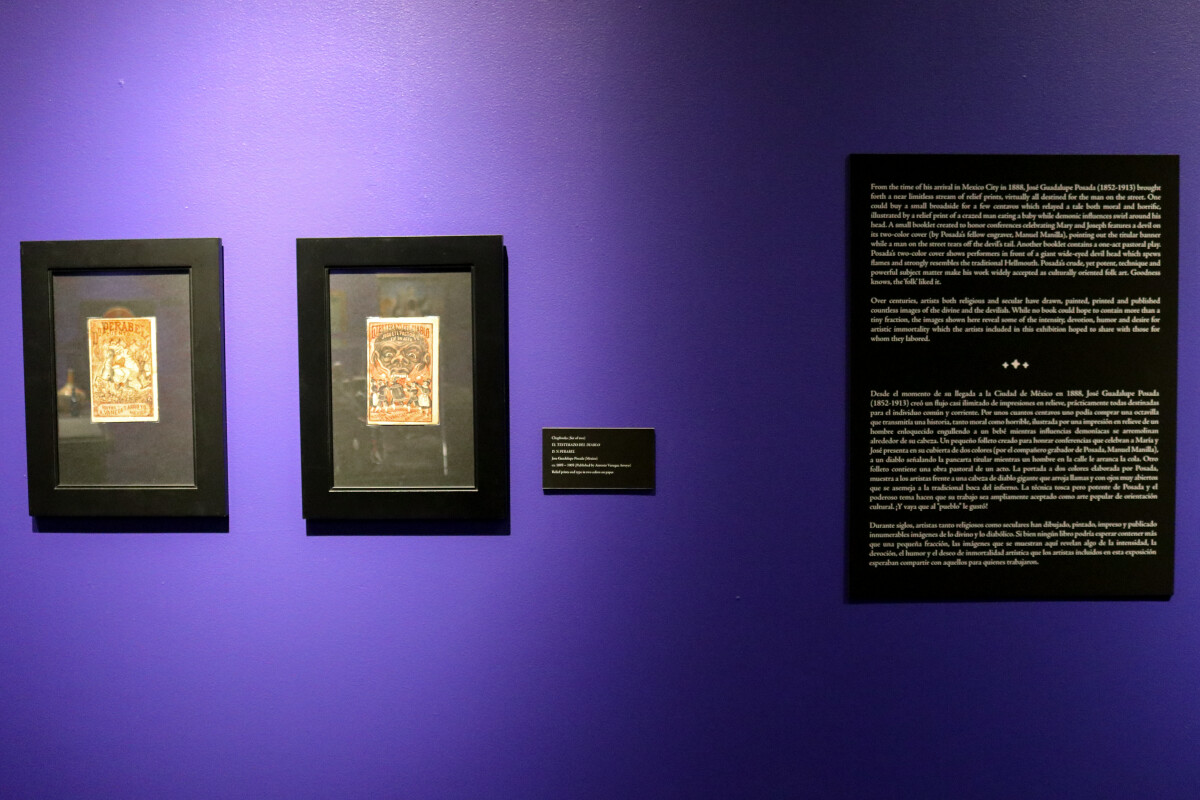
The Devil you Say!
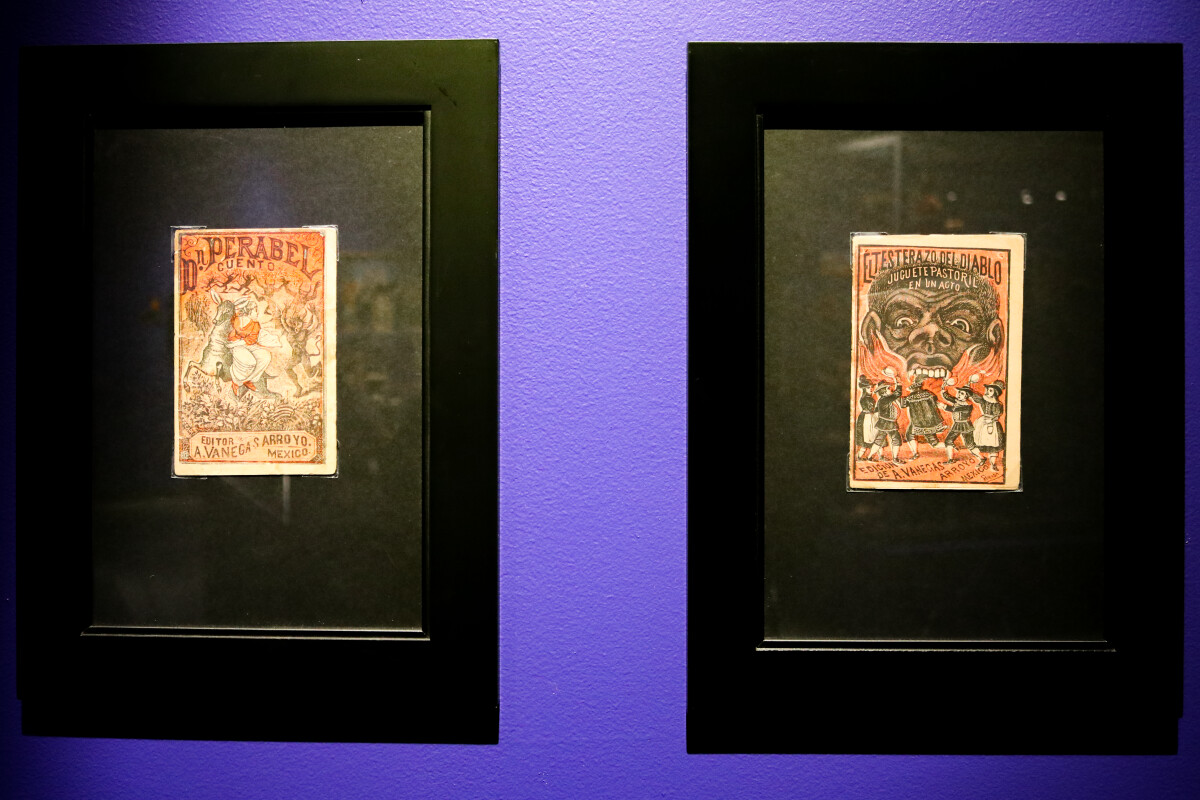
The Devil you Say!
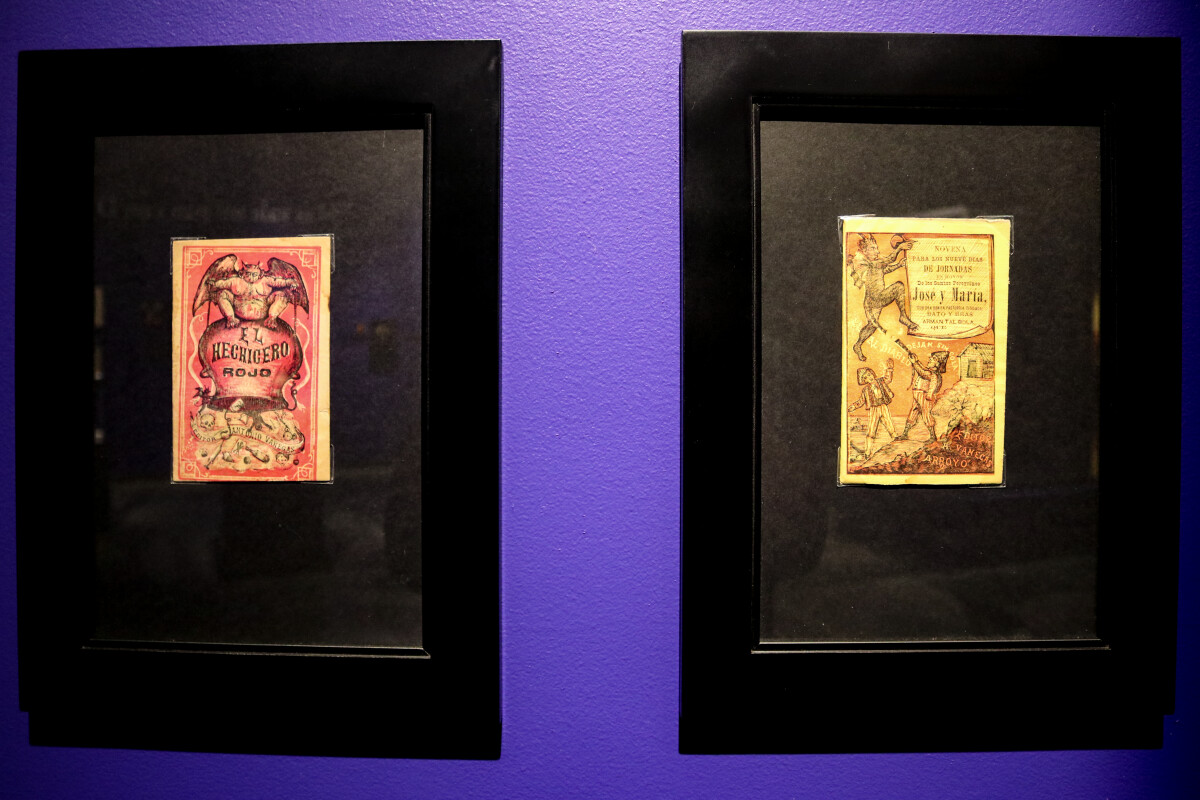
The Devil you Say!
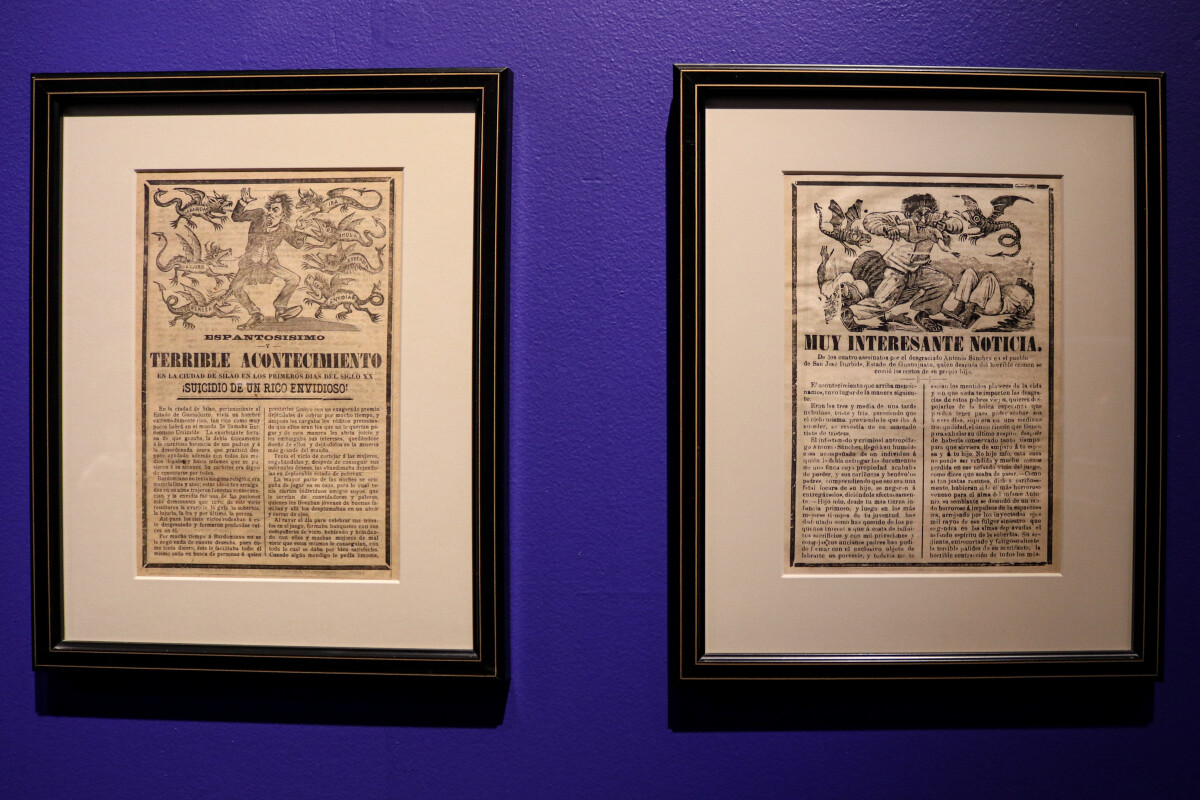
The Devil you Say!
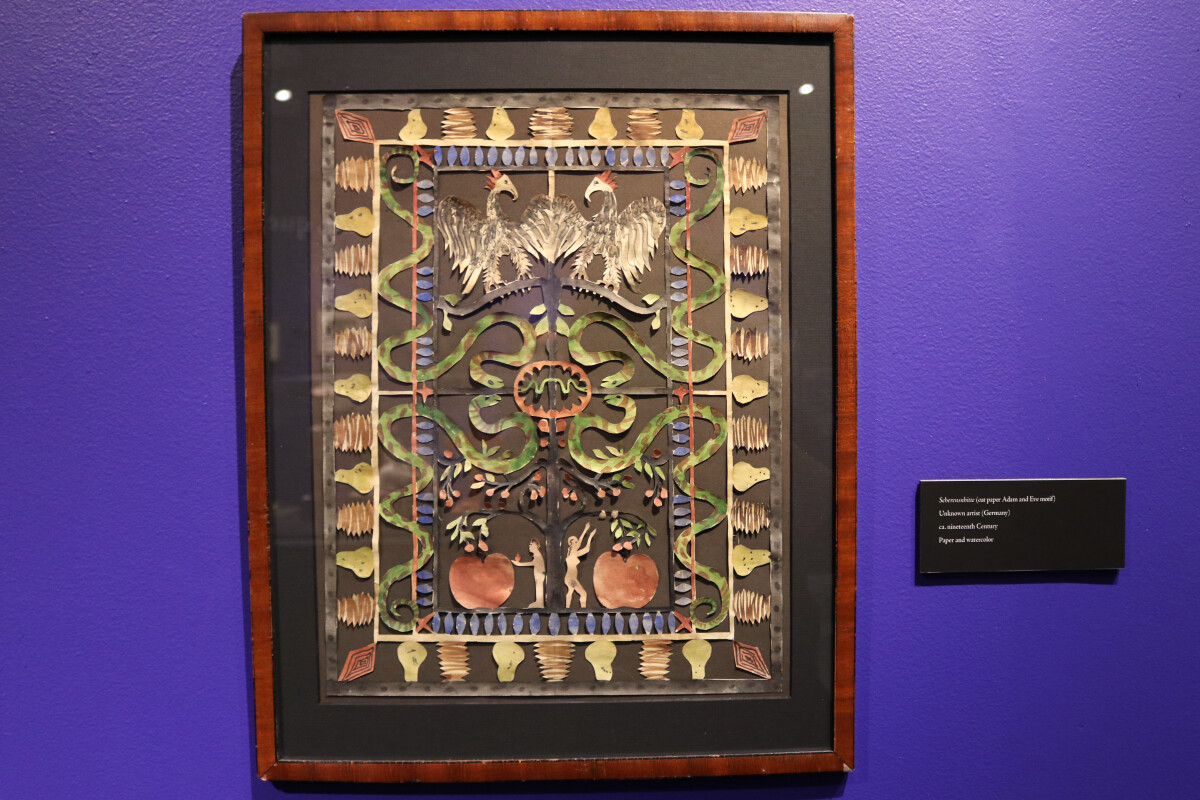
The Devil you Say!
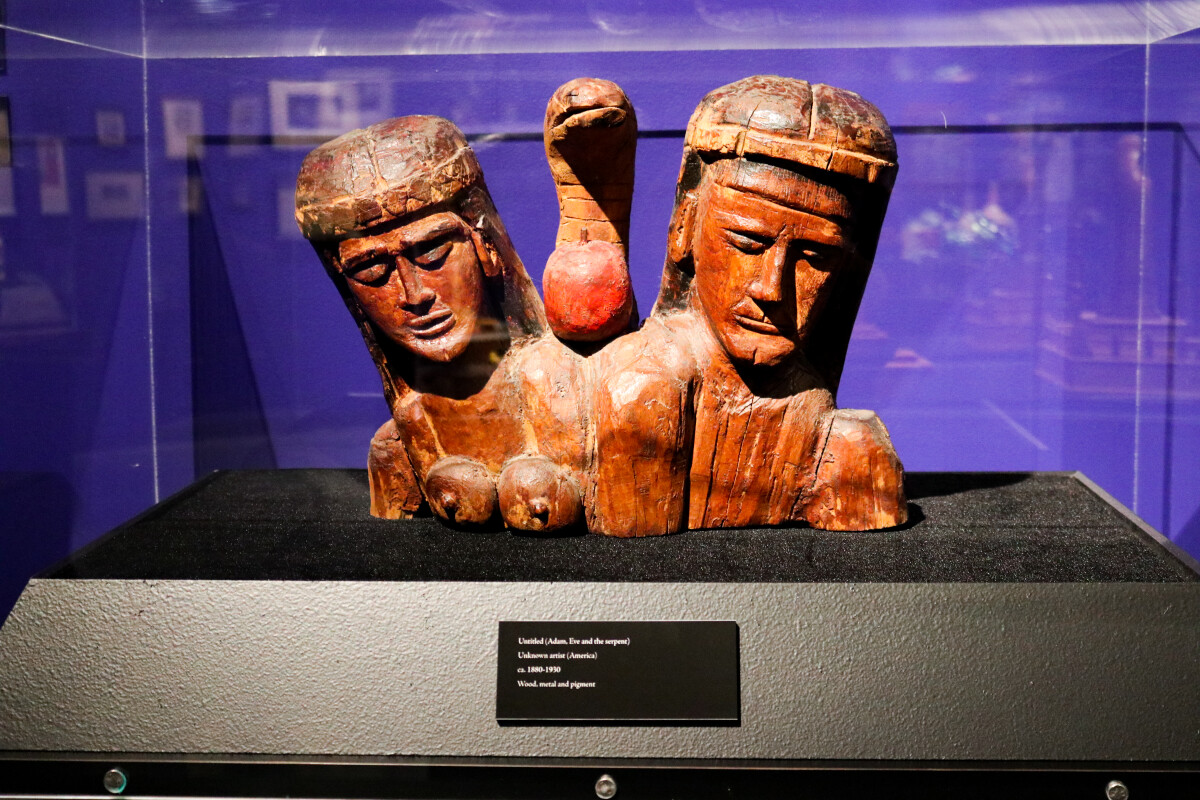
The Devil you Say!
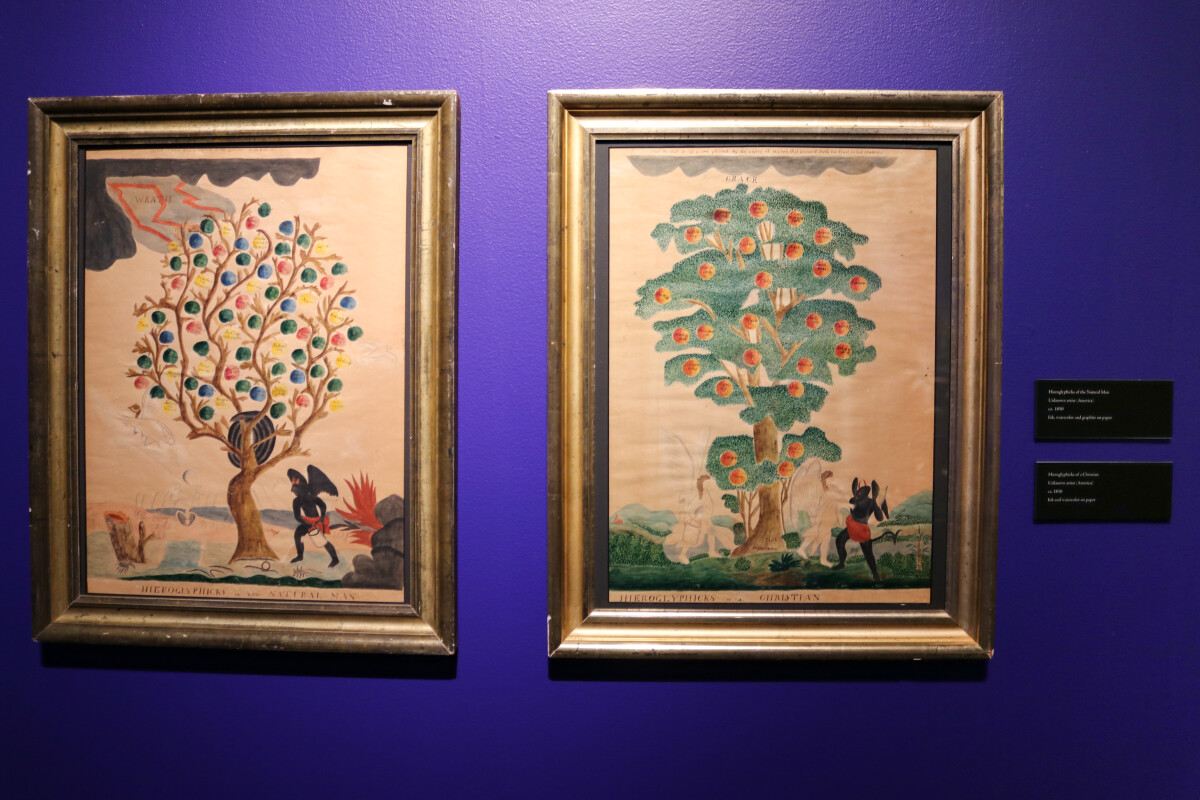
The Devil you Say!
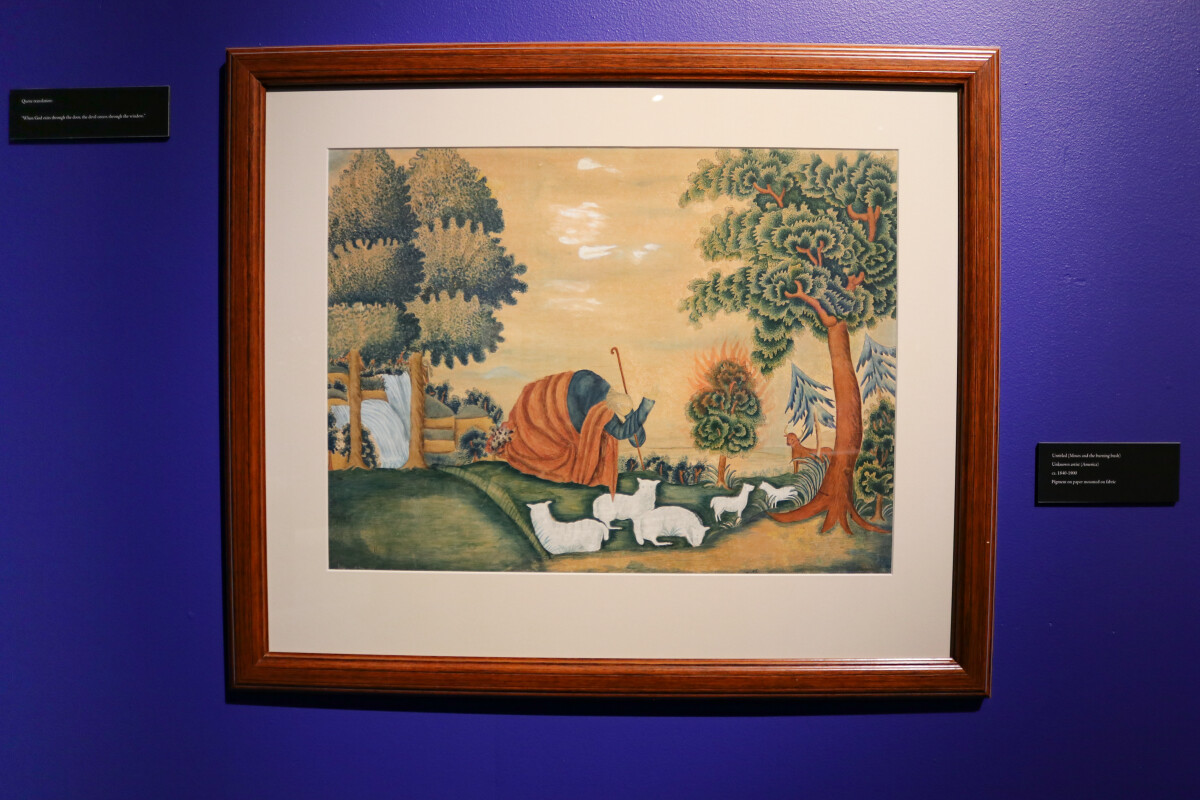
The Devil you Say!
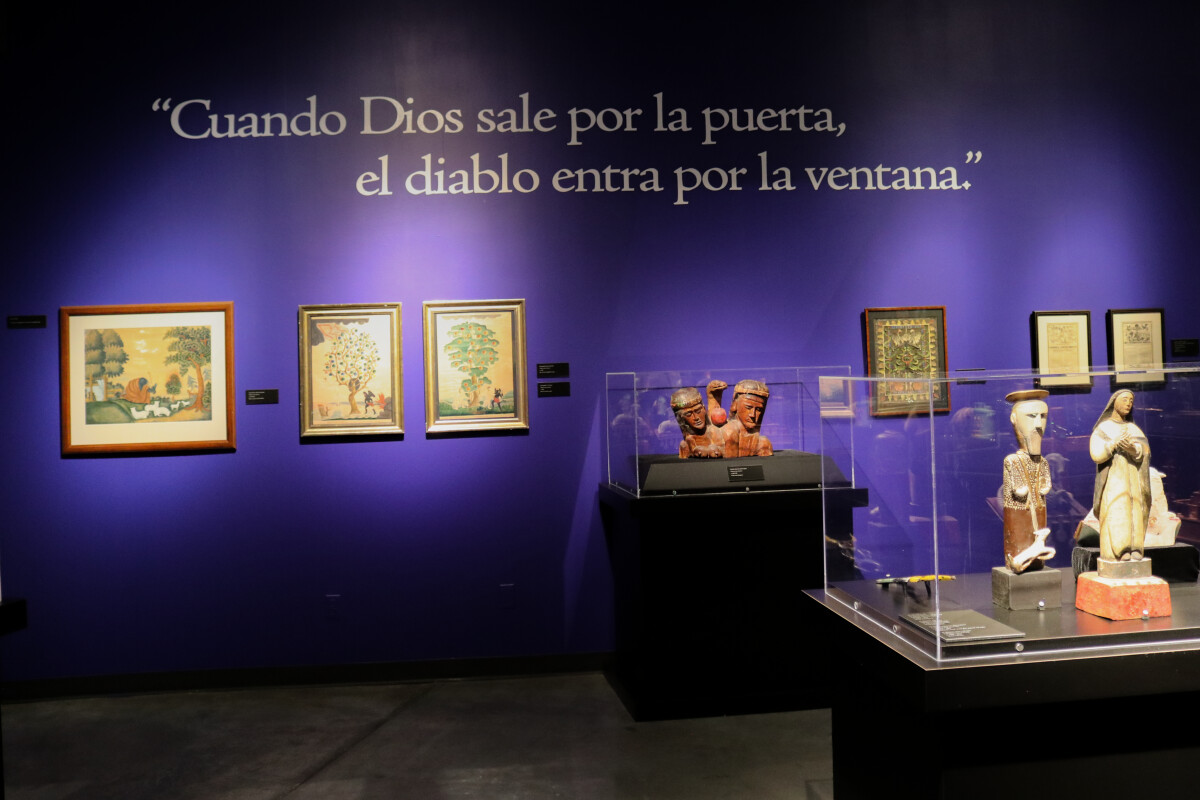
The Devil you Say!
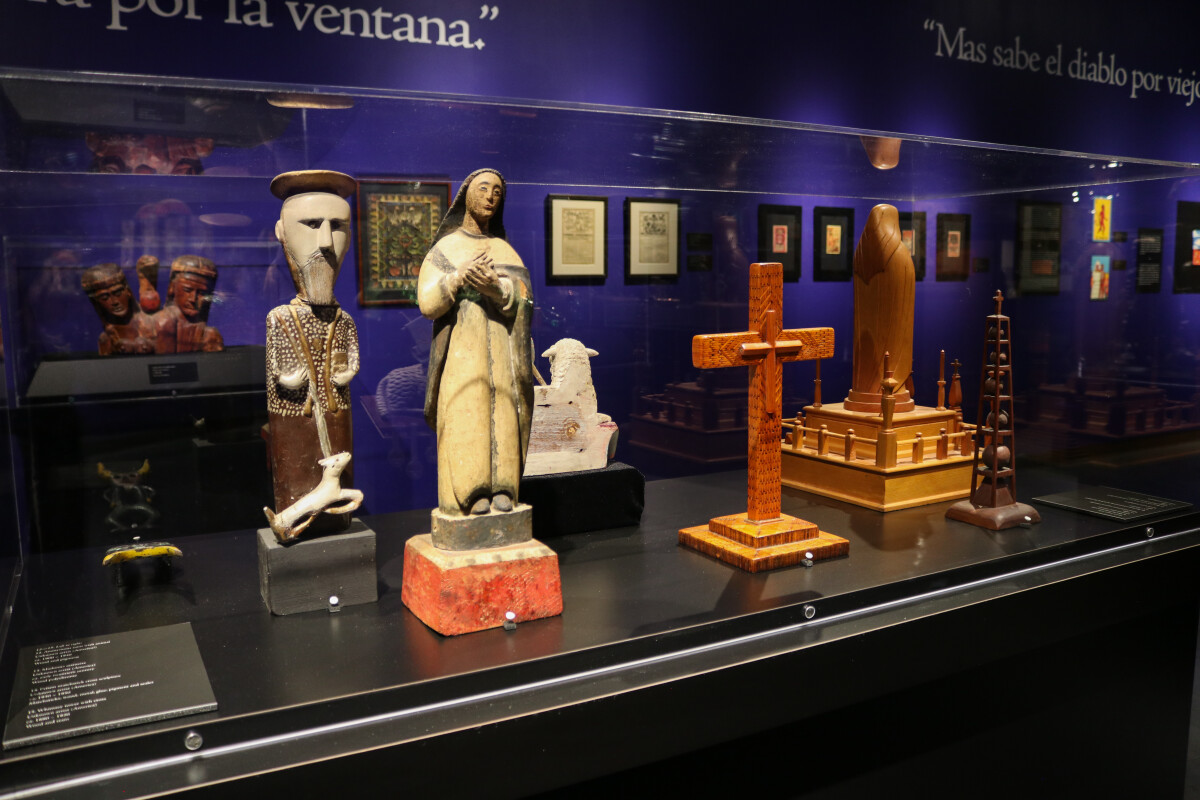
The Devil you Say!
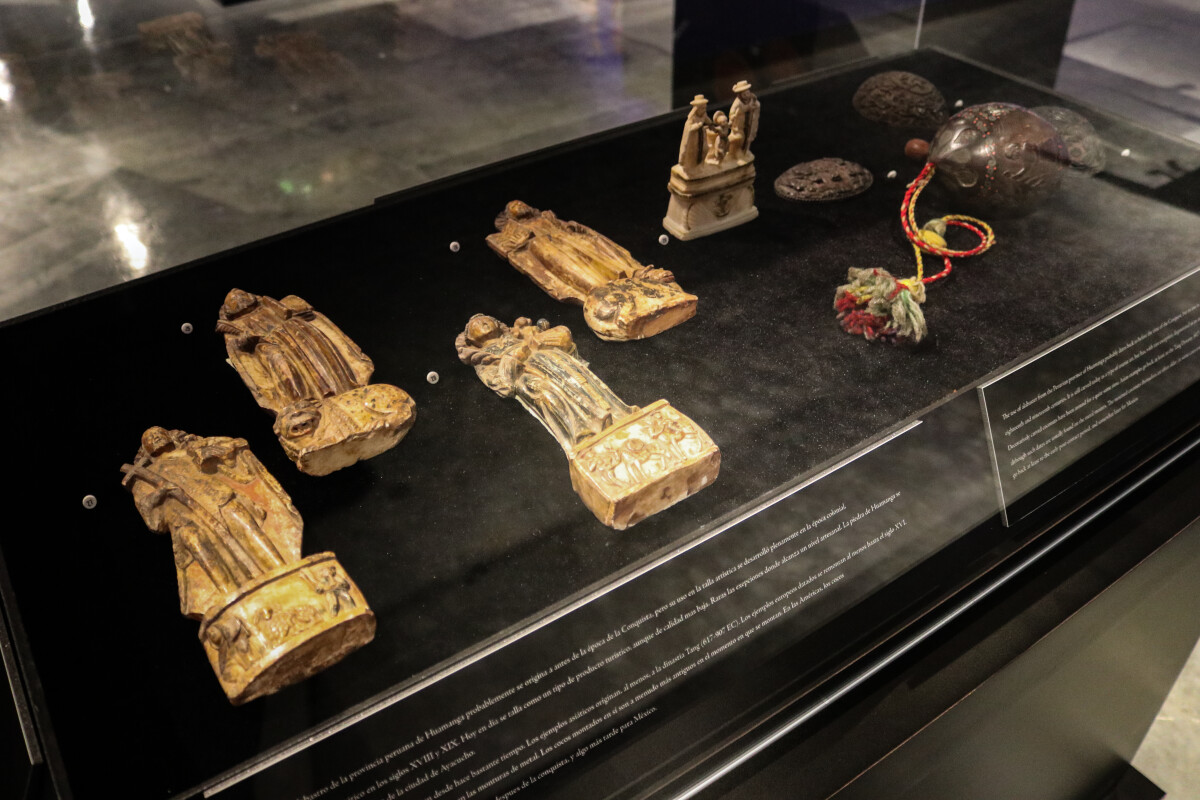
The Devil you Say!
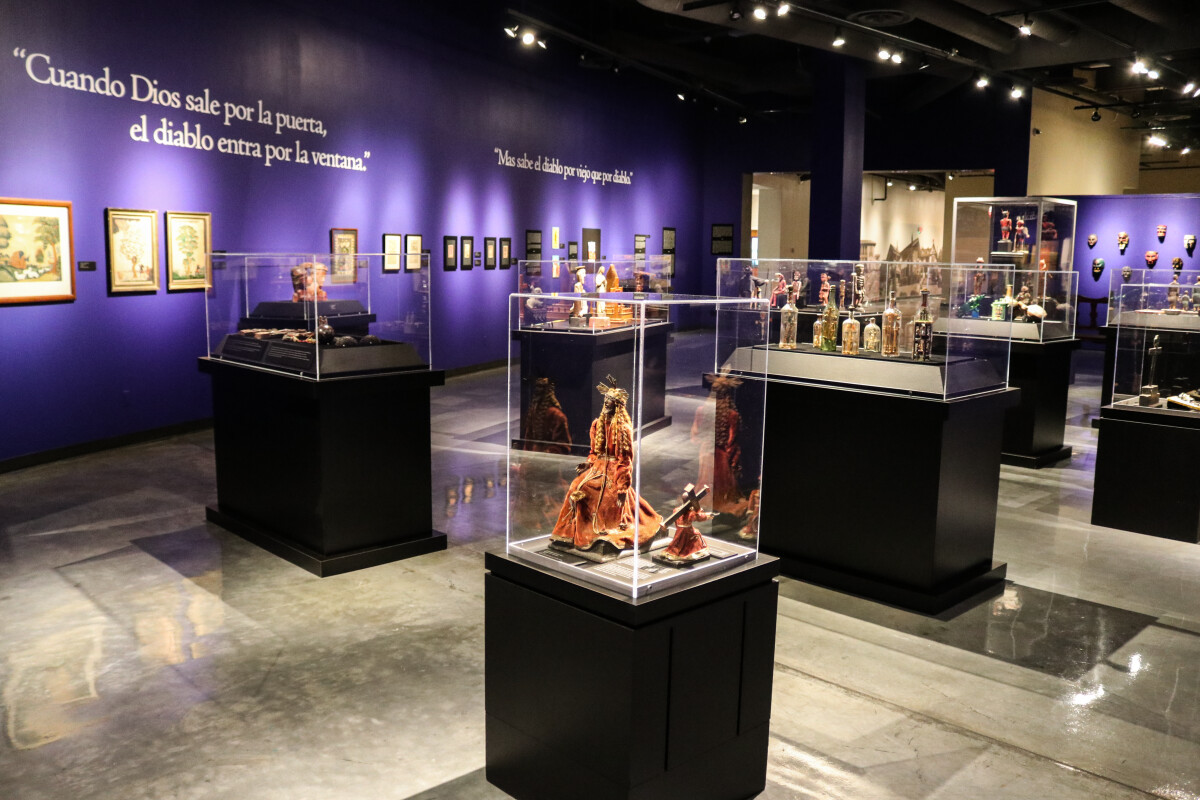
The Devil you Say!
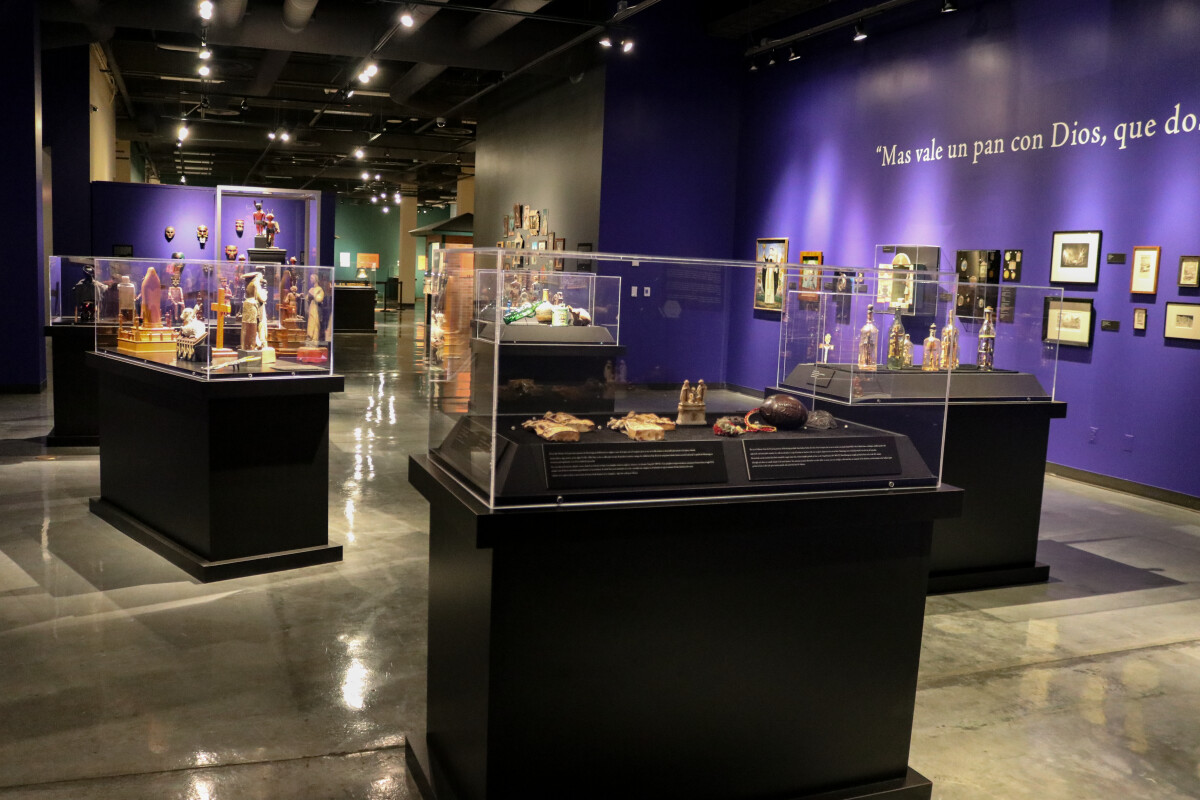
The Devil you Say!
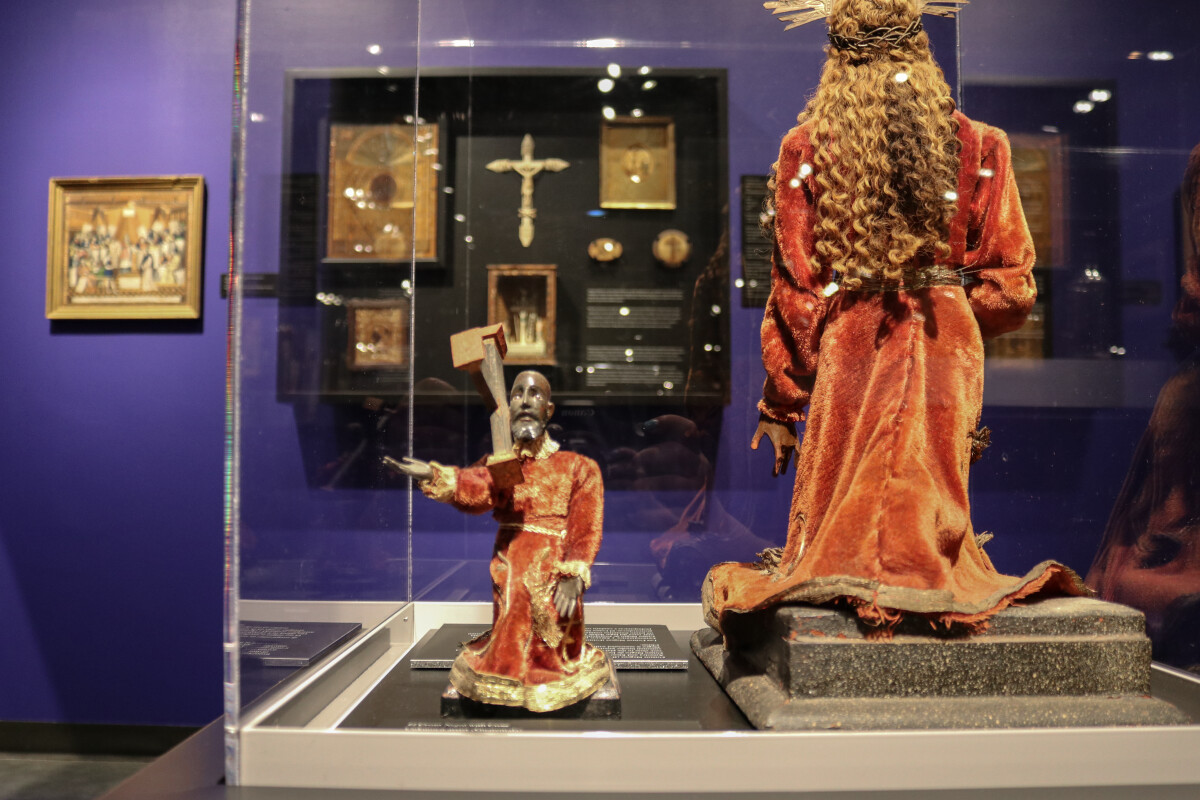
The Devil you Say!
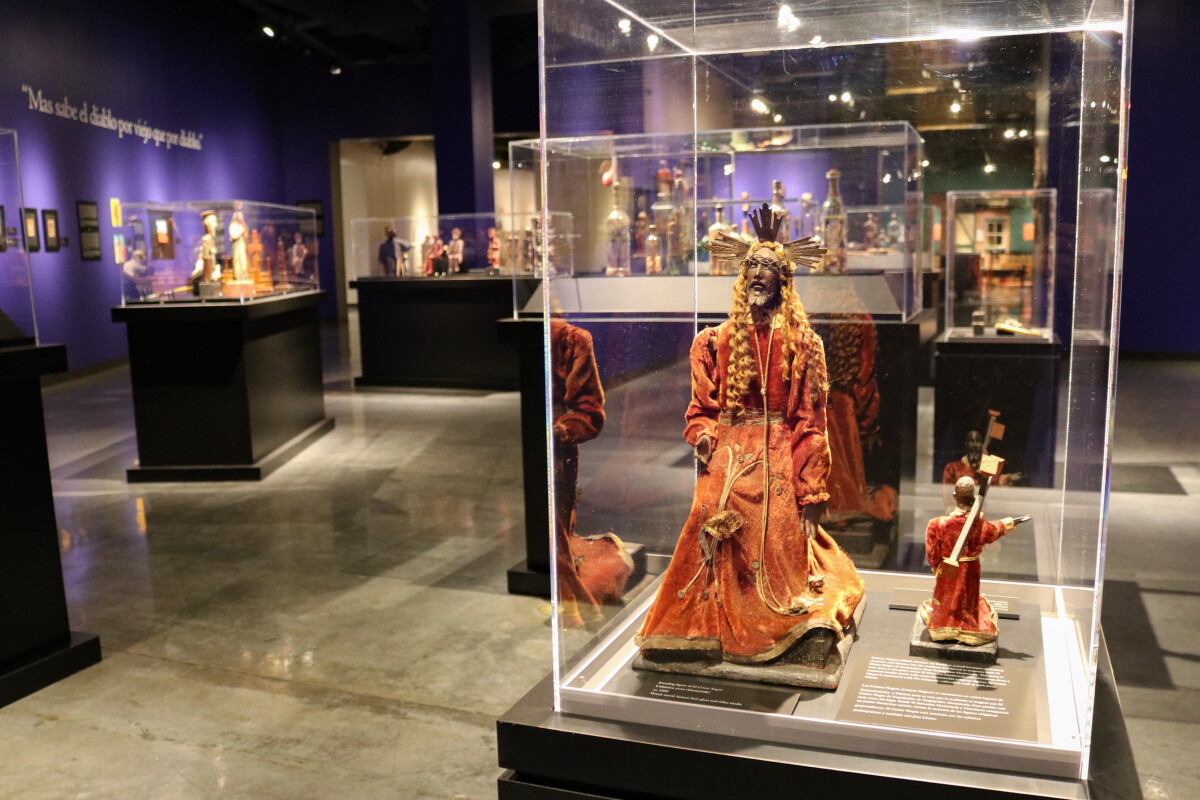
The Devil you Say!
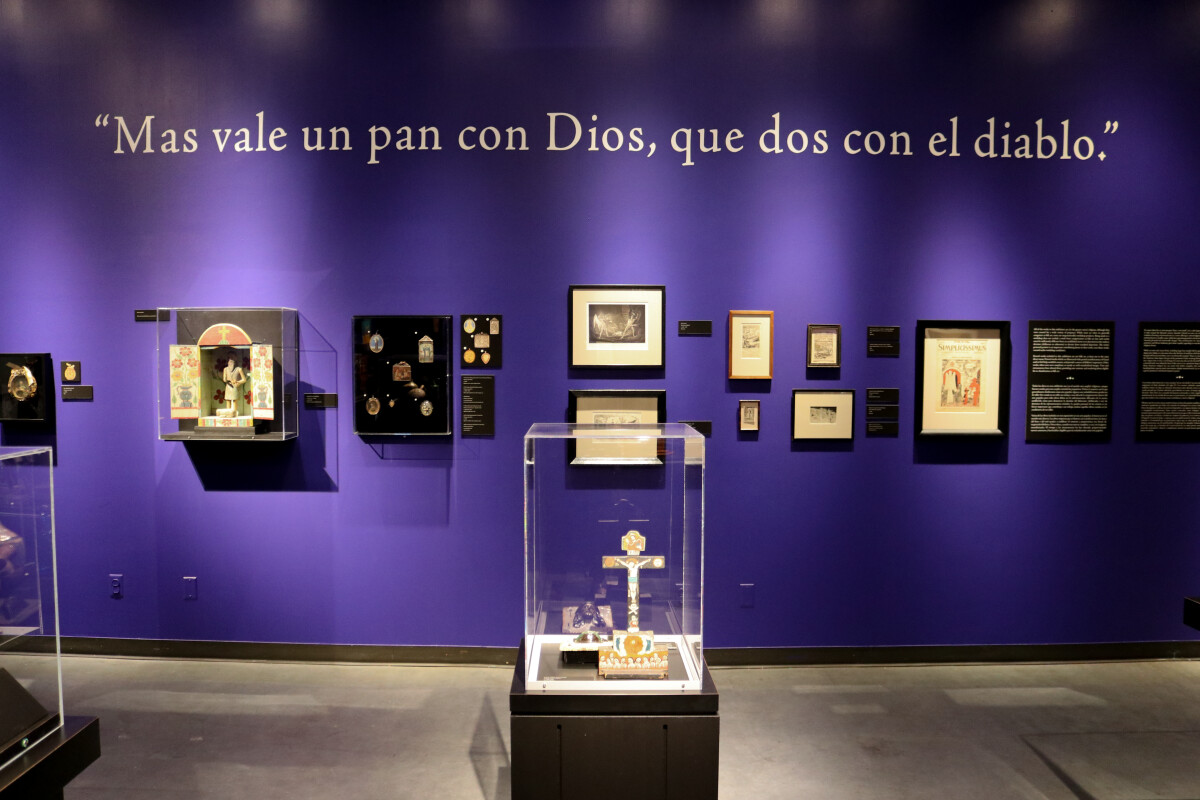
The Devil you Say!
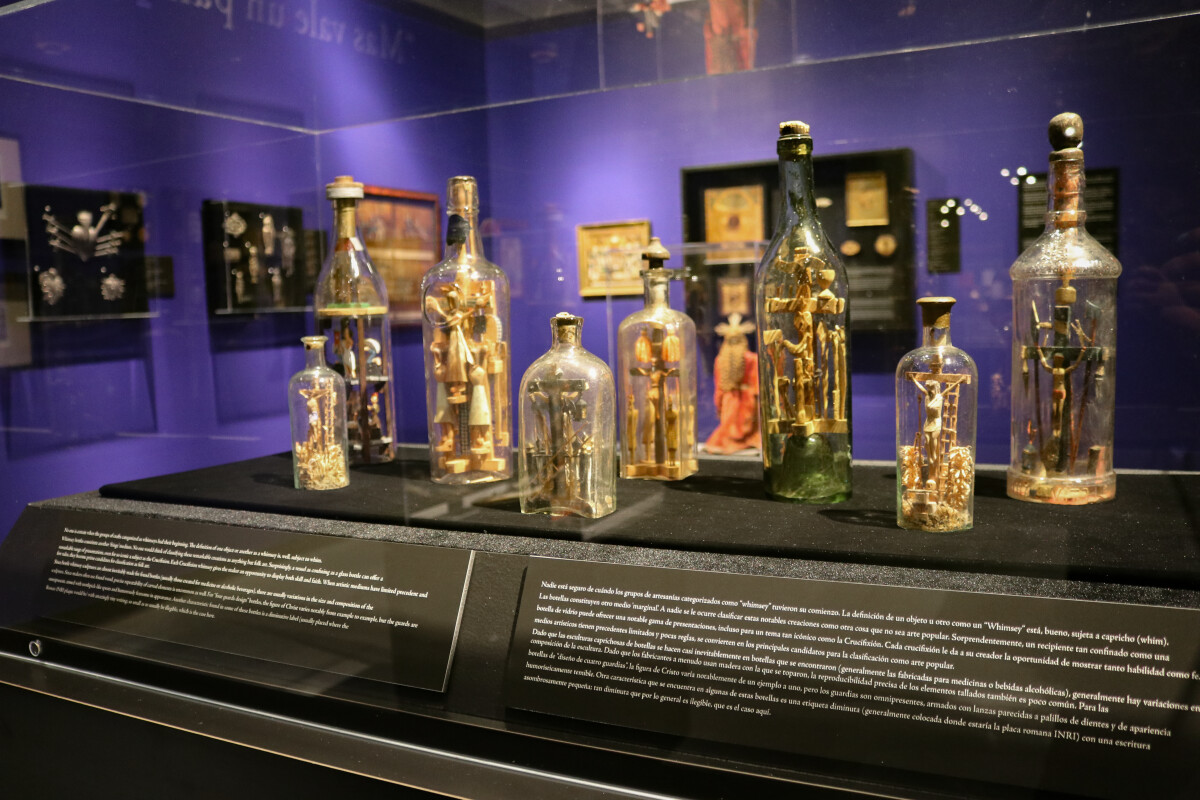
The Devil you Say!
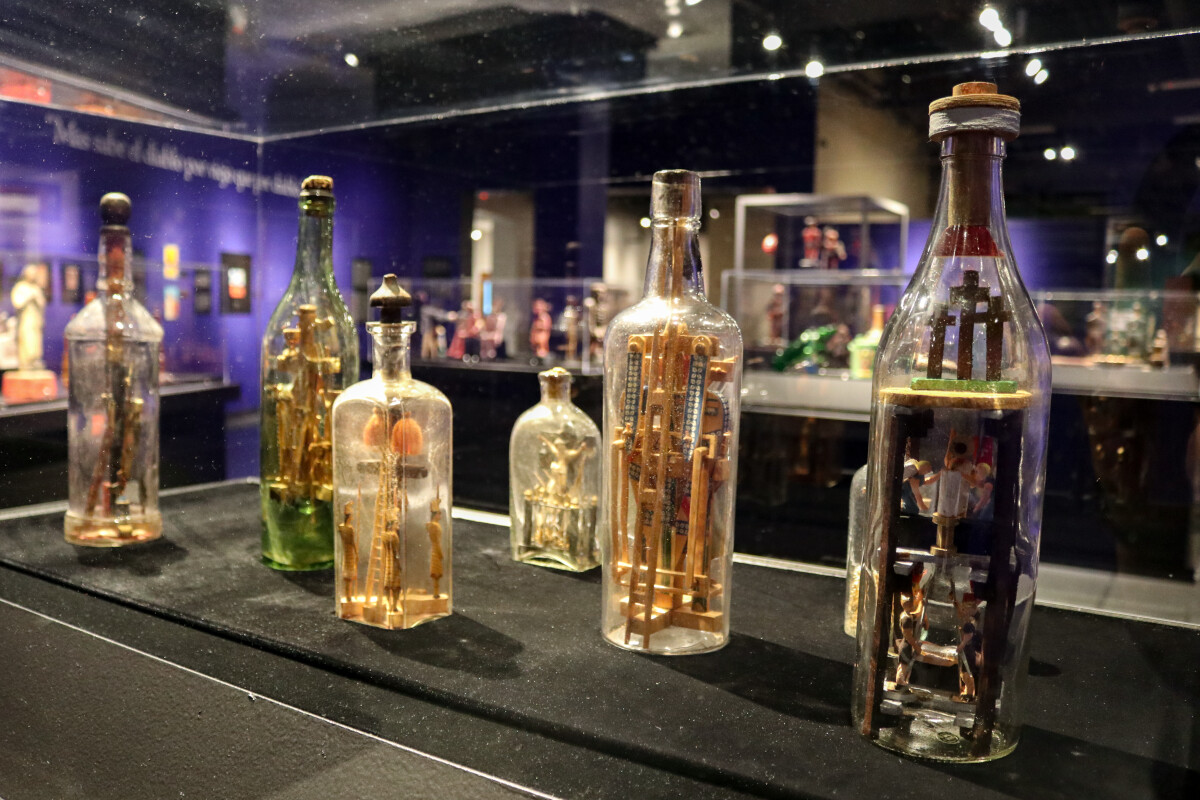
The Devil you Say!
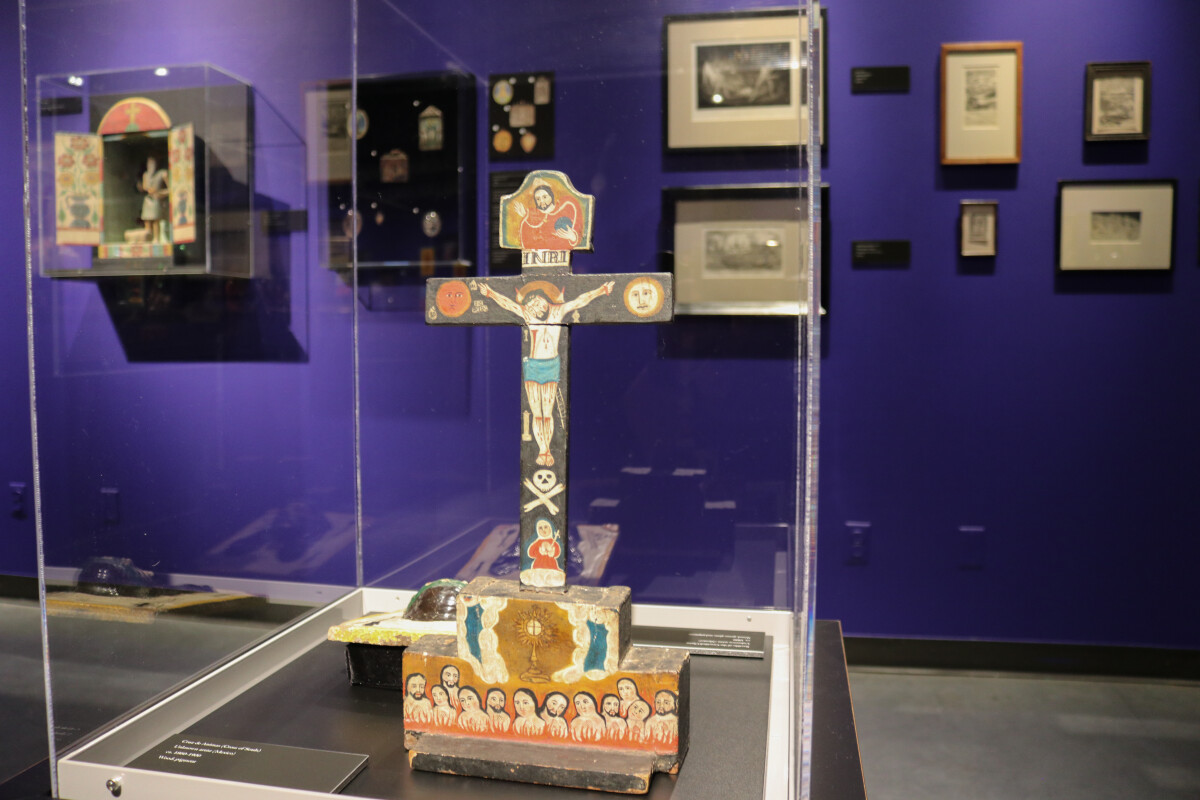
The Devil you Say!
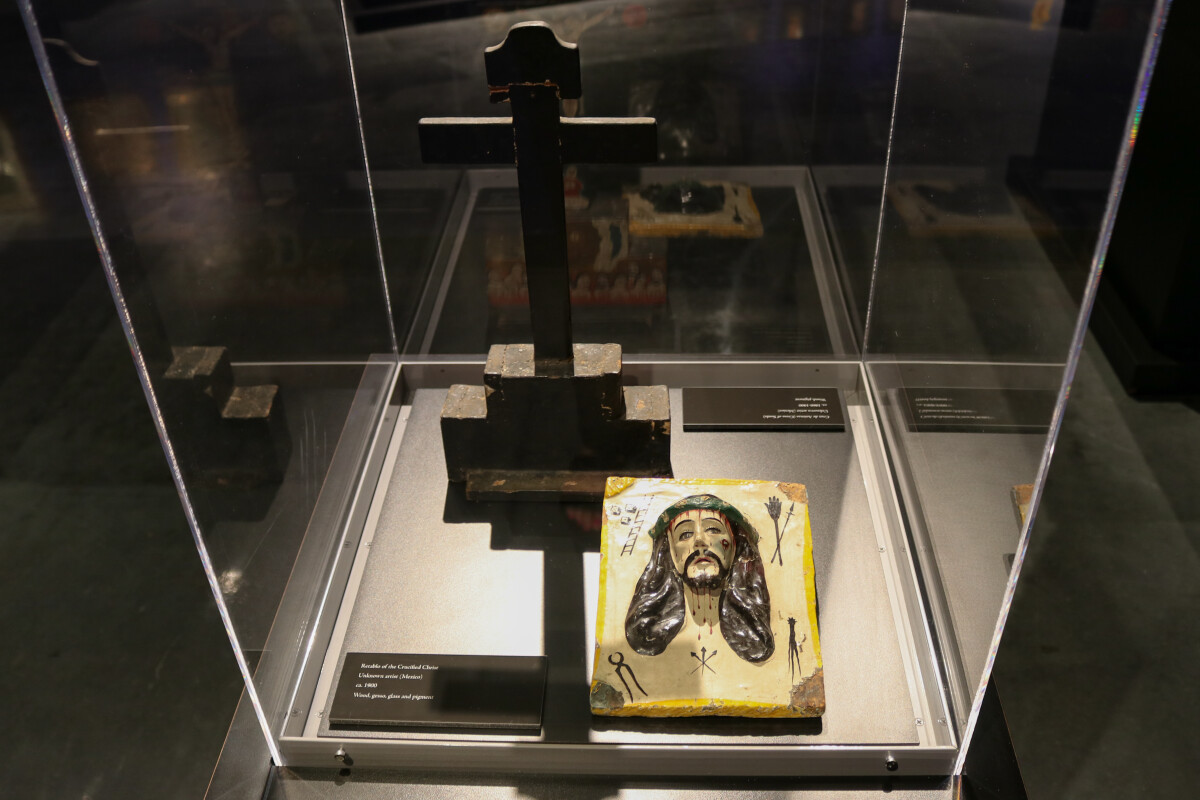
The Devil you Say!
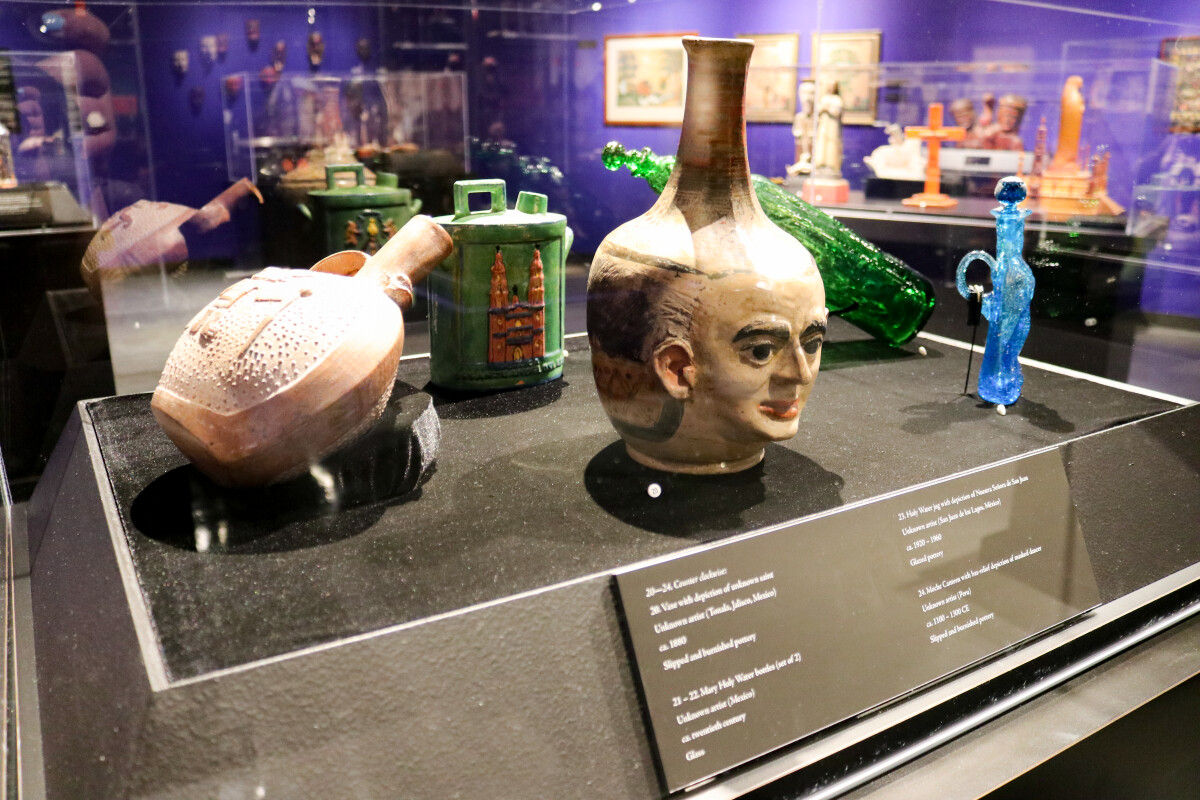
The Devil you Say!
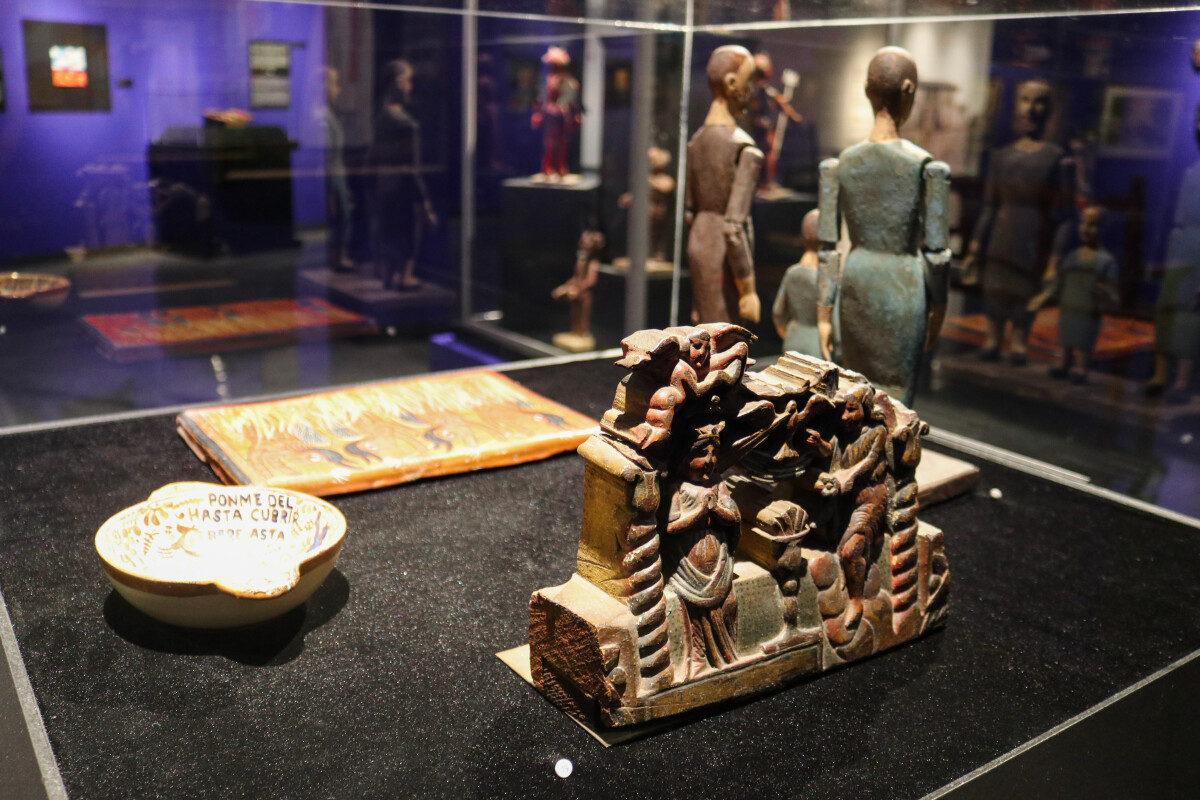
The Devil you Say!
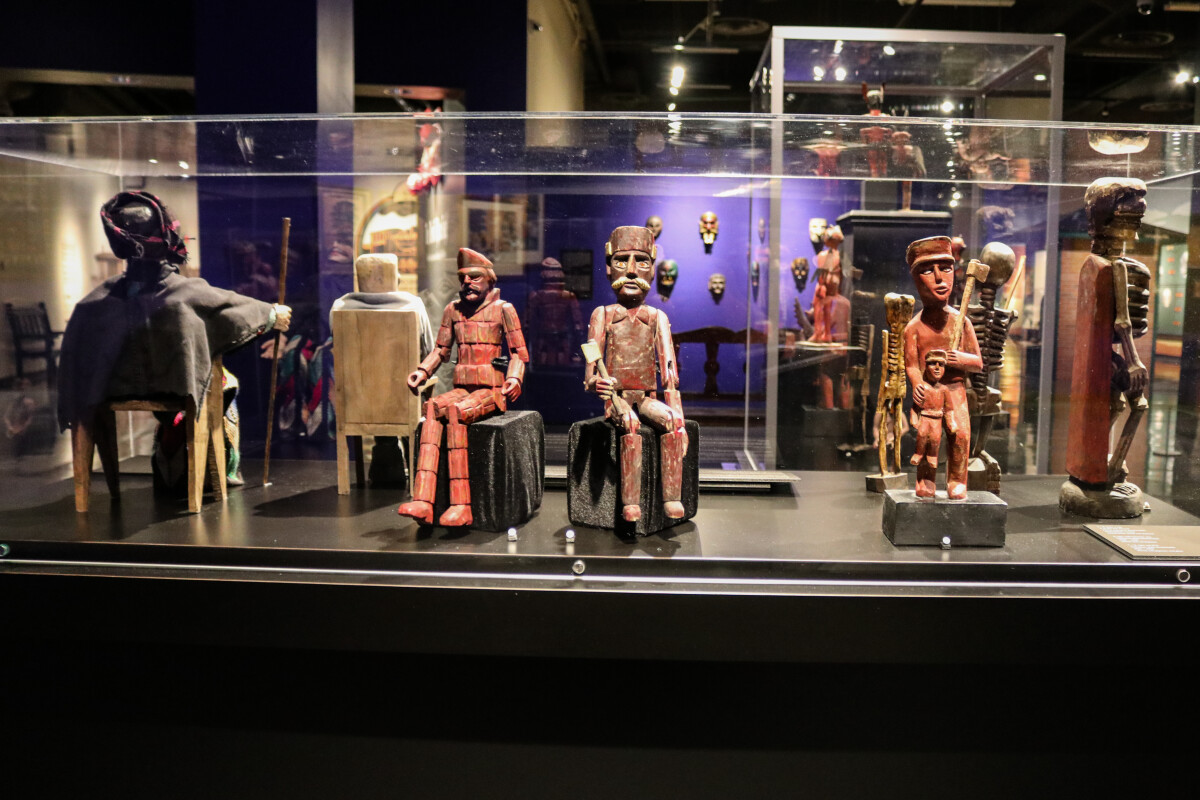
The Devil you Say!
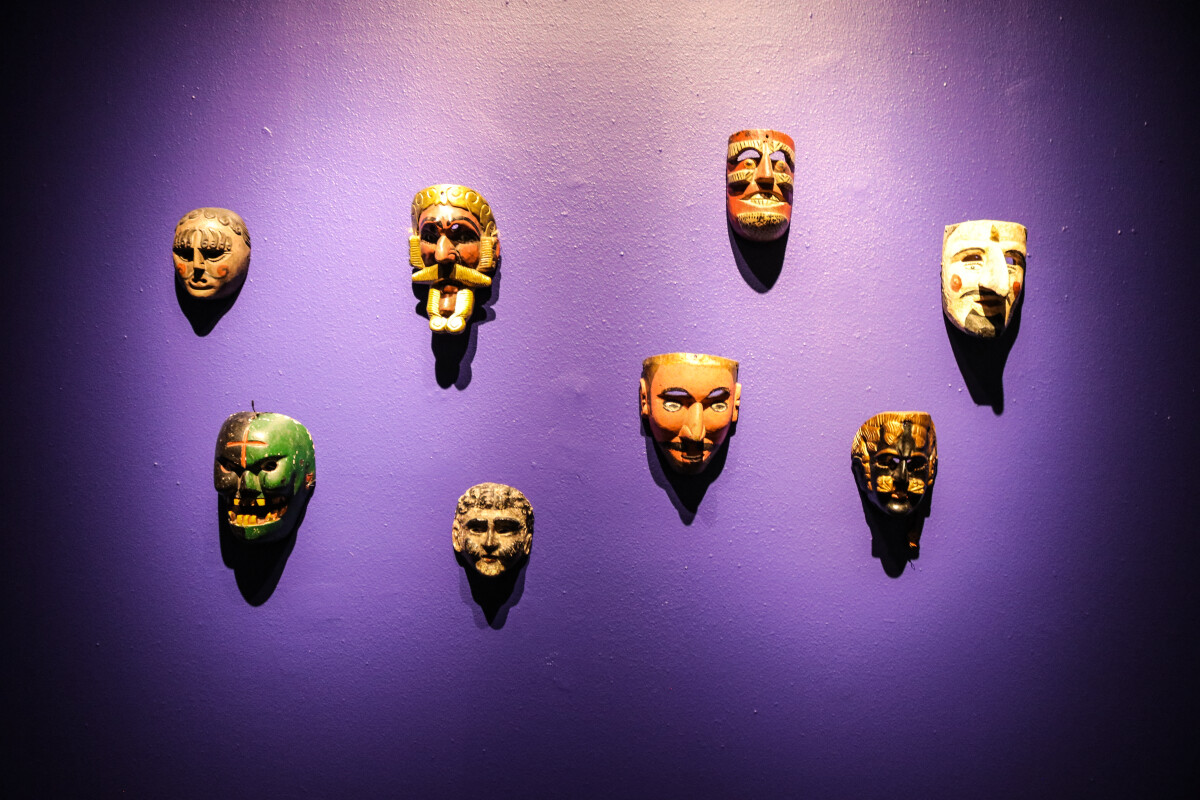
The Devil you Say!
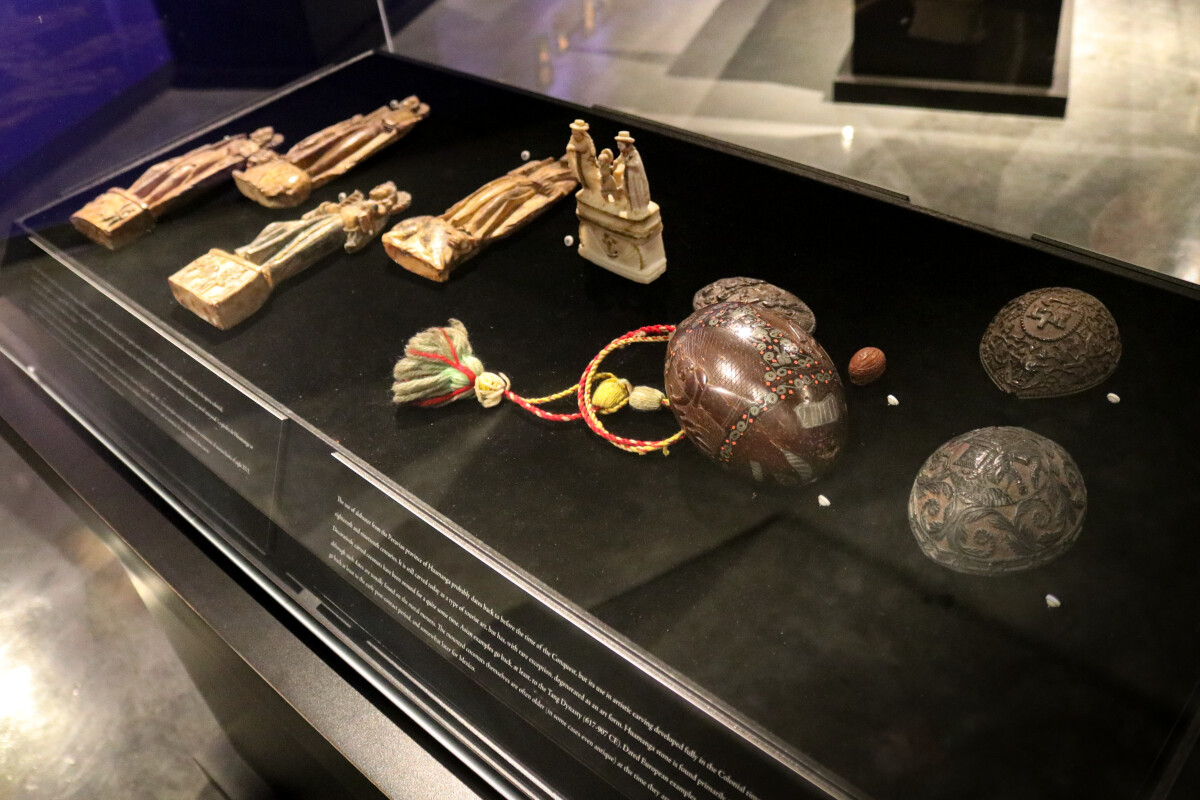
The Devil you Say!
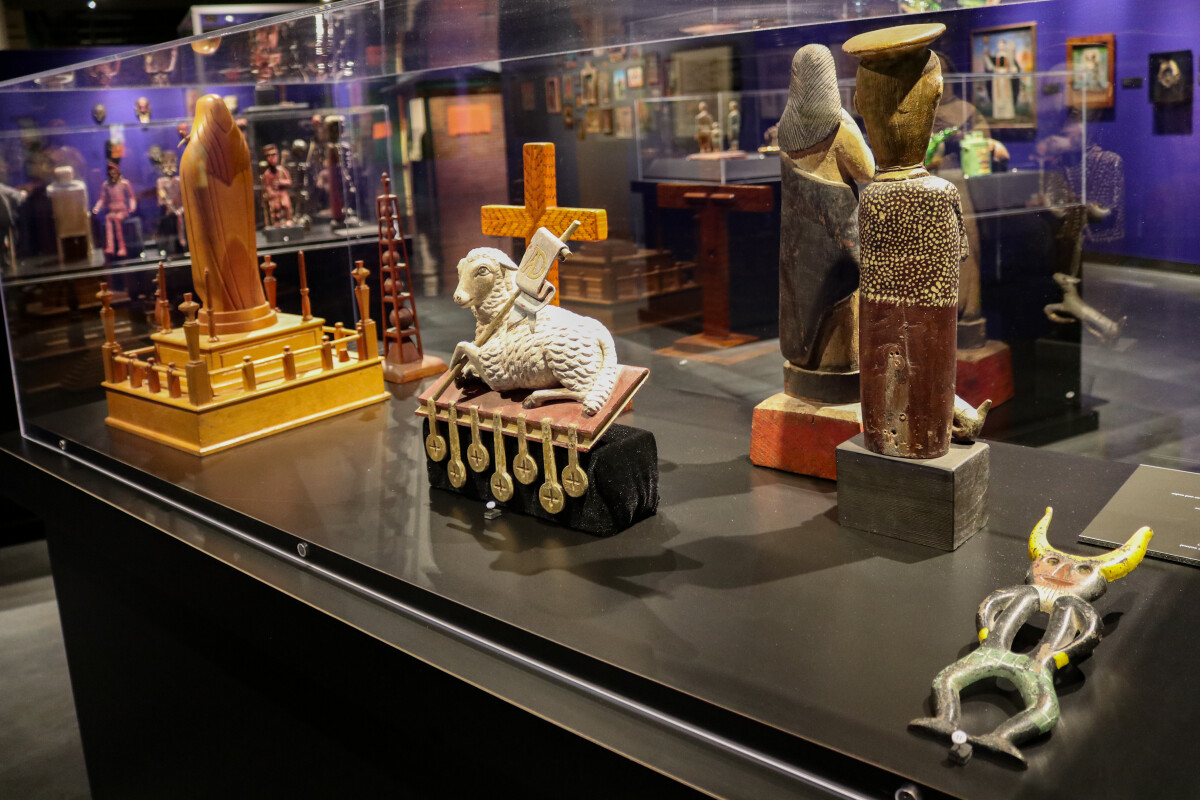
The Devil you Say!
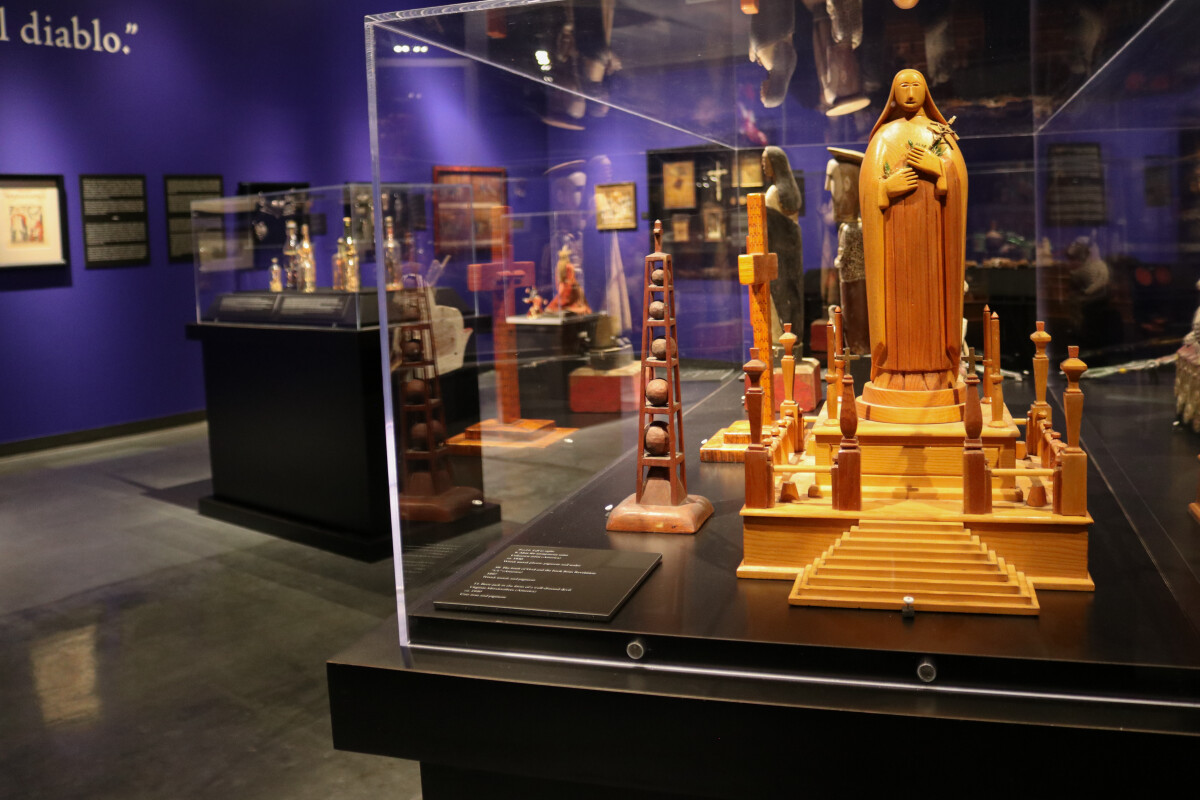
The Devil you Say!
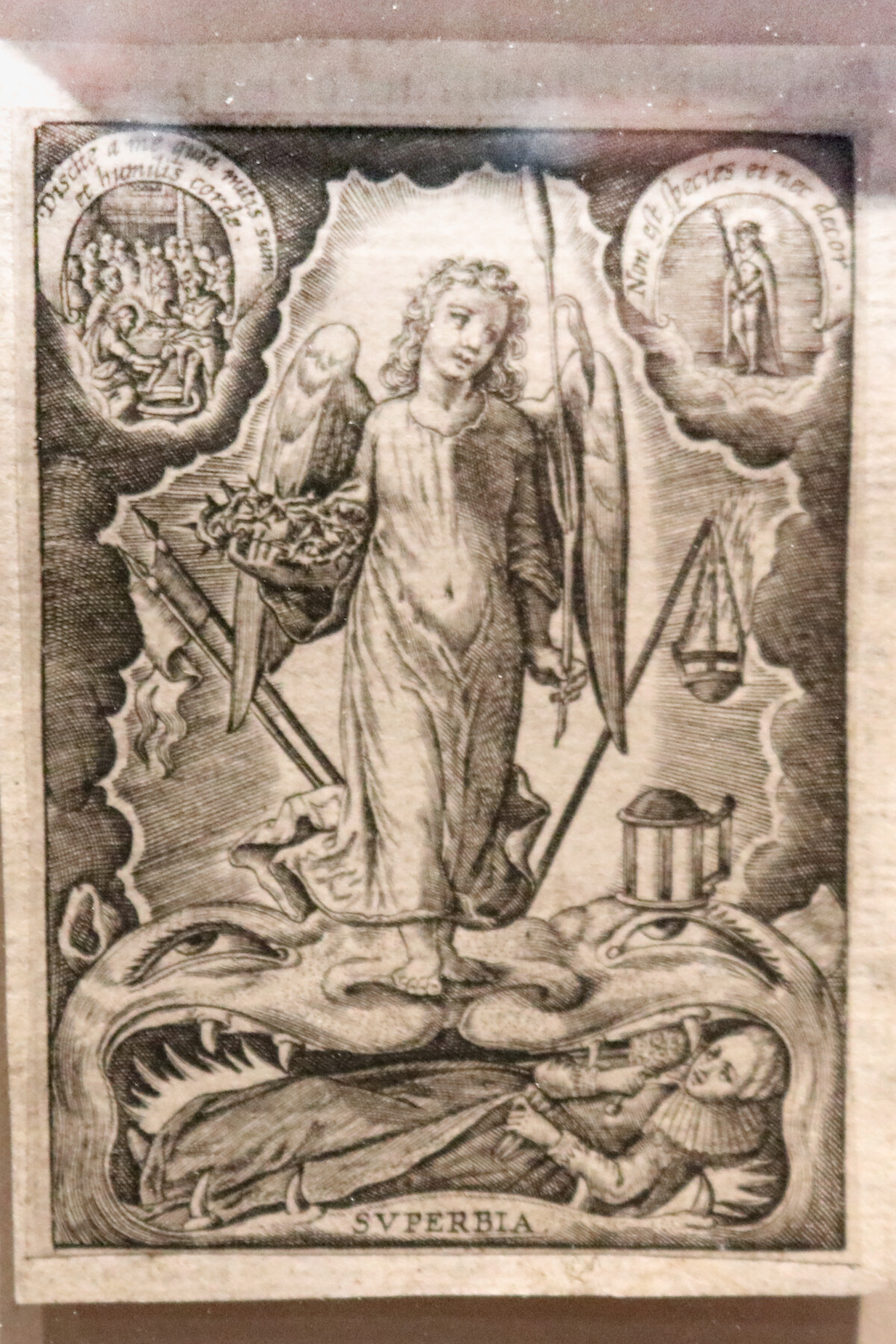
The Devil you Say!
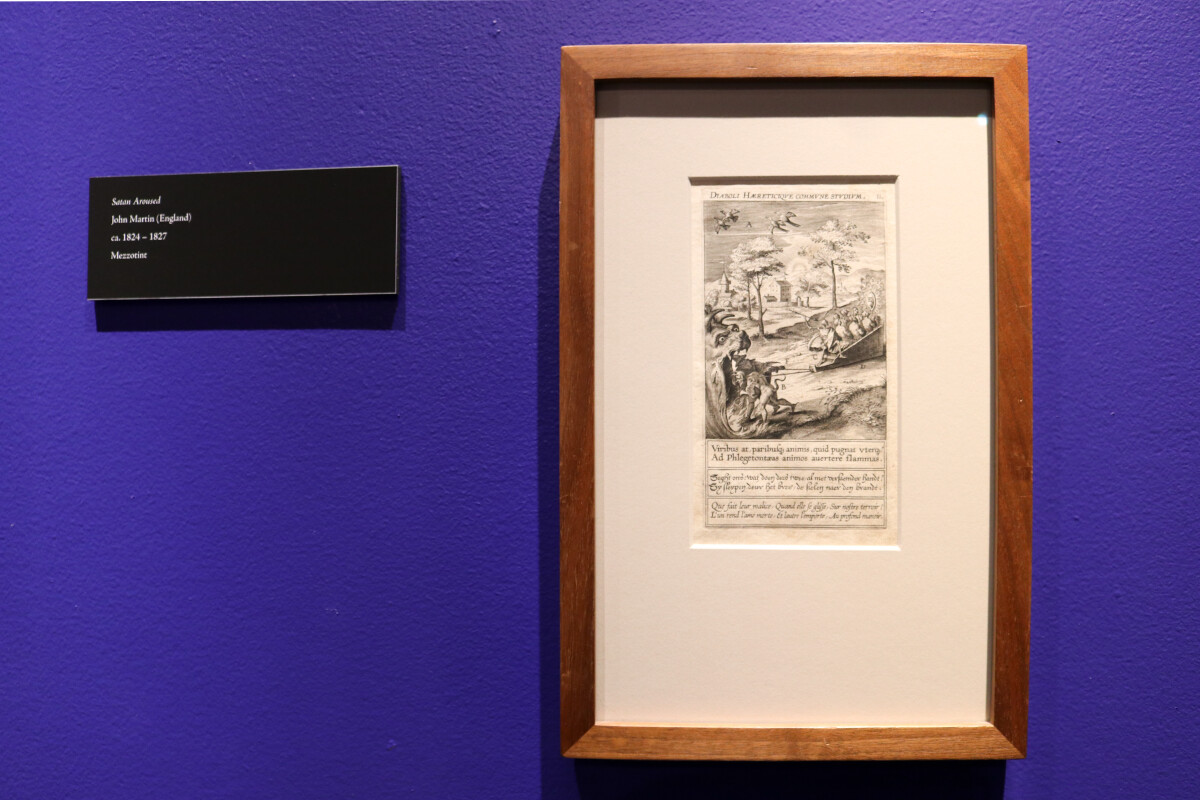
The Devil you Say!
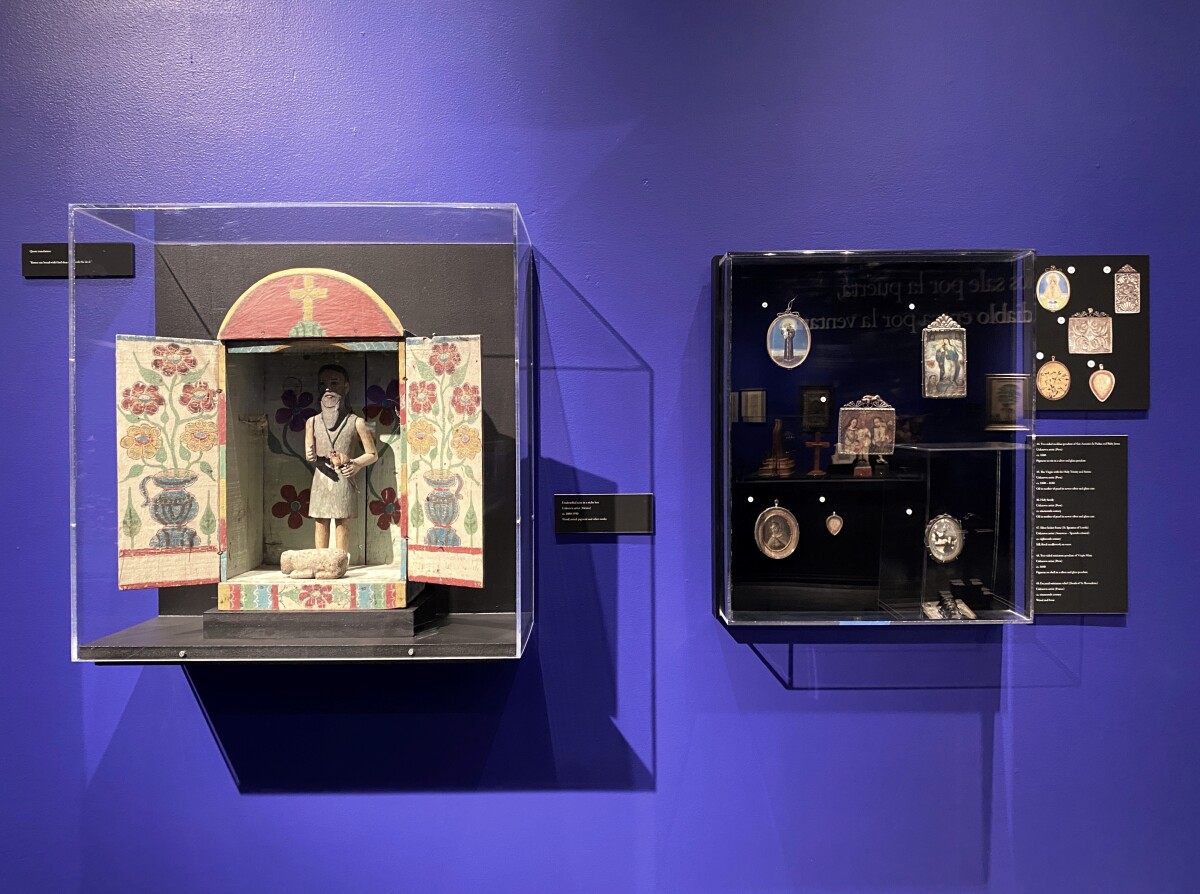
The Devil you Say!
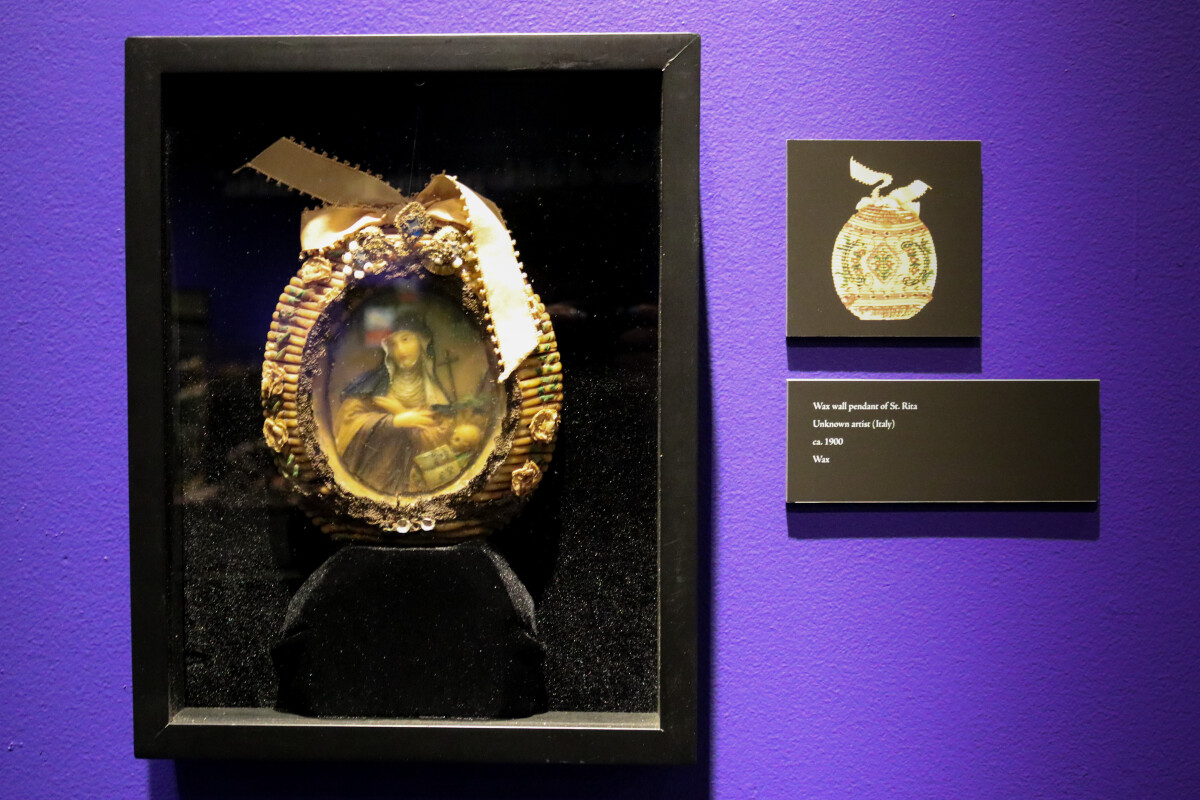
The Devil you Say!
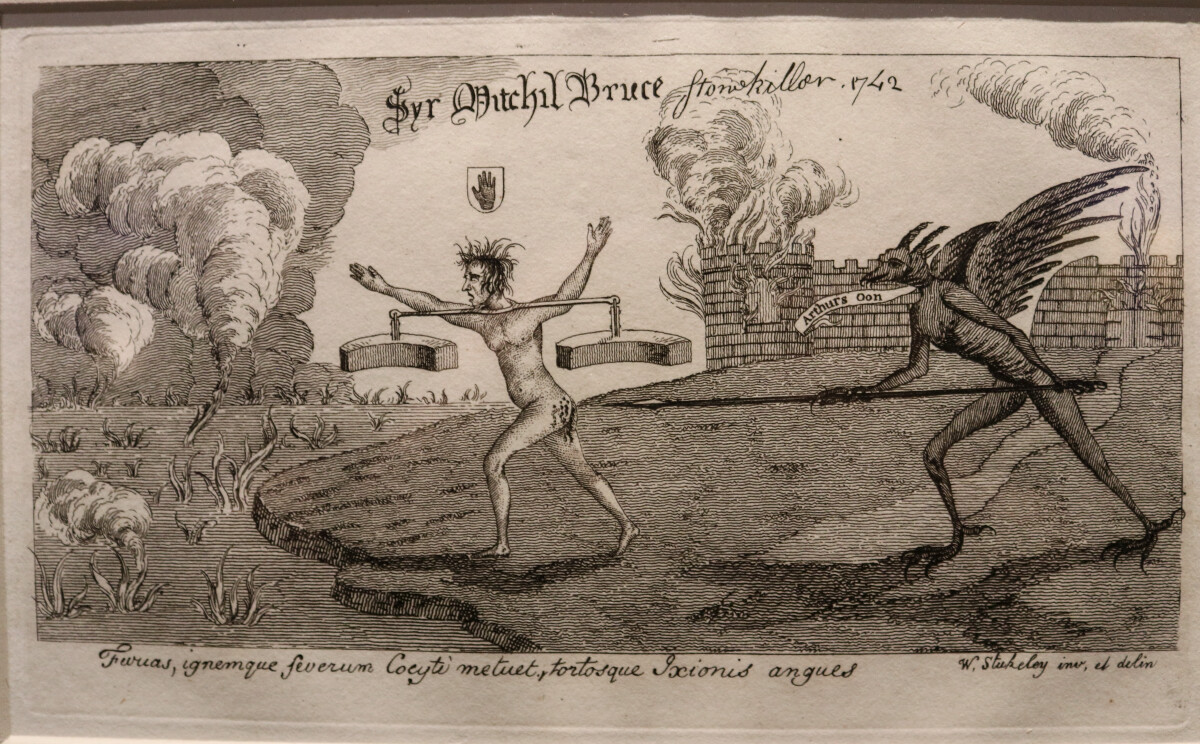
The Devil you Say!
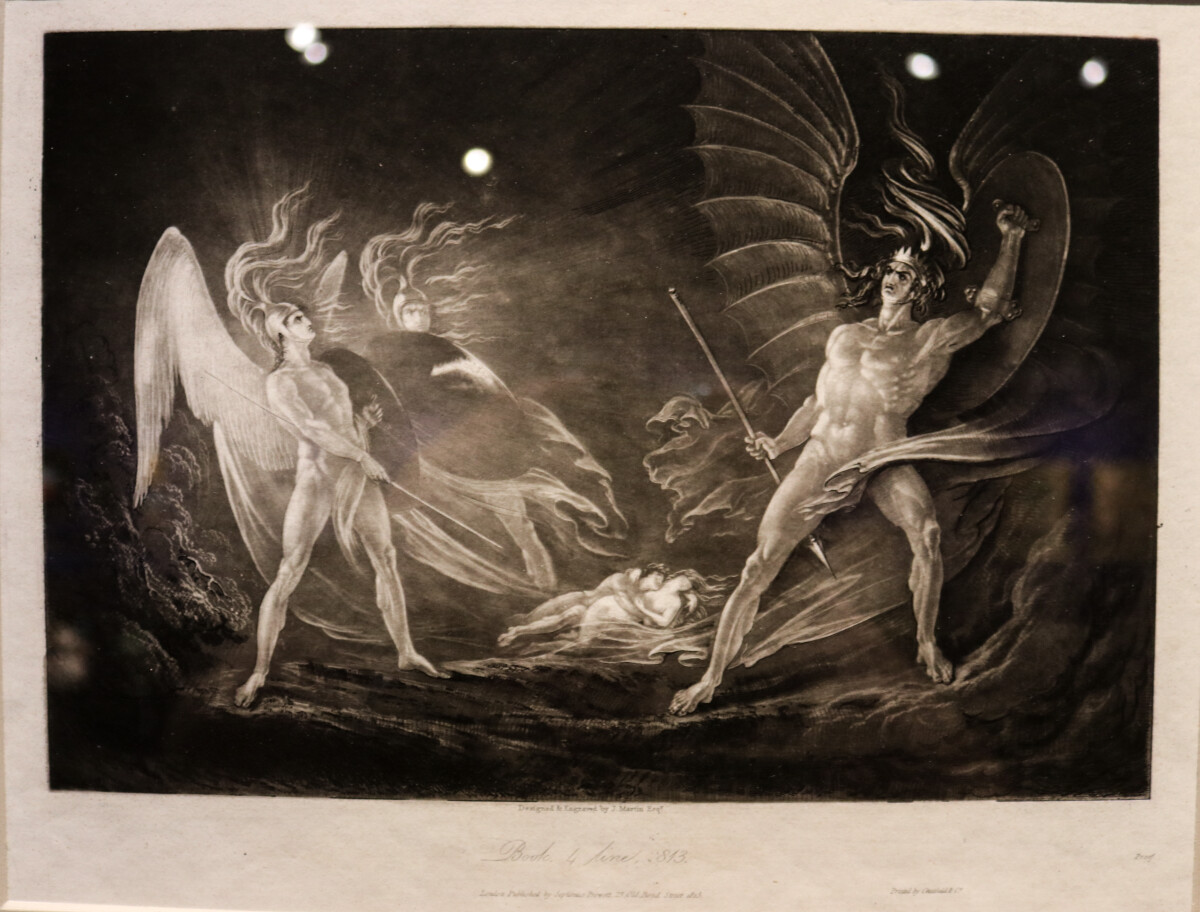
The Devil you Say!
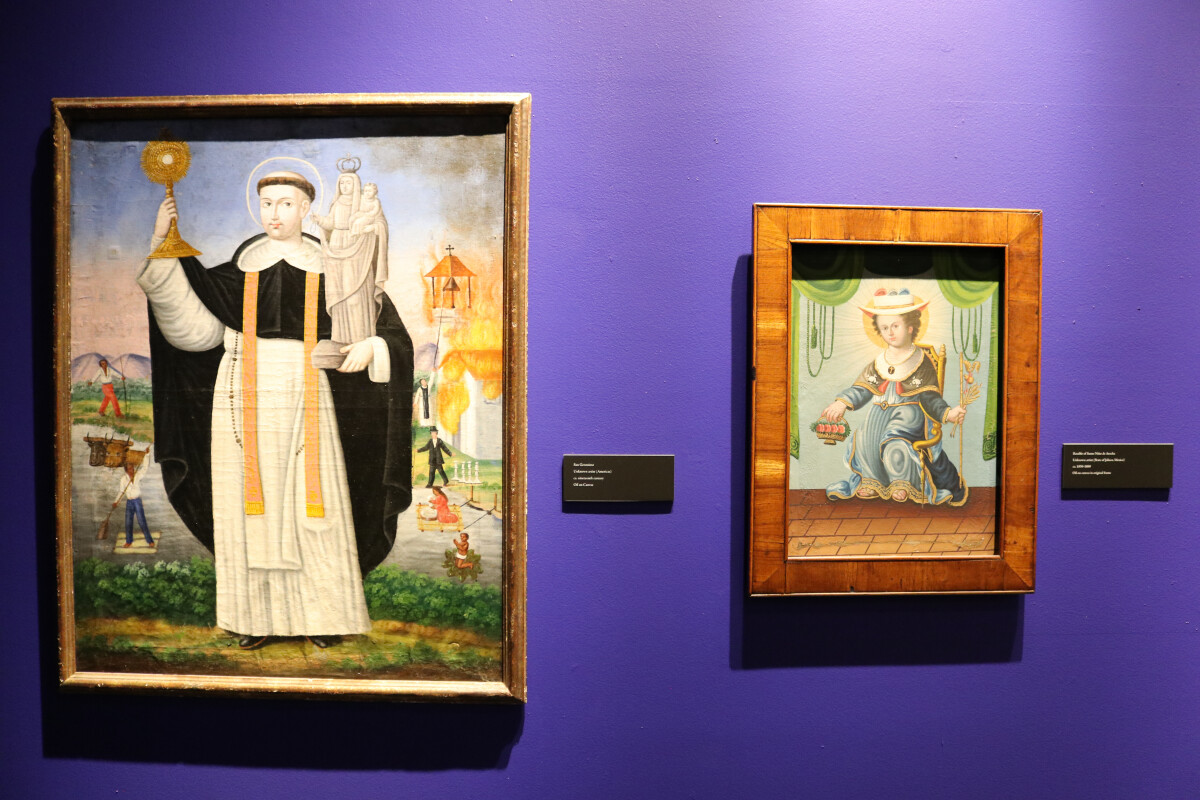
The Devil you Say!
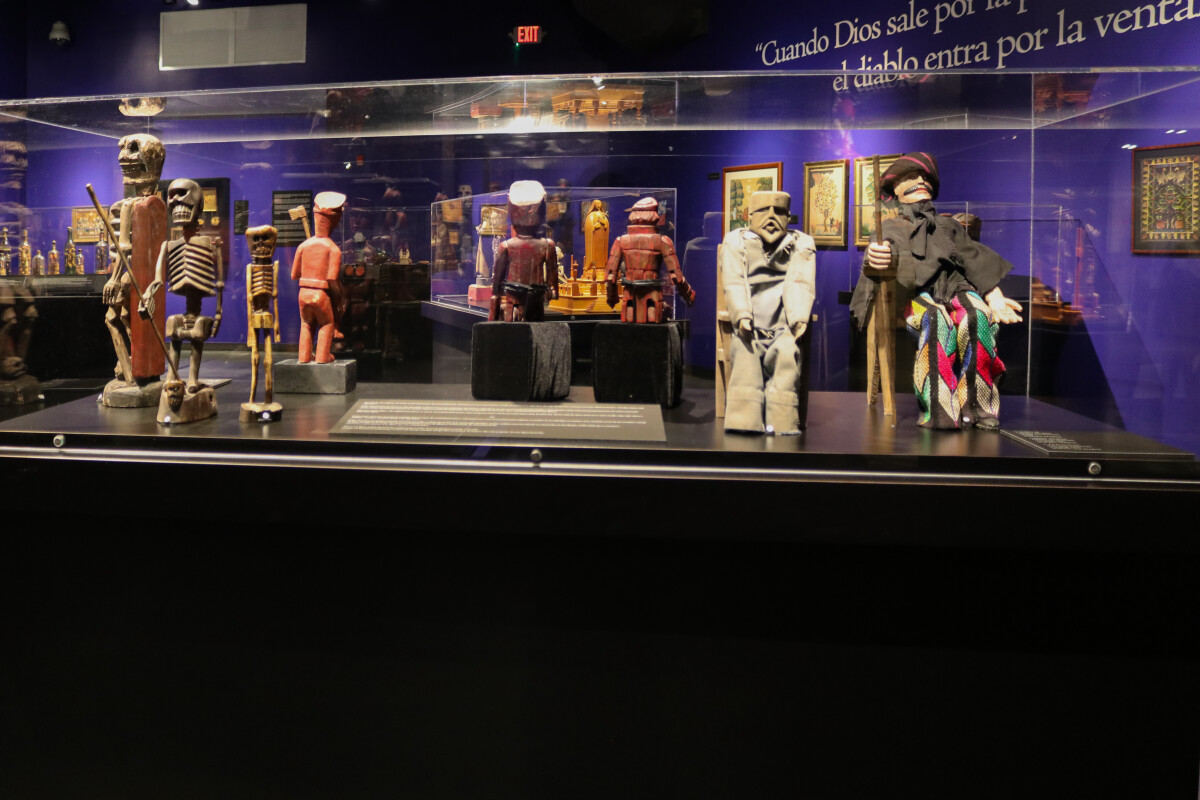
The Devil you Say!
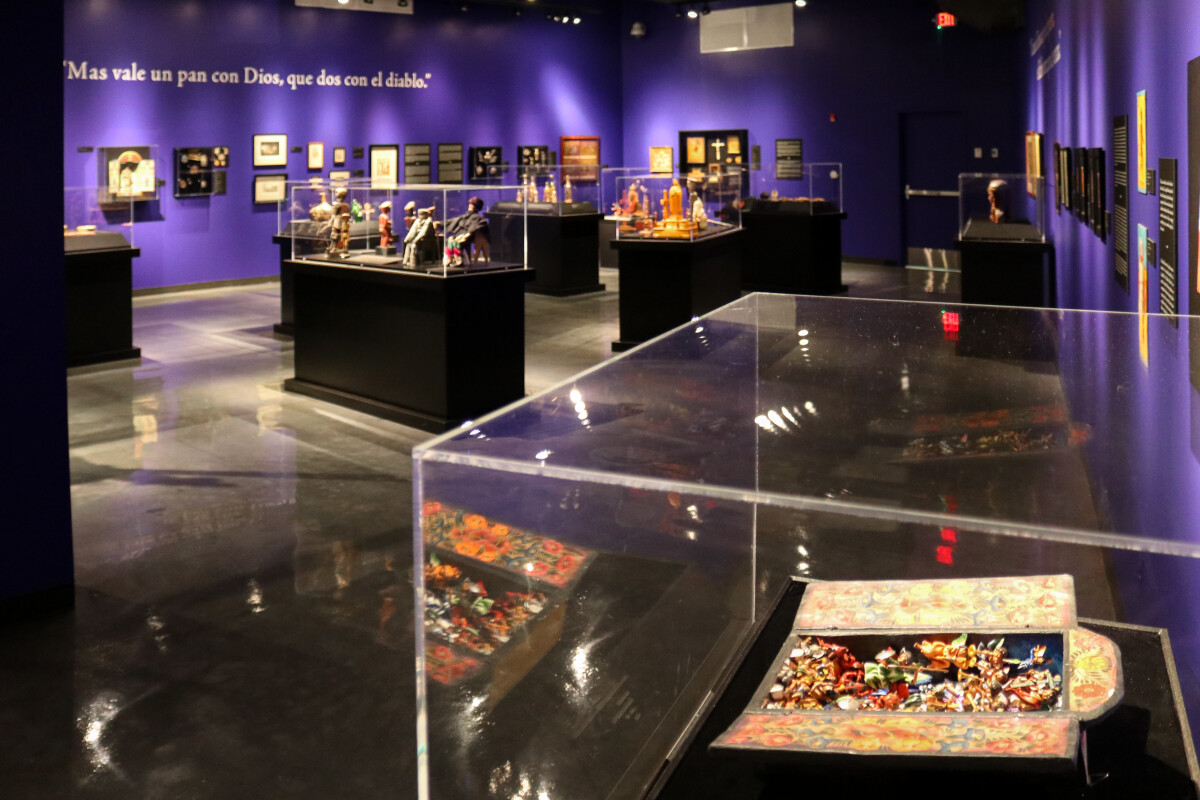
The Devil you Say!
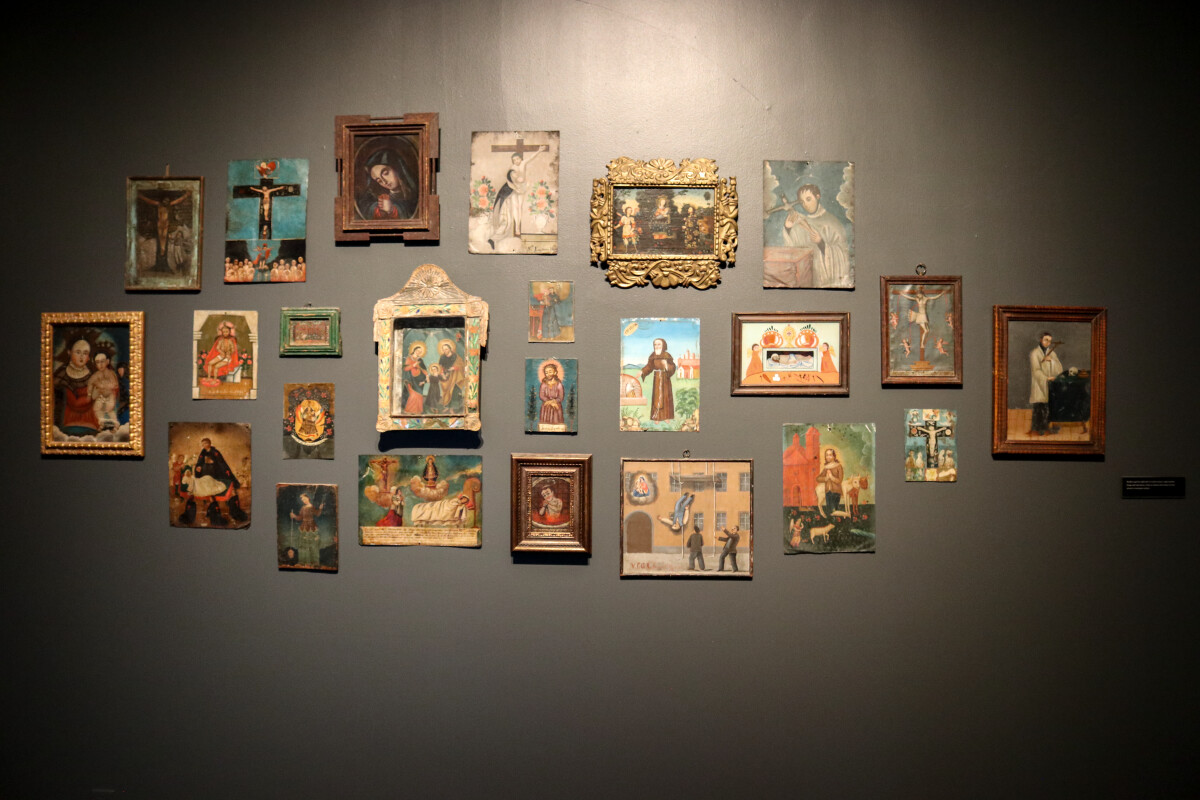
The Devil you Say!
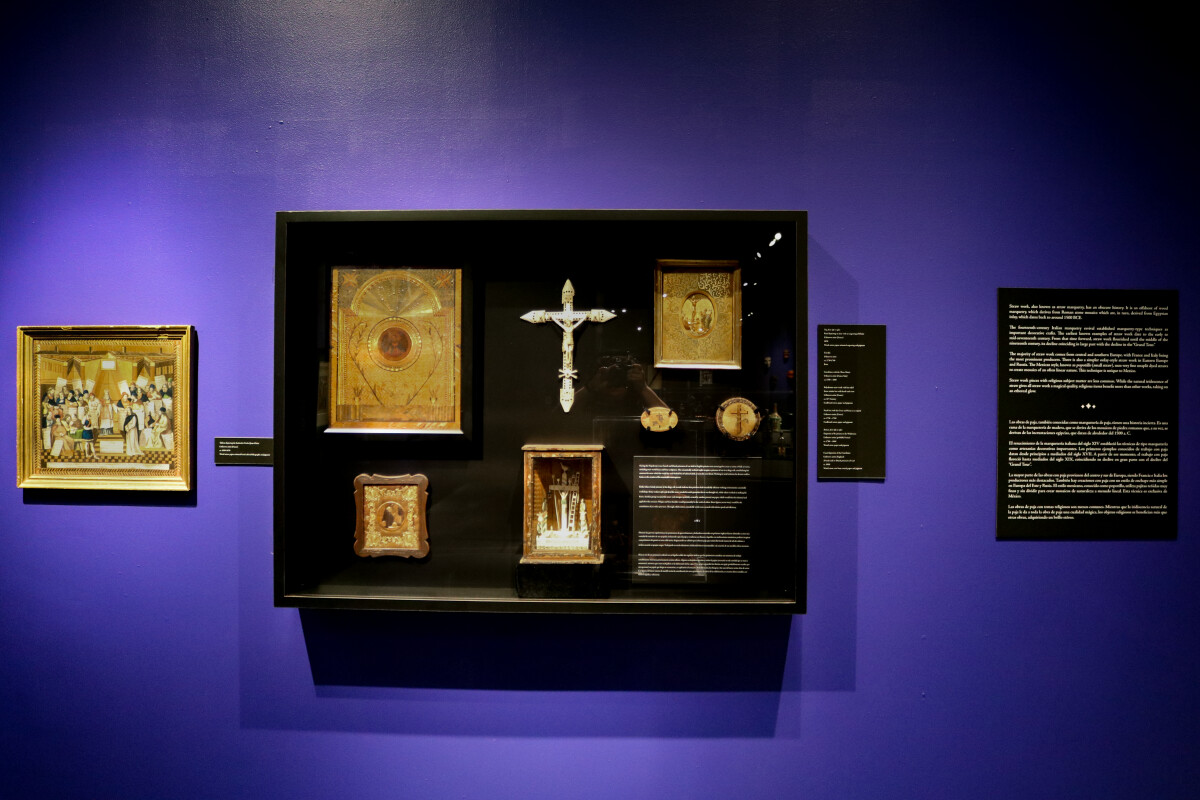
The Devil you Say!
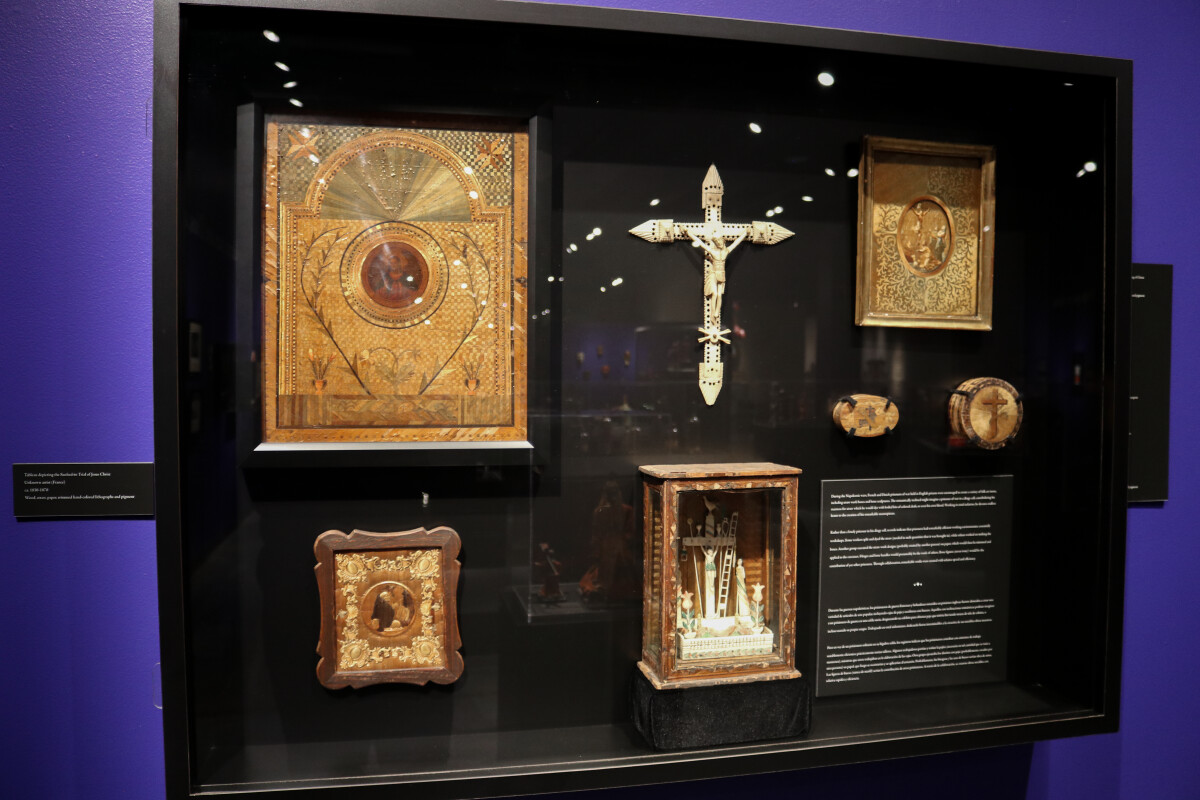
The Devil you Say!
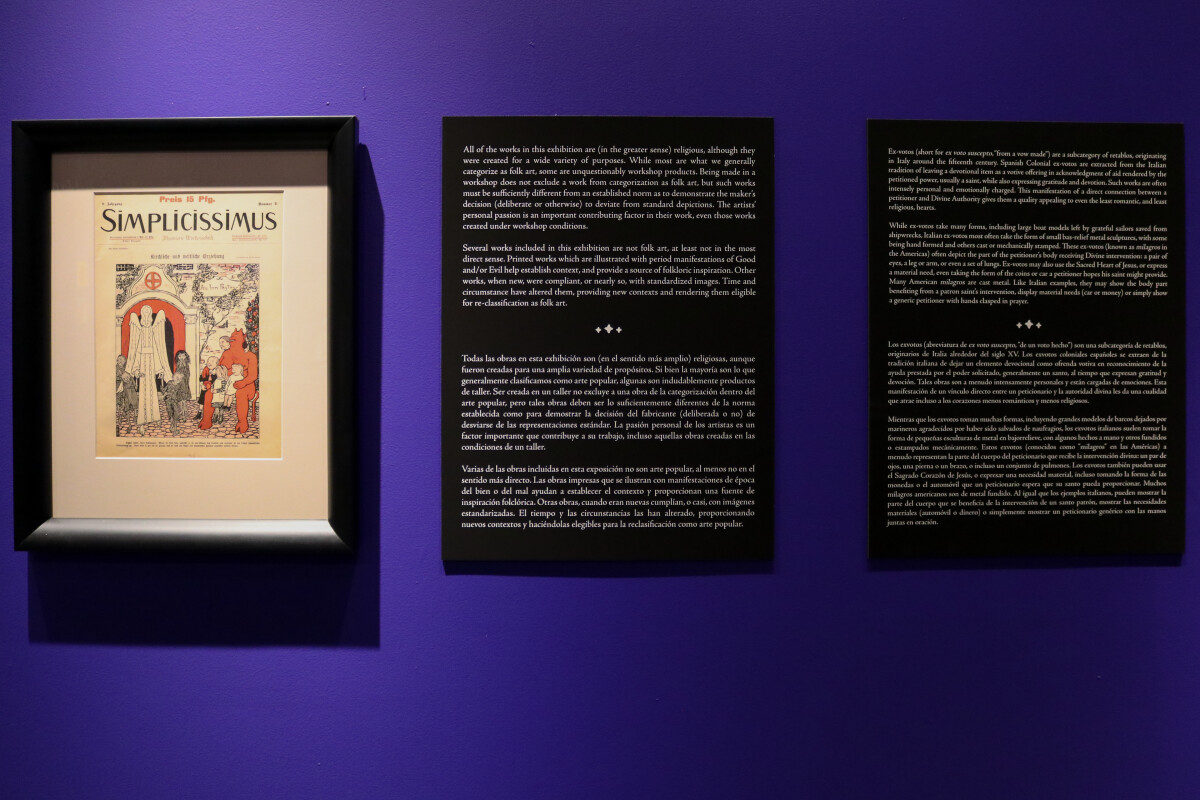
The Devil you Say!
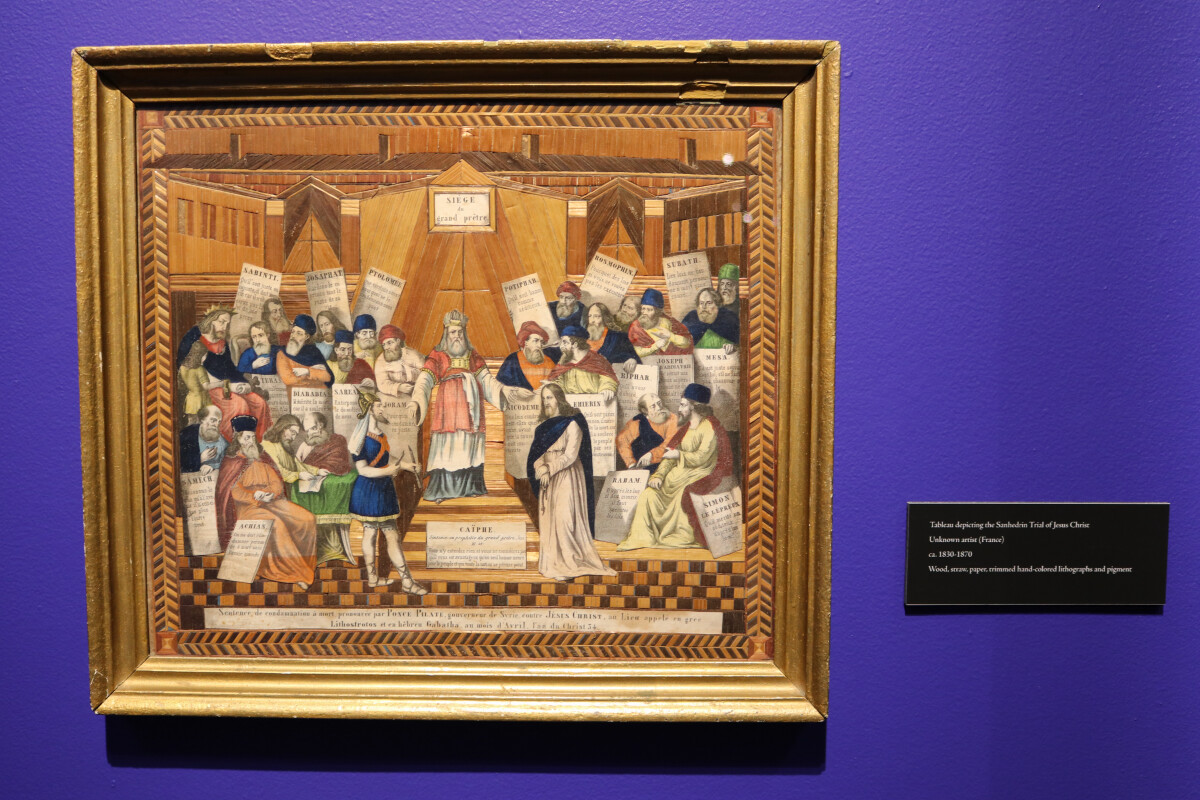
The Devil you Say!
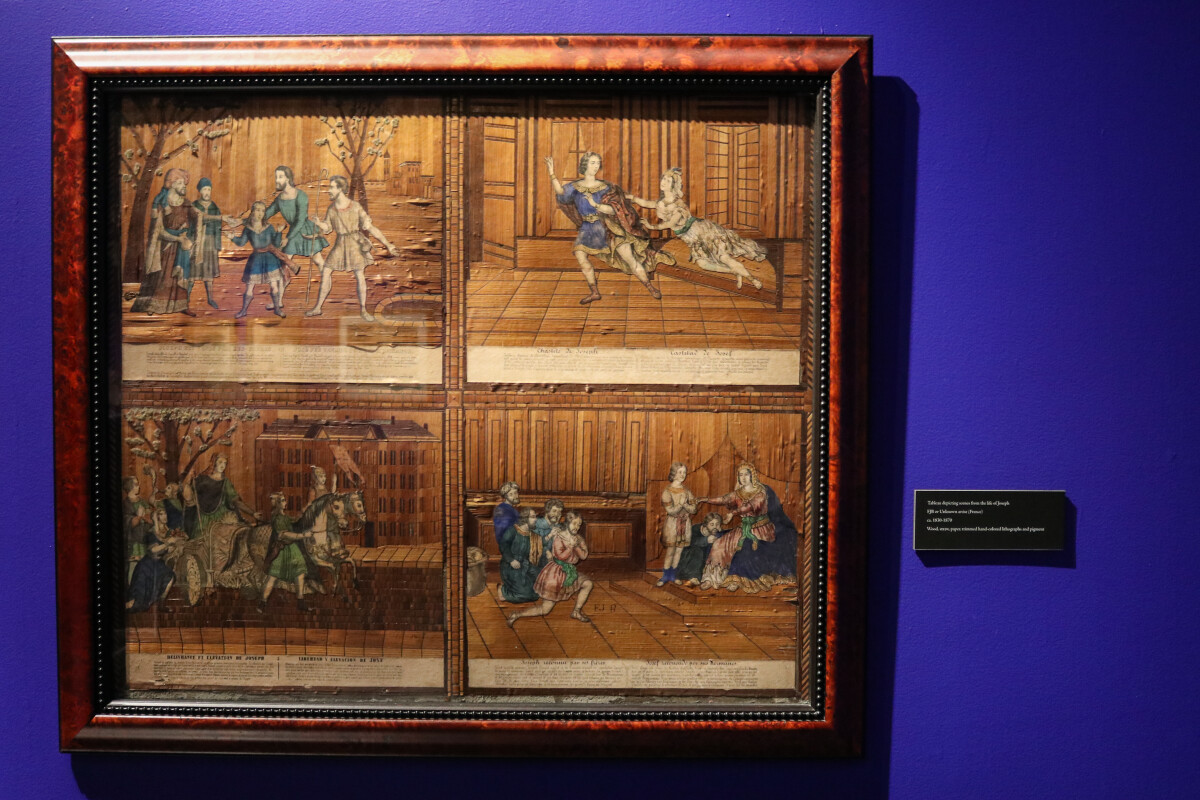
The Devil you Say!
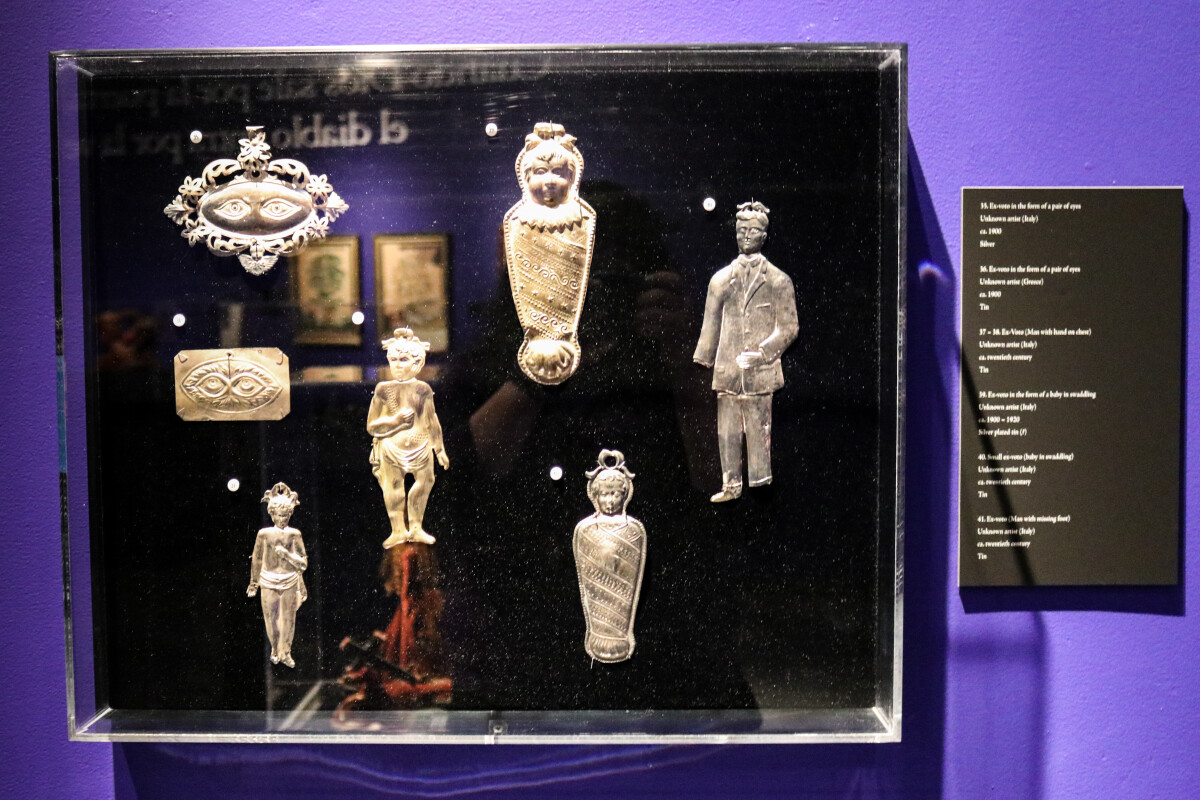
The Devil you Say!
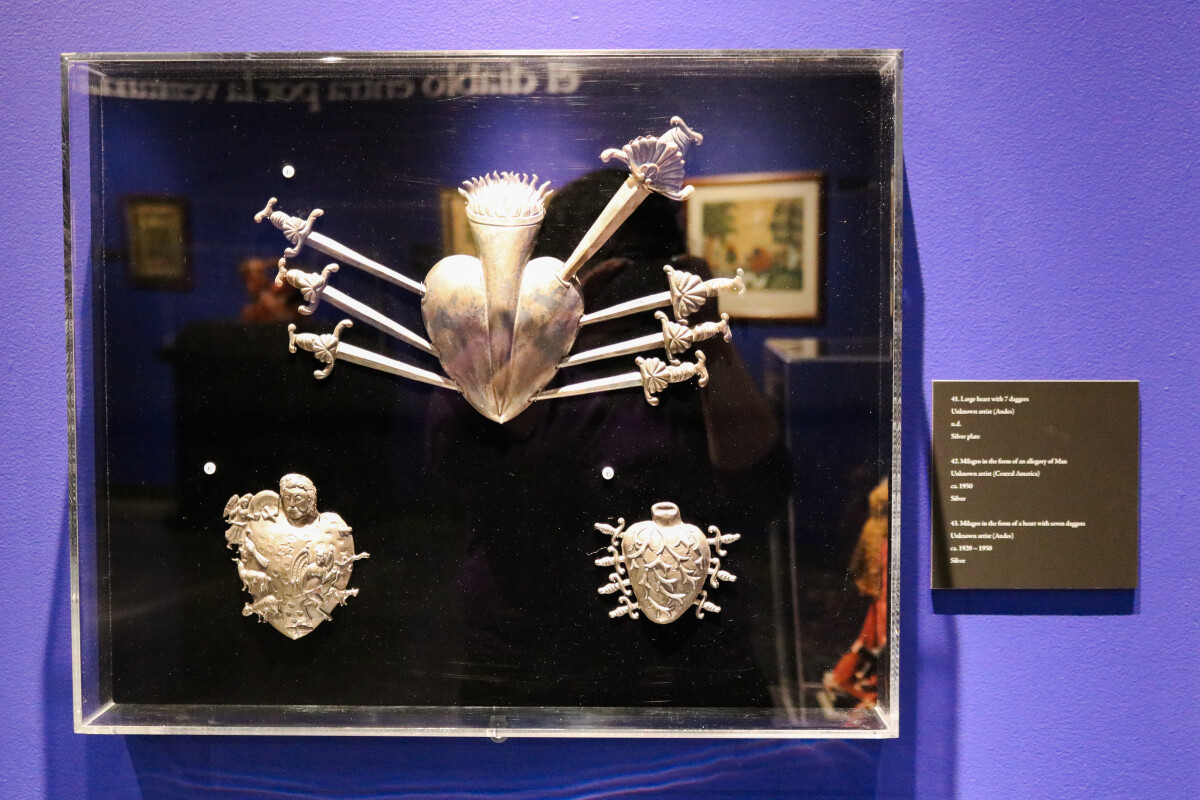
The Devil you Say!
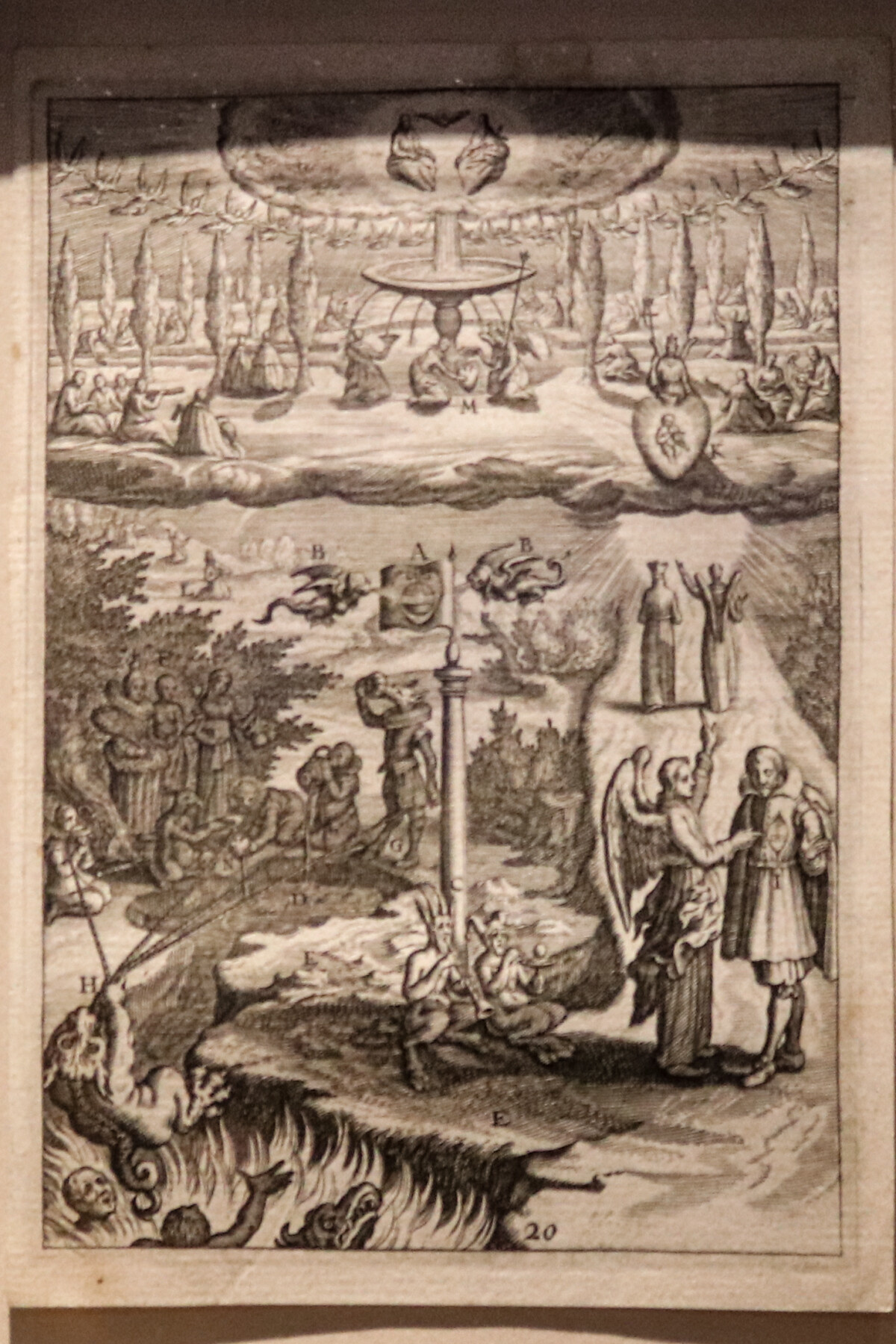
The Devil you Say!
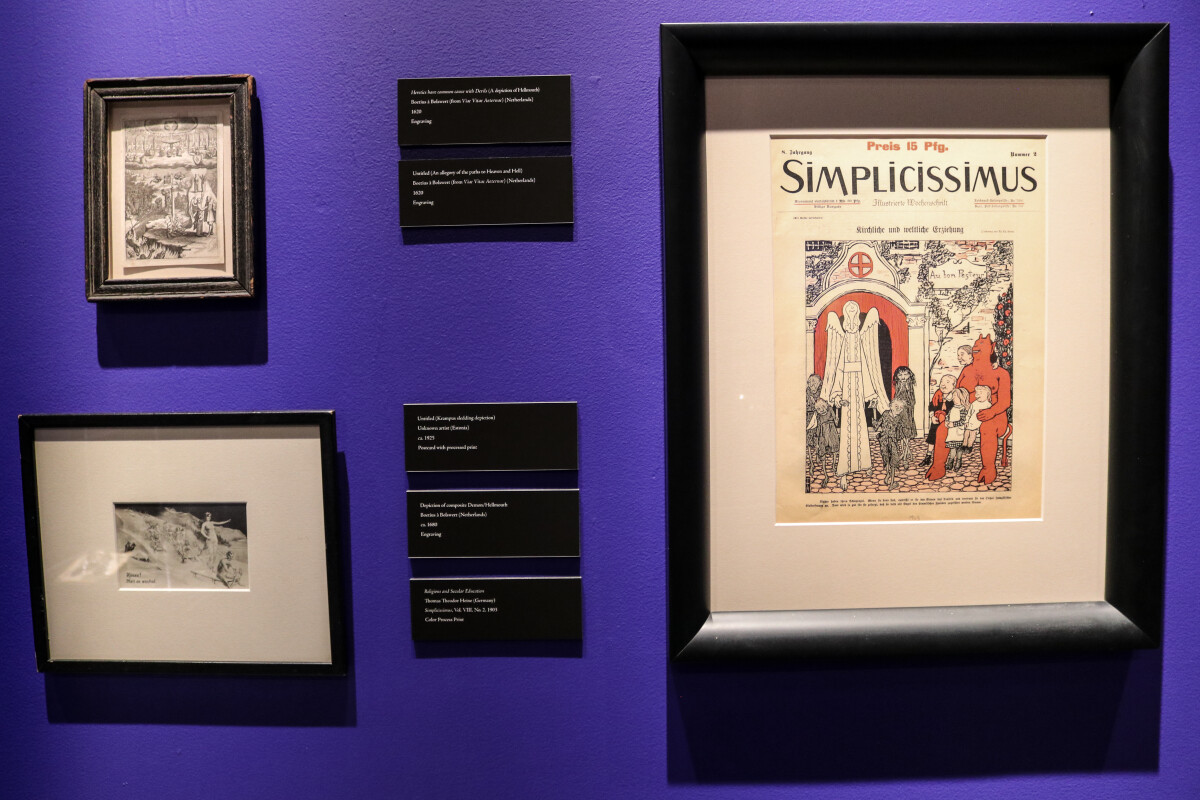
The Devil you Say!
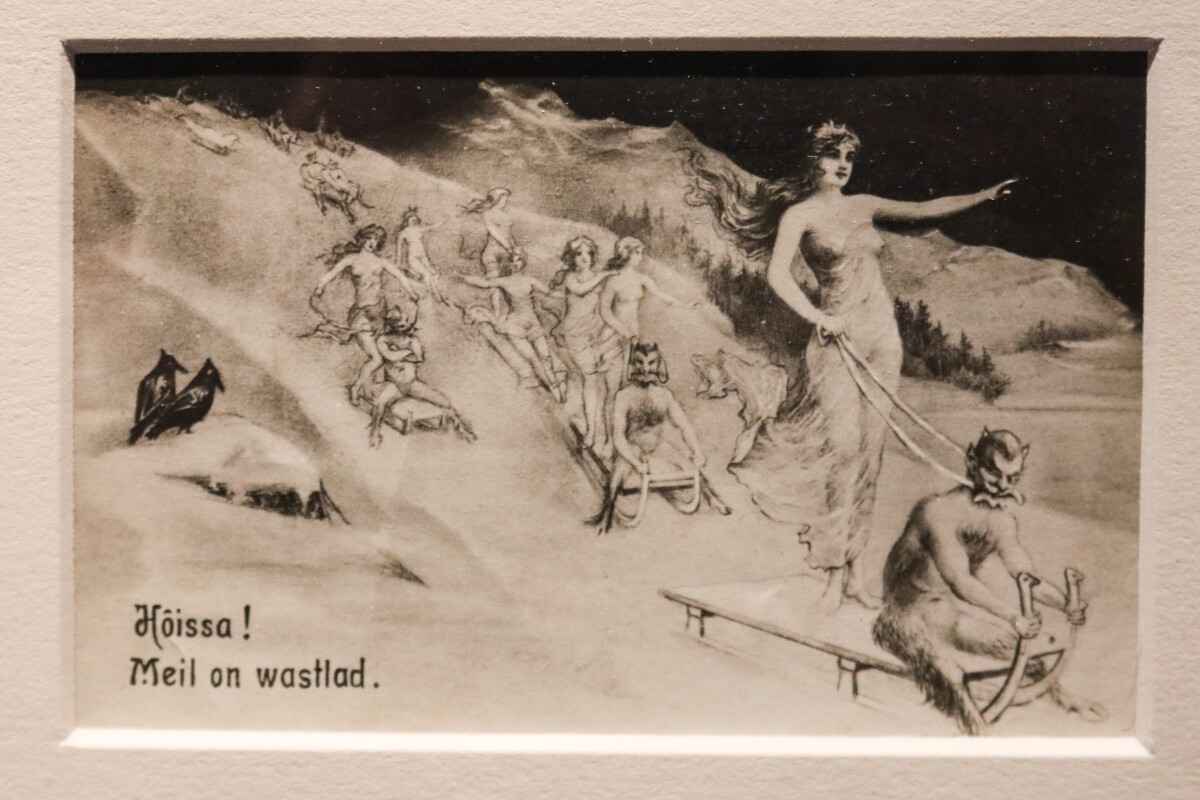
The Devil you Say!
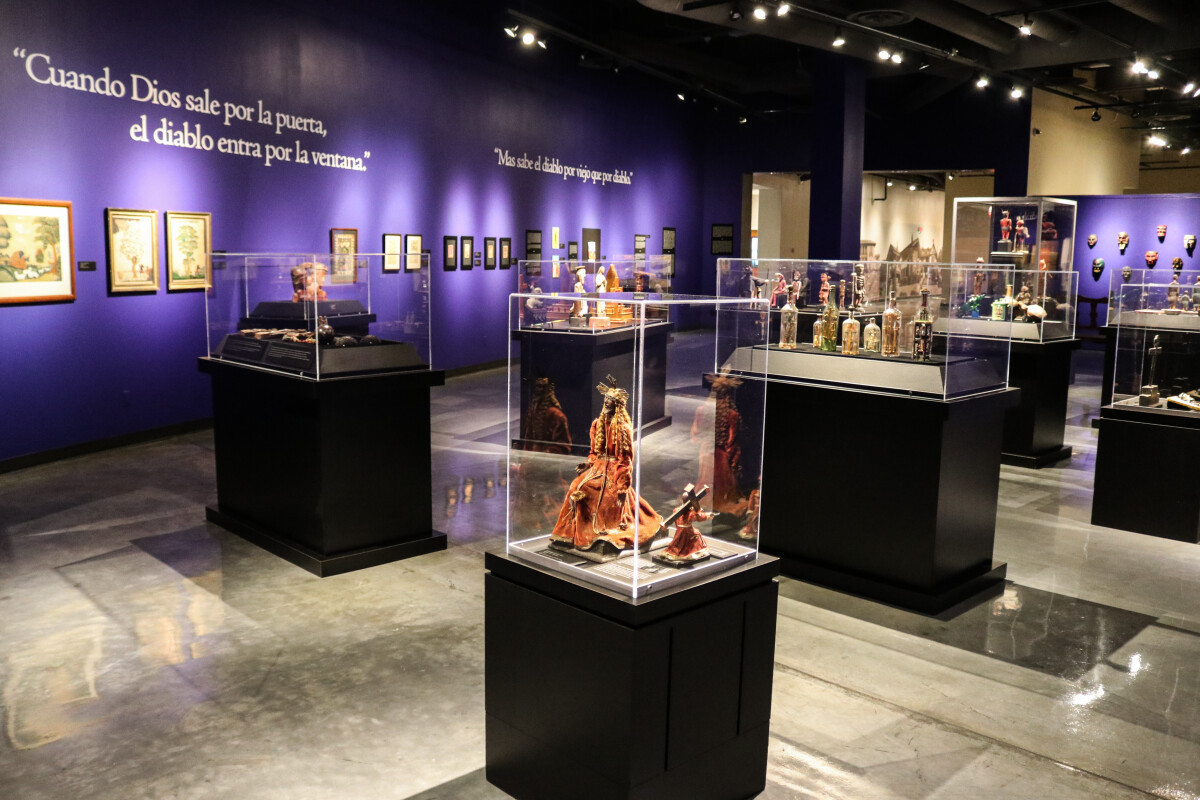
The Devil you Say!
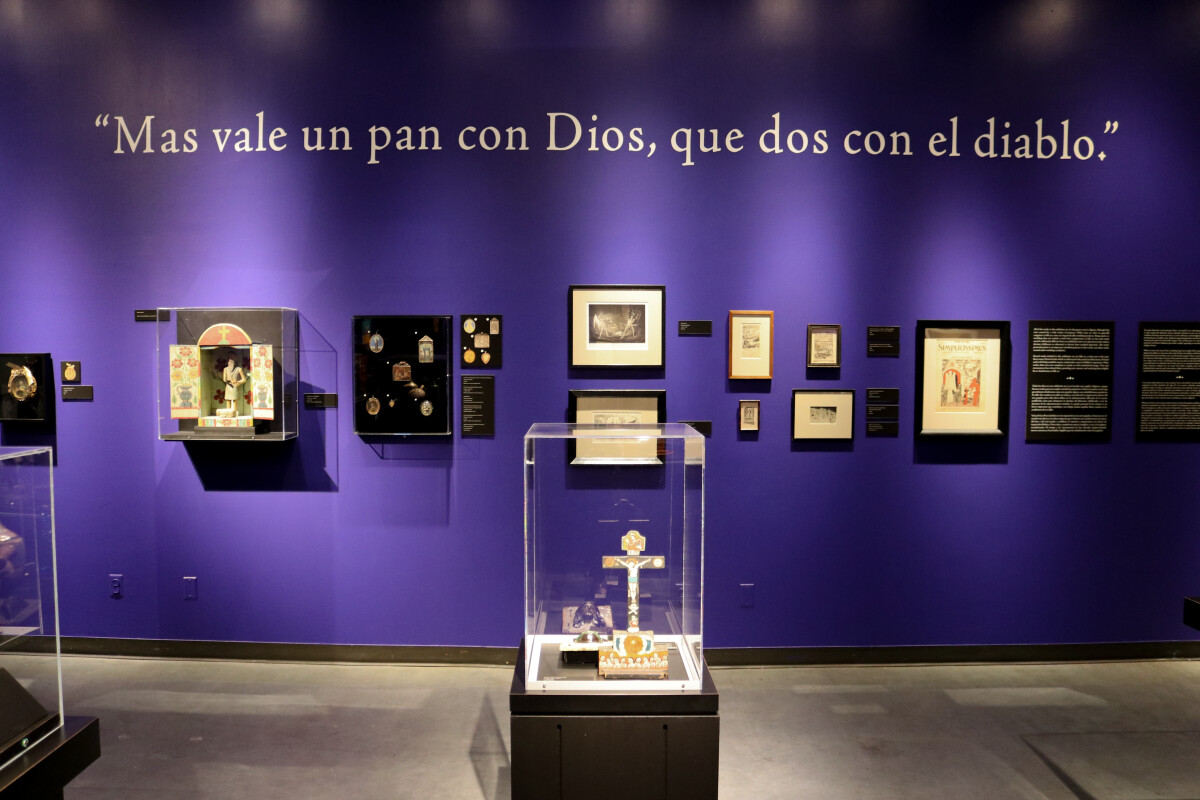
The Devil you Say!
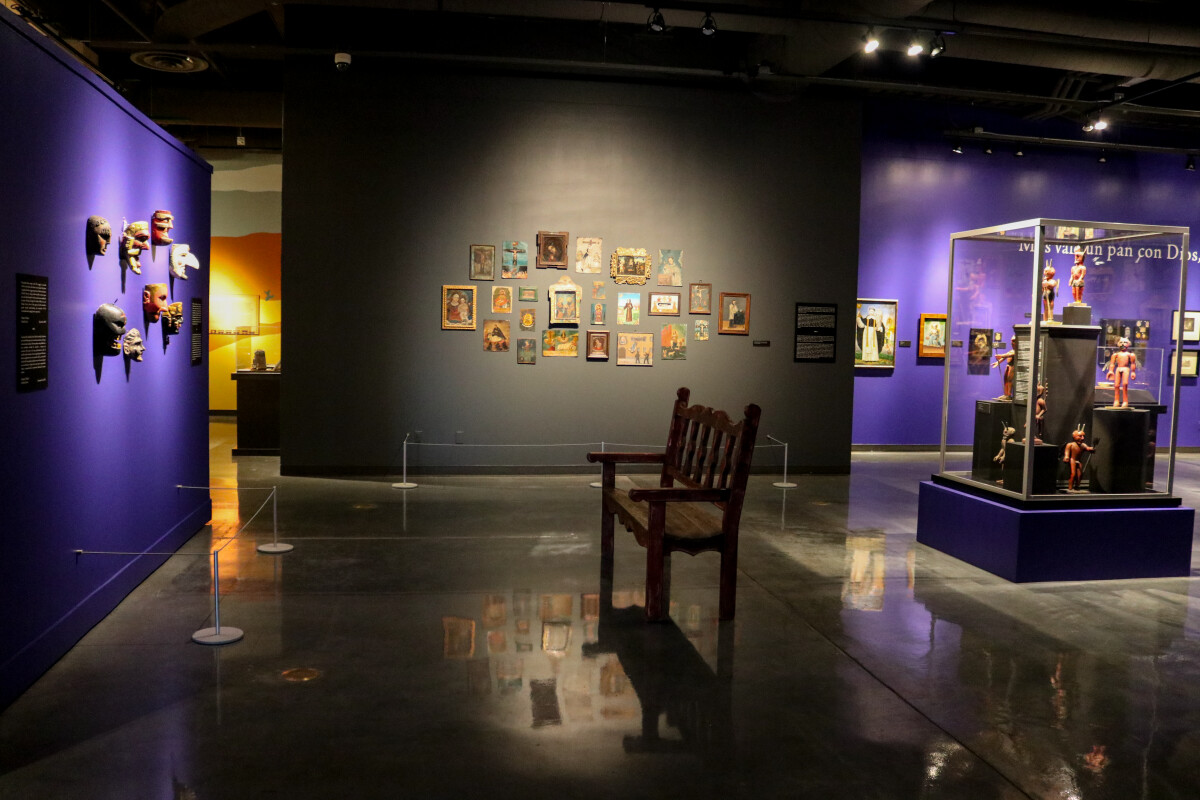
The Devil you Say!
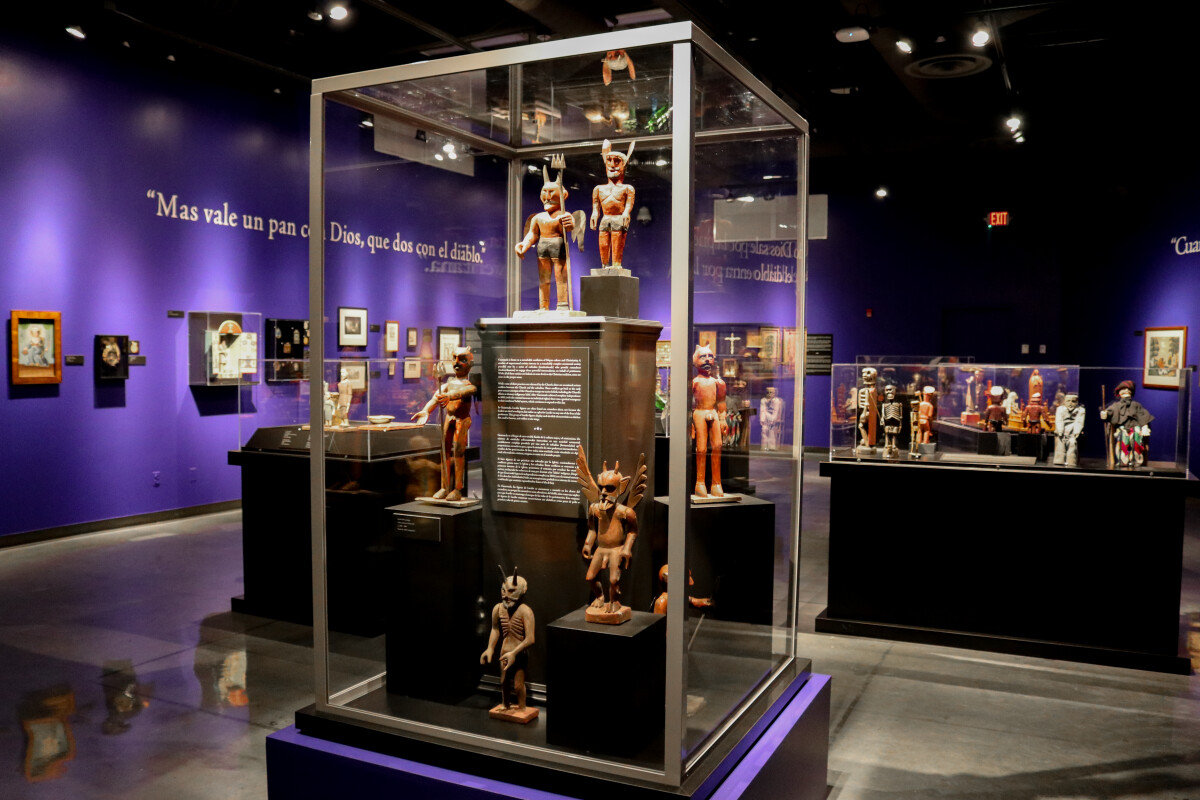
The Devil you Say! The Saintly and not so Saintly in Folk Art
The Devil you Say! The Saintly and not so Saintly, in Folk Art is an exhibition that aims to highlight the ascribed Christian concept of duality, good versus evil, and how that concept has historically shaped folk art practices in the Americas. the Latin American works included herein, are either early works that reflect a standardized formula of European training or are shaped by the artisans' interpretation of Christianity as understood and practices in a deeply rooted Indigenous/Mestizo identity. a section of U.S. American works is also included as it reifies religion-based folk art. This exhibition also includes works from Europe as well as works on paper. Finally, to complement and further provide context, we include accompanying excerpts from the exhibition catalogue written by collector and scholar Michael T. Ricker. We invite the audience to consider the works as a nod to both sides of one coin. The works selected for this exhibition come from a variety of cultures representing centuries of creativity. The inspiration of many of the artists in our exhibition, most of them anonymous, stems from personal belief, often of a profound nature. Some creations emerged from workshops, or near workshop environments, and were intended to meet market demands for devotional objects. Some works are decorative -- others are intended to be used in didactic of publicly devotional manner. some works are intended to profit from a buyer's unreasonable fear (or lack thereof), while others are objects of intense personal devotion, representing visions wildly abstracted from convention and difficult to reattach to established historical context. A few, defying any reasonable categorization, help keep the boundaries delightfully fuzzy.
Area: Central / Downtown
Source: El Paso Museum of History; Michael T. Ricker
Uploaded by: El Paso Museum of History
The Devil you Say! The Saintly and Not so Saintly, in Folk Art
The Devil you Say! The Saintly and not so Saintly, in Folk Art is an exhibition that aims to highlight the ascribed Christian concept of duality, good versus evil, and how that concept has historically shaped folk art practices in the Americas. the Latin American works included herein, are either early works that reflect a standardized formula of European training or are shaped by the artisans' interpretation of Christianity as understood and practices in a deeply rooted Indigenous/Mestizo identity. a section of U.S. American works is also included as it reifies religion-based folk art. This exhibition also includes works from Europe as well as works on paper. Finally, to complement and further provide context, we include accompanying excerpts from the exhibition catalogue written by collector and scholar Michael T. Ricker. We invite the audience to consider the works as a nod to both sides of one coin. The works selected for this exhibition come from a variety of cultures representing centuries of creativity. The inspiration of many of the artists in our exhibition, most of them anonymous, stems from personal belief, often of a profound nature. Some creations emerged from workshops, or near workshop environments, and were intended to meet market demands for devotional objects. Some works are decorative -- others are intended to be used in didactic of publicly devotional manner. some works are intended to profit from a buyer's unreasonable fear (or lack thereof), while others are objects of intense personal devotion, representing visions wildly abstracted from convention and difficult to reattach to established historical context. A few, defying any reasonable categorization, help keep the boundaries delightfully fuzzy.
Area: Central / Downtown
Source: El Paso Museum of History; Michael T. Ricker
Uploaded by: El Paso Museum of History
The Devil you Say! The Saintly and Not so Saintly, in Folk Art
The Devil you Say! The Saintly and not so Saintly, in Folk Art is an exhibition that aims to highlight the ascribed Christian concept of duality, good versus evil, and how that concept has historically shaped folk art practices in the Americas. the Latin American works included herein, are either early works that reflect a standardized formula of European training or are shaped by the artisans' interpretation of Christianity as understood and practices in a deeply rooted Indigenous/Mestizo identity. a section of U.S. American works is also included as it reifies religion-based folk art. This exhibition also includes works from Europe as well as works on paper. Finally, to complement and further provide context, we include accompanying excerpts from the exhibition catalogue written by collector and scholar Michael T. Ricker. We invite the audience to consider the works as a nod to both sides of one coin. The works selected for this exhibition come from a variety of cultures representing centuries of creativity. The inspiration of many of the artists in our exhibition, most of them anonymous, stems from personal belief, often of a profound nature. Some creations emerged from workshops, or near workshop environments, and were intended to meet market demands for devotional objects. Some works are decorative -- others are intended to be used in didactic of publicly devotional manner. some works are intended to profit from a buyer's unreasonable fear (or lack thereof), while others are objects of intense personal devotion, representing visions wildly abstracted from convention and difficult to reattach to established historical context. A few, defying any reasonable categorization, help keep the boundaries delightfully fuzzy.
Area: Central / Downtown
Source: El Paso Museum of History; Michael T. Ricker
Uploaded by: El Paso Museum of History
The Devil you Say! The Saintly and not so Saintly in Folk Art
The Devil you Say! The Saintly and not so Saintly, in Folk Art is an exhibition that aims to highlight the ascribed Christian concept of duality, good versus evil, and how that concept has historically shaped folk art practices in the Americas. the Latin American works included herein, are either early works that reflect a standardized formula of European training or are shaped by the artisans' interpretation of Christianity as understood and practices in a deeply rooted Indigenous/Mestizo identity. a section of U.S. American works is also included as it reifies religion-based folk art. This exhibition also includes works from Europe as well as works on paper. Finally, to complement and further provide context, we include accompanying excerpts from the exhibition catalogue written by collector and scholar Michael T. Ricker. We invite the audience to consider the works as a nod to both sides of one coin. The works selected for this exhibition come from a variety of cultures representing centuries of creativity. The inspiration of many of the artists in our exhibition, most of them anonymous, stems from personal belief, often of a profound nature. Some creations emerged from workshops, or near workshop environments, and were intended to meet market demands for devotional objects. Some works are decorative -- others are intended to be used in didactic of publicly devotional manner. some works are intended to profit from a buyer's unreasonable fear (or lack thereof), while others are objects of intense personal devotion, representing visions wildly abstracted from convention and difficult to reattach to established historical context. A few, defying any reasonable categorization, help keep the boundaries delightfully fuzzy.
Area: Central / Downtown
Source: El Paso Museum of History; Michael T. Ricker
Uploaded by: El Paso Museum of History
The Devil you Say! The Saintly and not so Saintly in Folk Art
The Devil you Say! The Saintly and not so Saintly, in Folk Art is an exhibition that aims to highlight the ascribed Christian concept of duality, good versus evil, and how that concept has historically shaped folk art practices in the Americas. the Latin American works included herein, are either early works that reflect a standardized formula of European training or are shaped by the artisans' interpretation of Christianity as understood and practices in a deeply rooted Indigenous/Mestizo identity. a section of U.S. American works is also included as it reifies religion-based folk art. This exhibition also includes works from Europe as well as works on paper. Finally, to complement and further provide context, we include accompanying excerpts from the exhibition catalogue written by collector and scholar Michael T. Ricker. We invite the audience to consider the works as a nod to both sides of one coin. The works selected for this exhibition come from a variety of cultures representing centuries of creativity. The inspiration of many of the artists in our exhibition, most of them anonymous, stems from personal belief, often of a profound nature. Some creations emerged from workshops, or near workshop environments, and were intended to meet market demands for devotional objects. Some works are decorative -- others are intended to be used in didactic of publicly devotional manner. some works are intended to profit from a buyer's unreasonable fear (or lack thereof), while others are objects of intense personal devotion, representing visions wildly abstracted from convention and difficult to reattach to established historical context. A few, defying any reasonable categorization, help keep the boundaries delightfully fuzzy
Area: Central / Downtown
Source: El Paso Museum of History; Michael T. Ricker
Uploaded by: El Paso Museum of History
The Devil you Say! The Saintly and not so Saintly in Folk Art
The Devil you Say! The Saintly and not so Saintly, in Folk Art is an exhibition that aims to highlight the ascribed Christian concept of duality, good versus evil, and how that concept has historically shaped folk art practices in the Americas. the Latin American works included herein, are either early works that reflect a standardized formula of European training or are shaped by the artisans' interpretation of Christianity as understood and practices in a deeply rooted Indigenous/Mestizo identity. a section of U.S. American works is also included as it reifies religion-based folk art. This exhibition also includes works from Europe as well as works on paper. Finally, to complement and further provide context, we include accompanying excerpts from the exhibition catalogue written by collector and scholar Michael T. Ricker. We invite the audience to consider the works as a nod to both sides of one coin. The works selected for this exhibition come from a variety of cultures representing centuries of creativity. The inspiration of many of the artists in our exhibition, most of them anonymous, stems from personal belief, often of a profound nature. Some creations emerged from workshops, or near workshop environments, and were intended to meet market demands for devotional objects. Some works are decorative -- others are intended to be used in didactic of publicly devotional manner. some works are intended to profit from a buyer's unreasonable fear (or lack thereof), while others are objects of intense personal devotion, representing visions wildly abstracted from convention and difficult to reattach to established historical context. A few, defying any reasonable categorization, help keep the boundaries delightfully fuzzy
Area: Central / Downtown
Source: El Paso Museum of History; Michael T. Ricker
Uploaded by: El Paso Museum of History
The Devil you Say! The Saintly and not so Saintly in Folk Art
The Devil you Say! The Saintly and not so Saintly, in Folk Art is an exhibition that aims to highlight the ascribed Christian concept of duality, good versus evil, and how that concept has historically shaped folk art practices in the Americas. the Latin American works included herein, are either early works that reflect a standardized formula of European training or are shaped by the artisans' interpretation of Christianity as understood and practices in a deeply rooted Indigenous/Mestizo identity. a section of U.S. American works is also included as it reifies religion-based folk art. This exhibition also includes works from Europe as well as works on paper. Finally, to complement and further provide context, we include accompanying excerpts from the exhibition catalogue written by collector and scholar Michael T. Ricker. We invite the audience to consider the works as a nod to both sides of one coin. The works selected for this exhibition come from a variety of cultures representing centuries of creativity. The inspiration of many of the artists in our exhibition, most of them anonymous, stems from personal belief, often of a profound nature. Some creations emerged from workshops, or near workshop environments, and were intended to meet market demands for devotional objects. Some works are decorative -- others are intended to be used in didactic of publicly devotional manner. some works are intended to profit from a buyer's unreasonable fear (or lack thereof), while others are objects of intense personal devotion, representing visions wildly abstracted from convention and difficult to reattach to established historical context. A few, defying any reasonable categorization, help keep the boundaries delightfully fuzzy.
Area: Central / Downtown
Source: El Paso Museum of History; Michael T. Ricker
Uploaded by: El Paso Museum of History
The Devil you Say! The Saintly and not so Saintly in Folk Art
The Devil you Say! The Saintly and not so Saintly, in Folk Art is an exhibition that aims to highlight the ascribed Christian concept of duality, good versus evil, and how that concept has historically shaped folk art practices in the Americas. the Latin American works included herein, are either early works that reflect a standardized formula of European training or are shaped by the artisans' interpretation of Christianity as understood and practices in a deeply rooted Indigenous/Mestizo identity. a section of U.S. American works is also included as it reifies religion-based folk art. This exhibition also includes works from Europe as well as works on paper. Finally, to complement and further provide context, we include accompanying excerpts from the exhibition catalogue written by collector and scholar Michael T. Ricker. We invite the audience to consider the works as a nod to both sides of one coin. The works selected for this exhibition come from a variety of cultures representing centuries of creativity. The inspiration of many of the artists in our exhibition, most of them anonymous, stems from personal belief, often of a profound nature. Some creations emerged from workshops, or near workshop environments, and were intended to meet market demands for devotional objects. Some works are decorative -- others are intended to be used in didactic of publicly devotional manner. some works are intended to profit from a buyer's unreasonable fear (or lack thereof), while others are objects of intense personal devotion, representing visions wildly abstracted from convention and difficult to reattach to established historical context. A few, defying any reasonable categorization, help keep the boundaries delightfully fuzzy.
Area: Central / Downtown
Source: El Paso Museum of History; Michael T. Ricker
Uploaded by: El Paso Museum of History
The Devil you Say! The Saintly and not so Saintly in Folk Art
The Devil you Say! The Saintly and not so Saintly, in Folk Art is an exhibition that aims to highlight the ascribed Christian concept of duality, good versus evil, and how that concept has historically shaped folk art practices in the Americas. the Latin American works included herein, are either early works that reflect a standardized formula of European training or are shaped by the artisans' interpretation of Christianity as understood and practices in a deeply rooted Indigenous/Mestizo identity. a section of U.S. American works is also included as it reifies religion-based folk art. This exhibition also includes works from Europe as well as works on paper. Finally, to complement and further provide context, we include accompanying excerpts from the exhibition catalogue written by collector and scholar Michael T. Ricker. We invite the audience to consider the works as a nod to both sides of one coin. The works selected for this exhibition come from a variety of cultures representing centuries of creativity. The inspiration of many of the artists in our exhibition, most of them anonymous, stems from personal belief, often of a profound nature. Some creations emerged from workshops, or near workshop environments, and were intended to meet market demands for devotional objects. Some works are decorative -- others are intended to be used in didactic of publicly devotional manner. some works are intended to profit from a buyer's unreasonable fear (or lack thereof), while others are objects of intense personal devotion, representing visions wildly abstracted from convention and difficult to reattach to established historical context. A few, defying any reasonable categorization, help keep the boundaries delightfully fuzzy.
Area: Central / Downtown
Source: El Paso Museum of History; Michael T. Ricker
Uploaded by: El Paso Museum of History
The Devil you Say! The Saintly and not so Saintly in Folk Art
The Devil you Say! The Saintly and not so Saintly, in Folk Art is an exhibition that aims to highlight the ascribed Christian concept of duality, good versus evil, and how that concept has historically shaped folk art practices in the Americas. the Latin American works included herein, are either early works that reflect a standardized formula of European training or are shaped by the artisans' interpretation of Christianity as understood and practices in a deeply rooted Indigenous/Mestizo identity. a section of U.S. American works is also included as it reifies religion-based folk art. This exhibition also includes works from Europe as well as works on paper. Finally, to complement and further provide context, we include accompanying excerpts from the exhibition catalogue written by collector and scholar Michael T. Ricker. We invite the audience to consider the works as a nod to both sides of one coin. The works selected for this exhibition come from a variety of cultures representing centuries of creativity. The inspiration of many of the artists in our exhibition, most of them anonymous, stems from personal belief, often of a profound nature. Some creations emerged from workshops, or near workshop environments, and were intended to meet market demands for devotional objects. Some works are decorative -- others are intended to be used in didactic of publicly devotional manner. some works are intended to profit from a buyer's unreasonable fear (or lack thereof), while others are objects of intense personal devotion, representing visions wildly abstracted from convention and difficult to reattach to established historical context. A few, defying any reasonable categorization, help keep the boundaries delightfully fuzzy.
Area: Central / Downtown
Source: El Paso Museum of History; Michael T. Ricker
Uploaded by: El Paso Museum of History
The Devil you Say! The Saintly and not so Saintly in Folk Art
The Devil you Say! The Saintly and not so Saintly, in Folk Art is an exhibition that aims to highlight the ascribed Christian concept of duality, good versus evil, and how that concept has historically shaped folk art practices in the Americas. the Latin American works included herein, are either early works that reflect a standardized formula of European training or are shaped by the artisans' interpretation of Christianity as understood and practices in a deeply rooted Indigenous/Mestizo identity. a section of U.S. American works is also included as it reifies religion-based folk art. This exhibition also includes works from Europe as well as works on paper. Finally, to complement and further provide context, we include accompanying excerpts from the exhibition catalogue written by collector and scholar Michael T. Ricker. We invite the audience to consider the works as a nod to both sides of one coin. The works selected for this exhibition come from a variety of cultures representing centuries of creativity. The inspiration of many of the artists in our exhibition, most of them anonymous, stems from personal belief, often of a profound nature. Some creations emerged from workshops, or near workshop environments, and were intended to meet market demands for devotional objects. Some works are decorative -- others are intended to be used in didactic of publicly devotional manner. some works are intended to profit from a buyer's unreasonable fear (or lack thereof), while others are objects of intense personal devotion, representing visions wildly abstracted from convention and difficult to reattach to established historical context. A few, defying any reasonable categorization, help keep the boundaries delightfully fuzzy.
Area: Central / Downtown
Source: El Paso Museum of History; Michael T. Ricker
Uploaded by: El Paso Museum of History
The Devil you Say! The Saintly and not so Saintly in Folk Art
The Devil you Say! The Saintly and not so Saintly, in Folk Art is an exhibition that aims to highlight the ascribed Christian concept of duality, good versus evil, and how that concept has historically shaped folk art practices in the Americas. the Latin American works included herein, are either early works that reflect a standardized formula of European training or are shaped by the artisans' interpretation of Christianity as understood and practices in a deeply rooted Indigenous/Mestizo identity. a section of U.S. American works is also included as it reifies religion-based folk art. This exhibition also includes works from Europe as well as works on paper. Finally, to complement and further provide context, we include accompanying excerpts from the exhibition catalogue written by collector and scholar Michael T. Ricker. We invite the audience to consider the works as a nod to both sides of one coin. The works selected for this exhibition come from a variety of cultures representing centuries of creativity. The inspiration of many of the artists in our exhibition, most of them anonymous, stems from personal belief, often of a profound nature. Some creations emerged from workshops, or near workshop environments, and were intended to meet market demands for devotional objects. Some works are decorative -- others are intended to be used in didactic of publicly devotional manner. some works are intended to profit from a buyer's unreasonable fear (or lack thereof), while others are objects of intense personal devotion, representing visions wildly abstracted from convention and difficult to reattach to established historical context. A few, defying any reasonable categorization, help keep the boundaries delightfully fuzzy.
Area: Central / Downtown
Source: El Paso Museum of History; Michael T. Ricker
Uploaded by: El Paso Museum of History
The Devil you Say! The Saintly and not so Saintly in Folk Art
The Devil you Say! The Saintly and not so Saintly, in Folk Art is an exhibition that aims to highlight the ascribed Christian concept of duality, good versus evil, and how that concept has historically shaped folk art practices in the Americas. the Latin American works included herein, are either early works that reflect a standardized formula of European training or are shaped by the artisans' interpretation of Christianity as understood and practices in a deeply rooted Indigenous/Mestizo identity. a section of U.S. American works is also included as it reifies religion-based folk art. This exhibition also includes works from Europe as well as works on paper. Finally, to complement and further provide context, we include accompanying excerpts from the exhibition catalogue written by collector and scholar Michael T. Ricker. We invite the audience to consider the works as a nod to both sides of one coin. The works selected for this exhibition come from a variety of cultures representing centuries of creativity. The inspiration of many of the artists in our exhibition, most of them anonymous, stems from personal belief, often of a profound nature. Some creations emerged from workshops, or near workshop environments, and were intended to meet market demands for devotional objects. Some works are decorative -- others are intended to be used in didactic of publicly devotional manner. some works are intended to profit from a buyer's unreasonable fear (or lack thereof), while others are objects of intense personal devotion, representing visions wildly abstracted from convention and difficult to reattach to established historical context. A few, defying any reasonable categorization, help keep the boundaries delightfully fuzzy.
Area: Central / Downtown
Source: El Paso Museum of History; Michael T. Ricker
Uploaded by: El Paso Museum of History
The Devil you Say! The Saintly and not so Saintly in Folk Art
The Devil you Say! The Saintly and not so Saintly, in Folk Art is an exhibition that aims to highlight the ascribed Christian concept of duality, good versus evil, and how that concept has historically shaped folk art practices in the Americas. the Latin American works included herein, are either early works that reflect a standardized formula of European training or are shaped by the artisans' interpretation of Christianity as understood and practices in a deeply rooted Indigenous/Mestizo identity. a section of U.S. American works is also included as it reifies religion-based folk art. This exhibition also includes works from Europe as well as works on paper. Finally, to complement and further provide context, we include accompanying excerpts from the exhibition catalogue written by collector and scholar Michael T. Ricker. We invite the audience to consider the works as a nod to both sides of one coin. The works selected for this exhibition come from a variety of cultures representing centuries of creativity. The inspiration of many of the artists in our exhibition, most of them anonymous, stems from personal belief, often of a profound nature. Some creations emerged from workshops, or near workshop environments, and were intended to meet market demands for devotional objects. Some works are decorative -- others are intended to be used in didactic of publicly devotional manner. some works are intended to profit from a buyer's unreasonable fear (or lack thereof), while others are objects of intense personal devotion, representing visions wildly abstracted from convention and difficult to reattach to established historical context. A few, defying any reasonable categorization, help keep the boundaries delightfully fuzzy.
Area: Central / Downtown
Source: El Paso Museum of History; Michael T. Ricker
Uploaded by: El Paso Museum of History
The Devil you Say! The Saintly and not so Saintly in Folk Art
The Devil you Say! The Saintly and not so Saintly, in Folk Art is an exhibition that aims to highlight the ascribed Christian concept of duality, good versus evil, and how that concept has historically shaped folk art practices in the Americas. the Latin American works included herein, are either early works that reflect a standardized formula of European training or are shaped by the artisans' interpretation of Christianity as understood and practices in a deeply rooted Indigenous/Mestizo identity. a section of U.S. American works is also included as it reifies religion-based folk art. This exhibition also includes works from Europe as well as works on paper. Finally, to complement and further provide context, we include accompanying excerpts from the exhibition catalogue written by collector and scholar Michael T. Ricker. We invite the audience to consider the works as a nod to both sides of one coin. The works selected for this exhibition come from a variety of cultures representing centuries of creativity. The inspiration of many of the artists in our exhibition, most of them anonymous, stems from personal belief, often of a profound nature. Some creations emerged from workshops, or near workshop environments, and were intended to meet market demands for devotional objects. Some works are decorative -- others are intended to be used in didactic of publicly devotional manner. some works are intended to profit from a buyer's unreasonable fear (or lack thereof), while others are objects of intense personal devotion, representing visions wildly abstracted from convention and difficult to reattach to established historical context. A few, defying any reasonable categorization, help keep the boundaries delightfully fuzzy.
Area: Central / Downtown
Source: El Paso Museum of History; Michael T. Ricker
Uploaded by: El Paso Museum of History
The Devil you Say! The Saintly and not so Saintly in Folk Art
The Devil you Say! The Saintly and not so Saintly, in Folk Art is an exhibition that aims to highlight the ascribed Christian concept of duality, good versus evil, and how that concept has historically shaped folk art practices in the Americas. the Latin American works included herein, are either early works that reflect a standardized formula of European training or are shaped by the artisans' interpretation of Christianity as understood and practices in a deeply rooted Indigenous/Mestizo identity. a section of U.S. American works is also included as it reifies religion-based folk art. This exhibition also includes works from Europe as well as works on paper. Finally, to complement and further provide context, we include accompanying excerpts from the exhibition catalogue written by collector and scholar Michael T. Ricker. We invite the audience to consider the works as a nod to both sides of one coin. The works selected for this exhibition come from a variety of cultures representing centuries of creativity. The inspiration of many of the artists in our exhibition, most of them anonymous, stems from personal belief, often of a profound nature. Some creations emerged from workshops, or near workshop environments, and were intended to meet market demands for devotional objects. Some works are decorative -- others are intended to be used in didactic of publicly devotional manner. some works are intended to profit from a buyer's unreasonable fear (or lack thereof), while others are objects of intense personal devotion, representing visions wildly abstracted from convention and difficult to reattach to established historical context. A few, defying any reasonable categorization, help keep the boundaries delightfully fuzzy.
Area: Central / Downtown
Source: El Paso Museum of History; Michael T. Ricker
Uploaded by: El Paso Museum of History
The Devil you Say! The Saintly and not so Saintly in Folk Art
The Devil you Say! The Saintly and not so Saintly, in Folk Art is an exhibition that aims to highlight the ascribed Christian concept of duality, good versus evil, and how that concept has historically shaped folk art practices in the Americas. the Latin American works included herein, are either early works that reflect a standardized formula of European training or are shaped by the artisans' interpretation of Christianity as understood and practices in a deeply rooted Indigenous/Mestizo identity. a section of U.S. American works is also included as it reifies religion-based folk art. This exhibition also includes works from Europe as well as works on paper. Finally, to complement and further provide context, we include accompanying excerpts from the exhibition catalogue written by collector and scholar Michael T. Ricker. We invite the audience to consider the works as a nod to both sides of one coin. The works selected for this exhibition come from a variety of cultures representing centuries of creativity. The inspiration of many of the artists in our exhibition, most of them anonymous, stems from personal belief, often of a profound nature. Some creations emerged from workshops, or near workshop environments, and were intended to meet market demands for devotional objects. Some works are decorative -- others are intended to be used in didactic of publicly devotional manner. some works are intended to profit from a buyer's unreasonable fear (or lack thereof), while others are objects of intense personal devotion, representing visions wildly abstracted from convention and difficult to reattach to established historical context. A few, defying any reasonable categorization, help keep the boundaries delightfully fuzzy.
Area: Central / Downtown
Source: El Paso Museum of History; Michael T. Ricker
Uploaded by: El Paso Museum of History
The Devil you Say! The Saintly and not so Saintly in Folk Art
The Devil you Say! The Saintly and not so Saintly, in Folk Art is an exhibition that aims to highlight the ascribed Christian concept of duality, good versus evil, and how that concept has historically shaped folk art practices in the Americas. the Latin American works included herein, are either early works that reflect a standardized formula of European training or are shaped by the artisans' interpretation of Christianity as understood and practices in a deeply rooted Indigenous/Mestizo identity. a section of U.S. American works is also included as it reifies religion-based folk art. This exhibition also includes works from Europe as well as works on paper. Finally, to complement and further provide context, we include accompanying excerpts from the exhibition catalogue written by collector and scholar Michael T. Ricker. We invite the audience to consider the works as a nod to both sides of one coin. “The works selected for this exhibition come from a variety of cultures representing centuries of creativity. The inspiration of many of the artists in our exhibition, most of them anonymous, stems from personal belief, often of a profound nature. Some creations emerged from workshops, or near workshop environments, and were intended to meet market demands for devotional objects. Some works are decorative -- others are intended to be used in didactic of publicly devotional manner. some works are intended to profit from a buyer's unreasonable fear (or lack thereof), while others are objects of intense personal devotion, representing visions wildly abstracted from convention and difficult to reattach to established historical context. A few, defying any reasonable categorization, help keep the boundaries delightfully fuzzy.”- Michael T. Ricker, Collector
Area: Central / Downtown
Source: El Paso Museum of History; Michael T. Ricker
Uploaded by: El Paso Museum of History
The Devil you Say! The Saintly and not so Saintly in Folk Art
The Devil you Say! The Saintly and not so Saintly, in Folk Art is an exhibition that aims to highlight the ascribed Christian concept of duality, good versus evil, and how that concept has historically shaped folk art practices in the Americas. the Latin American works included herein, are either early works that reflect a standardized formula of European training or are shaped by the artisans' interpretation of Christianity as understood and practices in a deeply rooted Indigenous/Mestizo identity. a section of U.S. American works is also included as it reifies religion-based folk art. This exhibition also includes works from Europe as well as works on paper. Finally, to complement and further provide context, we include accompanying excerpts from the exhibition catalogue written by collector and scholar Michael T. Ricker. We invite the audience to consider the works as a nod to both sides of one coin. “The works selected for this exhibition come from a variety of cultures representing centuries of creativity. The inspiration of many of the artists in our exhibition, most of them anonymous, stems from personal belief, often of a profound nature. Some creations emerged from workshops, or near workshop environments, and were intended to meet market demands for devotional objects. Some works are decorative -- others are intended to be used in didactic of publicly devotional manner. some works are intended to profit from a buyer's unreasonable fear (or lack thereof), while others are objects of intense personal devotion, representing visions wildly abstracted from convention and difficult to reattach to established historical context. A few, defying any reasonable categorization, help keep the boundaries delightfully fuzzy.”- Michael T. Ricker, Collector
Area: Central / Downtown
Source: El Paso Museum of History; Michael T. Ricker
Uploaded by: El Paso Museum of History
The Devil you Say! The Saintly and not so Saintly in Folk Art
The Devil you Say! The Saintly and not so Saintly, in Folk Art is an exhibition that aims to highlight the ascribed Christian concept of duality, good versus evil, and how that concept has historically shaped folk art practices in the Americas. the Latin American works included herein, are either early works that reflect a standardized formula of European training or are shaped by the artisans' interpretation of Christianity as understood and practices in a deeply rooted Indigenous/Mestizo identity. a section of U.S. American works is also included as it reifies religion-based folk art. This exhibition also includes works from Europe as well as works on paper. Finally, to complement and further provide context, we include accompanying excerpts from the exhibition catalogue written by collector and scholar Michael T. Ricker. We invite the audience to consider the works as a nod to both sides of one coin. “The works selected for this exhibition come from a variety of cultures representing centuries of creativity. The inspiration of many of the artists in our exhibition, most of them anonymous, stems from personal belief, often of a profound nature. Some creations emerged from workshops, or near workshop environments, and were intended to meet market demands for devotional objects. Some works are decorative -- others are intended to be used in didactic of publicly devotional manner. some works are intended to profit from a buyer's unreasonable fear (or lack thereof), while others are objects of intense personal devotion, representing visions wildly abstracted from convention and difficult to reattach to established historical context. A few, defying any reasonable categorization, help keep the boundaries delightfully fuzzy.”- Michael T. Ricker, Collector
Area: Central / Downtown
Source: El Paso Museum of History; Michael T. Ricker
Uploaded by: El Paso Museum of History
The Devil you Say! The Saintly and not so Saintly in Folk Art
The Devil you Say! The Saintly and not so Saintly, in Folk Art is an exhibition that aims to highlight the ascribed Christian concept of duality, good versus evil, and how that concept has historically shaped folk art practices in the Americas. the Latin American works included herein, are either early works that reflect a standardized formula of European training or are shaped by the artisans' interpretation of Christianity as understood and practices in a deeply rooted Indigenous/Mestizo identity. a section of U.S. American works is also included as it reifies religion-based folk art. This exhibition also includes works from Europe as well as works on paper. Finally, to complement and further provide context, we include accompanying excerpts from the exhibition catalogue written by collector and scholar Michael T. Ricker. We invite the audience to consider the works as a nod to both sides of one coin. “The works selected for this exhibition come from a variety of cultures representing centuries of creativity. The inspiration of many of the artists in our exhibition, most of them anonymous, stems from personal belief, often of a profound nature. Some creations emerged from workshops, or near workshop environments, and were intended to meet market demands for devotional objects. Some works are decorative -- others are intended to be used in didactic of publicly devotional manner. some works are intended to profit from a buyer's unreasonable fear (or lack thereof), while others are objects of intense personal devotion, representing visions wildly abstracted from convention and difficult to reattach to established historical context. A few, defying any reasonable categorization, help keep the boundaries delightfully fuzzy.”- Michael T. Ricker, Collector
Area: Central / Downtown
Source: El Paso Museum of History; Michael T. Ricker
Uploaded by: El Paso Museum of History
The Devil you Say! The Saintly and not so Saintly in Folk Art
The Devil you Say! The Saintly and not so Saintly, in Folk Art is an exhibition that aims to highlight the ascribed Christian concept of duality, good versus evil, and how that concept has historically shaped folk art practices in the Americas. the Latin American works included herein, are either early works that reflect a standardized formula of European training or are shaped by the artisans' interpretation of Christianity as understood and practices in a deeply rooted Indigenous/Mestizo identity. a section of U.S. American works is also included as it reifies religion-based folk art. This exhibition also includes works from Europe as well as works on paper. Finally, to complement and further provide context, we include accompanying excerpts from the exhibition catalogue written by collector and scholar Michael T. Ricker. We invite the audience to consider the works as a nod to both sides of one coin. The works selected for this exhibition come from a variety of cultures representing centuries of creativity. The inspiration of many of the artists in our exhibition, most of them anonymous, stems from personal belief, often of a profound nature. Some creations emerged from workshops, or near workshop environments, and were intended to meet market demands for devotional objects. Some works are decorative -- others are intended to be used in didactic of publicly devotional manner. some works are intended to profit from a buyer's unreasonable fear (or lack thereof), while others are objects of intense personal devotion, representing visions wildly abstracted from convention and difficult to reattach to established historical context. A few, defying any reasonable categorization, help keep the boundaries delightfully fuzzy.
Area: Central / Downtown
Source: El Paso Museum of History; Michael T. Ricker
Uploaded by: El Paso Museum of History
The Devil you Say! The Saintly and not so Saintly in Folk Art
The Devil you Say! The Saintly and not so Saintly, in Folk Art is an exhibition that aims to highlight the ascribed Christian concept of duality, good versus evil, and how that concept has historically shaped folk art practices in the Americas. the Latin American works included herein, are either early works that reflect a standardized formula of European training or are shaped by the artisans' interpretation of Christianity as understood and practices in a deeply rooted Indigenous/Mestizo identity. a section of U.S. American works is also included as it reifies religion-based folk art. This exhibition also includes works from Europe as well as works on paper. Finally, to complement and further provide context, we include accompanying excerpts from the exhibition catalogue written by collector and scholar Michael T. Ricker. We invite the audience to consider the works as a nod to both sides of one coin. “The works selected for this exhibition come from a variety of cultures representing centuries of creativity. The inspiration of many of the artists in our exhibition, most of them anonymous, stems from personal belief, often of a profound nature. Some creations emerged from workshops, or near workshop environments, and were intended to meet market demands for devotional objects. Some works are decorative -- others are intended to be used in didactic of publicly devotional manner. some works are intended to profit from a buyer's unreasonable fear (or lack thereof), while others are objects of intense personal devotion, representing visions wildly abstracted from convention and difficult to reattach to established historical context. A few, defying any reasonable categorization, help keep the boundaries delightfully fuzzy.”- Michael T. Ricker, Collector
Area: Central / Downtown
Source: El Paso Museum of History; Michael T. Ricker
Uploaded by: El Paso Museum of History
The Devil you Say! The Saintly and not so Saintly in Folk Art
The Devil you Say! The Saintly and not so Saintly, in Folk Art is an exhibition that aims to highlight the ascribed Christian concept of duality, good versus evil, and how that concept has historically shaped folk art practices in the Americas. the Latin American works included herein, are either early works that reflect a standardized formula of European training or are shaped by the artisans' interpretation of Christianity as understood and practices in a deeply rooted Indigenous/Mestizo identity. a section of U.S. American works is also included as it reifies religion-based folk art. This exhibition also includes works from Europe as well as works on paper. Finally, to complement and further provide context, we include accompanying excerpts from the exhibition catalogue written by collector and scholar Michael T. Ricker. We invite the audience to consider the works as a nod to both sides of one coin. “The works selected for this exhibition come from a variety of cultures representing centuries of creativity. The inspiration of many of the artists in our exhibition, most of them anonymous, stems from personal belief, often of a profound nature. Some creations emerged from workshops, or near workshop environments, and were intended to meet market demands for devotional objects. Some works are decorative -- others are intended to be used in didactic of publicly devotional manner. some works are intended to profit from a buyer's unreasonable fear (or lack thereof), while others are objects of intense personal devotion, representing visions wildly abstracted from convention and difficult to reattach to established historical context. A few, defying any reasonable categorization, help keep the boundaries delightfully fuzzy.”- Michael T. Ricker, Collector
Area: Central / Downtown
Source: El Paso Museum of History; Michael T. Ricker
Uploaded by: El Paso Museum of History
The Devil you Say! The Saintly and not so Saintly in Folk Art
The Devil you Say! The Saintly and not so Saintly, in Folk Art is an exhibition that aims to highlight the ascribed Christian concept of duality, good versus evil, and how that concept has historically shaped folk art practices in the Americas. the Latin American works included herein, are either early works that reflect a standardized formula of European training or are shaped by the artisans' interpretation of Christianity as understood and practices in a deeply rooted Indigenous/Mestizo identity. a section of U.S. American works is also included as it reifies religion-based folk art. This exhibition also includes works from Europe as well as works on paper. Finally, to complement and further provide context, we include accompanying excerpts from the exhibition catalogue written by collector and scholar Michael T. Ricker. We invite the audience to consider the works as a nod to both sides of one coin. “The works selected for this exhibition come from a variety of cultures representing centuries of creativity. The inspiration of many of the artists in our exhibition, most of them anonymous, stems from personal belief, often of a profound nature. Some creations emerged from workshops, or near workshop environments, and were intended to meet market demands for devotional objects. Some works are decorative -- others are intended to be used in didactic of publicly devotional manner. some works are intended to profit from a buyer's unreasonable fear (or lack thereof), while others are objects of intense personal devotion, representing visions wildly abstracted from convention and difficult to reattach to established historical context. A few, defying any reasonable categorization, help keep the boundaries delightfully fuzzy.”- Michael T. Ricker, Collector
Area: Central / Downtown
Source: El Paso Museum of History; Michael T. Ricker
Uploaded by: El Paso Museum of History
The Devil you Say! The Saintly and not so Saintly in Folk Art
The Devil you Say! The Saintly and not so Saintly, in Folk Art is an exhibition that aims to highlight the ascribed Christian concept of duality, good versus evil, and how that concept has historically shaped folk art practices in the Americas. the Latin American works included herein, are either early works that reflect a standardized formula of European training or are shaped by the artisans' interpretation of Christianity as understood and practices in a deeply rooted Indigenous/Mestizo identity. a section of U.S. American works is also included as it reifies religion-based folk art. This exhibition also includes works from Europe as well as works on paper. Finally, to complement and further provide context, we include accompanying excerpts from the exhibition catalogue written by collector and scholar Michael T. Ricker. We invite the audience to consider the works as a nod to both sides of one coin. “The works selected for this exhibition come from a variety of cultures representing centuries of creativity. The inspiration of many of the artists in our exhibition, most of them anonymous, stems from personal belief, often of a profound nature. Some creations emerged from workshops, or near workshop environments, and were intended to meet market demands for devotional objects. Some works are decorative -- others are intended to be used in didactic of publicly devotional manner. some works are intended to profit from a buyer's unreasonable fear (or lack thereof), while others are objects of intense personal devotion, representing visions wildly abstracted from convention and difficult to reattach to established historical context. A few, defying any reasonable categorization, help keep the boundaries delightfully fuzzy.”- Michael T. Ricker, Collector
Area: Central / Downtown
Source: El Paso Museum of History; Michael T. Ricker
Uploaded by: El Paso Museum of History
The Devil you Say! The Saintly and not so Saintly in Folk Art
The Devil you Say! The Saintly and not so Saintly, in Folk Art is an exhibition that aims to highlight the ascribed Christian concept of duality, good versus evil, and how that concept has historically shaped folk art practices in the Americas. the Latin American works included herein, are either early works that reflect a standardized formula of European training or are shaped by the artisans' interpretation of Christianity as understood and practices in a deeply rooted Indigenous/Mestizo identity. a section of U.S. American works is also included as it reifies religion-based folk art. This exhibition also includes works from Europe as well as works on paper. Finally, to complement and further provide context, we include accompanying excerpts from the exhibition catalogue written by collector and scholar Michael T. Ricker. We invite the audience to consider the works as a nod to both sides of one coin. “The works selected for this exhibition come from a variety of cultures representing centuries of creativity. The inspiration of many of the artists in our exhibition, most of them anonymous, stems from personal belief, often of a profound nature. Some creations emerged from workshops, or near workshop environments, and were intended to meet market demands for devotional objects. Some works are decorative -- others are intended to be used in didactic of publicly devotional manner. some works are intended to profit from a buyer's unreasonable fear (or lack thereof), while others are objects of intense personal devotion, representing visions wildly abstracted from convention and difficult to reattach to established historical context. A few, defying any reasonable categorization, help keep the boundaries delightfully fuzzy.”- Michael T. Ricker, Collector
Area: Central / Downtown
Source: El Paso Museum of History; Michael T. Ricker
Uploaded by: El Paso Museum of History
The Devil you Say! The Saintly and not so Saintly in Folk Art
The Devil you Say! The Saintly and not so Saintly, in Folk Art is an exhibition that aims to highlight the ascribed Christian concept of duality, good versus evil, and how that concept has historically shaped folk art practices in the Americas. the Latin American works included herein, are either early works that reflect a standardized formula of European training or are shaped by the artisans' interpretation of Christianity as understood and practices in a deeply rooted Indigenous/Mestizo identity. a section of U.S. American works is also included as it reifies religion-based folk art. This exhibition also includes works from Europe as well as works on paper. Finally, to complement and further provide context, we include accompanying excerpts from the exhibition catalogue written by collector and scholar Michael T. Ricker. We invite the audience to consider the works as a nod to both sides of one coin. “The works selected for this exhibition come from a variety of cultures representing centuries of creativity. The inspiration of many of the artists in our exhibition, most of them anonymous, stems from personal belief, often of a profound nature. Some creations emerged from workshops, or near workshop environments, and were intended to meet market demands for devotional objects. Some works are decorative -- others are intended to be used in didactic of publicly devotional manner. some works are intended to profit from a buyer's unreasonable fear (or lack thereof), while others are objects of intense personal devotion, representing visions wildly abstracted from convention and difficult to reattach to established historical context. A few, defying any reasonable categorization, help keep the boundaries delightfully fuzzy.”- Michael T. Ricker, Collector
Area: Central / Downtown
Source: El Paso Museum of History; Michael T. Ricker
Uploaded by: El Paso Museum of History
The Devil you Say! The Saintly and not so Saintly in Folk Art
The Devil you Say! The Saintly and not so Saintly, in Folk Art is an exhibition that aims to highlight the ascribed Christian concept of duality, good versus evil, and how that concept has historically shaped folk art practices in the Americas. the Latin American works included herein, are either early works that reflect a standardized formula of European training or are shaped by the artisans' interpretation of Christianity as understood and practices in a deeply rooted Indigenous/Mestizo identity. a section of U.S. American works is also included as it reifies religion-based folk art. This exhibition also includes works from Europe as well as works on paper. Finally, to complement and further provide context, we include accompanying excerpts from the exhibition catalogue written by collector and scholar Michael T. Ricker. We invite the audience to consider the works as a nod to both sides of one coin. “The works selected for this exhibition come from a variety of cultures representing centuries of creativity. The inspiration of many of the artists in our exhibition, most of them anonymous, stems from personal belief, often of a profound nature. Some creations emerged from workshops, or near workshop environments, and were intended to meet market demands for devotional objects. Some works are decorative -- others are intended to be used in didactic of publicly devotional manner. some works are intended to profit from a buyer's unreasonable fear (or lack thereof), while others are objects of intense personal devotion, representing visions wildly abstracted from convention and difficult to reattach to established historical context. A few, defying any reasonable categorization, help keep the boundaries delightfully fuzzy.”- Michael T. Ricker, Collector
Area: Central / Downtown
Source: El Paso Museum of History; Michael T. Ricker
Uploaded by: El Paso Museum of History
The Devil you Say! The Saintly and not so Saintly in Folk Art
The Devil you Say! The Saintly and not so Saintly, in Folk Art is an exhibition that aims to highlight the ascribed Christian concept of duality, good versus evil, and how that concept has historically shaped folk art practices in the Americas. the Latin American works included herein, are either early works that reflect a standardized formula of European training or are shaped by the artisans' interpretation of Christianity as understood and practices in a deeply rooted Indigenous/Mestizo identity. a section of U.S. American works is also included as it reifies religion-based folk art. This exhibition also includes works from Europe as well as works on paper. Finally, to complement and further provide context, we include accompanying excerpts from the exhibition catalogue written by collector and scholar Michael T. Ricker. We invite the audience to consider the works as a nod to both sides of one coin. “The works selected for this exhibition come from a variety of cultures representing centuries of creativity. The inspiration of many of the artists in our exhibition, most of them anonymous, stems from personal belief, often of a profound nature. Some creations emerged from workshops, or near workshop environments, and were intended to meet market demands for devotional objects. Some works are decorative -- others are intended to be used in didactic of publicly devotional manner. some works are intended to profit from a buyer's unreasonable fear (or lack thereof), while others are objects of intense personal devotion, representing visions wildly abstracted from convention and difficult to reattach to established historical context. A few, defying any reasonable categorization, help keep the boundaries delightfully fuzzy.”- Michael T. Ricker, Collector
Area: Central / Downtown
Source: El Paso Museum of History; Michael T. Ricker
Uploaded by: El Paso Museum of History
The Devil you Say! The Saintly and not so Saintly in Folk Art
The Devil you Say! The Saintly and not so Saintly, in Folk Art is an exhibition that aims to highlight the ascribed Christian concept of duality, good versus evil, and how that concept has historically shaped folk art practices in the Americas. the Latin American works included herein, are either early works that reflect a standardized formula of European training or are shaped by the artisans' interpretation of Christianity as understood and practices in a deeply rooted Indigenous/Mestizo identity. a section of U.S. American works is also included as it reifies religion-based folk art. This exhibition also includes works from Europe as well as works on paper. Finally, to complement and further provide context, we include accompanying excerpts from the exhibition catalogue written by collector and scholar Michael T. Ricker. We invite the audience to consider the works as a nod to both sides of one coin. The works selected for this exhibition come from a variety of cultures representing centuries of creativity. The inspiration of many of the artists in our exhibition, most of them anonymous, stems from personal belief, often of a profound nature. Some creations emerged from workshops, or near workshop environments, and were intended to meet market demands for devotional objects. Some works are decorative -- others are intended to be used in didactic of publicly devotional manner. some works are intended to profit from a buyer's unreasonable fear (or lack thereof), while others are objects of intense personal devotion, representing visions wildly abstracted from convention and difficult to reattach to established historical context. A few, defying any reasonable categorization, help keep the boundaries delightfully fuzzy.
Area: Central / Downtown
Source: El Paso Museum of History; Michael T. Ricker
Uploaded by: El Paso Museum of History
The Devil you Say! The Saintly and not so Saintly in Folk Art
The Devil you Say! The Saintly and not so Saintly, in Folk Art is an exhibition that aims to highlight the ascribed Christian concept of duality, good versus evil, and how that concept has historically shaped folk art practices in the Americas. the Latin American works included herein, are either early works that reflect a standardized formula of European training or are shaped by the artisans' interpretation of Christianity as understood and practices in a deeply rooted Indigenous/Mestizo identity. a section of U.S. American works is also included as it reifies religion-based folk art. This exhibition also includes works from Europe as well as works on paper. Finally, to complement and further provide context, we include accompanying excerpts from the exhibition catalogue written by collector and scholar Michael T. Ricker. We invite the audience to consider the works as a nod to both sides of one coin. The works selected for this exhibition come from a variety of cultures representing centuries of creativity. The inspiration of many of the artists in our exhibition, most of them anonymous, stems from personal belief, often of a profound nature. Some creations emerged from workshops, or near workshop environments, and were intended to meet market demands for devotional objects. Some works are decorative -- others are intended to be used in didactic of publicly devotional manner. some works are intended to profit from a buyer's unreasonable fear (or lack thereof), while others are objects of intense personal devotion, representing visions wildly abstracted from convention and difficult to reattach to established historical context. A few, defying any reasonable categorization, help keep the boundaries delightfully fuzzy.
Area: Central / Downtown
Source: El Paso Museum of History; Michael T. Ricker
Uploaded by: El Paso Museum of History
The Devil you Say! The Saintly and not so Saintly in Folk Art
The Devil you Say! The Saintly and not so Saintly, in Folk Art is an exhibition that aims to highlight the ascribed Christian concept of duality, good versus evil, and how that concept has historically shaped folk art practices in the Americas. the Latin American works included herein, are either early works that reflect a standardized formula of European training or are shaped by the artisans' interpretation of Christianity as understood and practices in a deeply rooted Indigenous/Mestizo identity. a section of U.S. American works is also included as it reifies religion-based folk art. This exhibition also includes works from Europe as well as works on paper. Finally, to complement and further provide context, we include accompanying excerpts from the exhibition catalogue written by collector and scholar Michael T. Ricker. We invite the audience to consider the works as a nod to both sides of one coin. The works selected for this exhibition come from a variety of cultures representing centuries of creativity. The inspiration of many of the artists in our exhibition, most of them anonymous, stems from personal belief, often of a profound nature. Some creations emerged from workshops, or near workshop environments, and were intended to meet market demands for devotional objects. Some works are decorative -- others are intended to be used in didactic of publicly devotional manner. some works are intended to profit from a buyer's unreasonable fear (or lack thereof), while others are objects of intense personal devotion, representing visions wildly abstracted from convention and difficult to reattach to established historical context. A few, defying any reasonable categorization, help keep the boundaries delightfully fuzzy.
Area: Central / Downtown
Source: El Paso Museum of History; Michael T. Ricker
Uploaded by: El Paso Museum of History
The Devil you Say! The Saintly and not so Saintly in Folk Art
The Devil you Say! The Saintly and not so Saintly, in Folk Art is an exhibition that aims to highlight the ascribed Christian concept of duality, good versus evil, and how that concept has historically shaped folk art practices in the Americas. the Latin American works included herein, are either early works that reflect a standardized formula of European training or are shaped by the artisans' interpretation of Christianity as understood and practices in a deeply rooted Indigenous/Mestizo identity. a section of U.S. American works is also included as it reifies religion-based folk art. This exhibition also includes works from Europe as well as works on paper. Finally, to complement and further provide context, we include accompanying excerpts from the exhibition catalogue written by collector and scholar Michael T. Ricker. We invite the audience to consider the works as a nod to both sides of one coin. The works selected for this exhibition come from a variety of cultures representing centuries of creativity. The inspiration of many of the artists in our exhibition, most of them anonymous, stems from personal belief, often of a profound nature. Some creations emerged from workshops, or near workshop environments, and were intended to meet market demands for devotional objects. Some works are decorative -- others are intended to be used in didactic of publicly devotional manner. some works are intended to profit from a buyer's unreasonable fear (or lack thereof), while others are objects of intense personal devotion, representing visions wildly abstracted from convention and difficult to reattach to established historical context. A few, defying any reasonable categorization, help keep the boundaries delightfully fuzzy.
Area: Central / Downtown
Source: El Paso Museum of History; Michael T. Ricker
Uploaded by: El Paso Museum of History
The Devil you Say! The Saintly and not so Saintly in Folk Art
The Devil you Say! The Saintly and not so Saintly, in Folk Art is an exhibition that aims to highlight the ascribed Christian concept of duality, good versus evil, and how that concept has historically shaped folk art practices in the Americas. the Latin American works included herein, are either early works that reflect a standardized formula of European training or are shaped by the artisans' interpretation of Christianity as understood and practices in a deeply rooted Indigenous/Mestizo identity. a section of U.S. American works is also included as it reifies religion-based folk art. This exhibition also includes works from Europe as well as works on paper. Finally, to complement and further provide context, we include accompanying excerpts from the exhibition catalogue written by collector and scholar Michael T. Ricker. We invite the audience to consider the works as a nod to both sides of one coin. The works selected for this exhibition come from a variety of cultures representing centuries of creativity. The inspiration of many of the artists in our exhibition, most of them anonymous, stems from personal belief, often of a profound nature. Some creations emerged from workshops, or near workshop environments, and were intended to meet market demands for devotional objects. Some works are decorative -- others are intended to be used in didactic of publicly devotional manner. some works are intended to profit from a buyer's unreasonable fear (or lack thereof), while others are objects of intense personal devotion, representing visions wildly abstracted from convention and difficult to reattach to established historical context. A few, defying any reasonable categorization, help keep the boundaries delightfully fuzzy.
Area: Central / Downtown
Source: El Paso Museum of History; Michael T. Ricker
Uploaded by: El Paso Museum of History
The Devil you Say! The Saintly and not so Saintly in Folk Art
The Devil you Say! The Saintly and not so Saintly, in Folk Art is an exhibition that aims to highlight the ascribed Christian concept of duality, good versus evil, and how that concept has historically shaped folk art practices in the Americas. the Latin American works included herein, are either early works that reflect a standardized formula of European training or are shaped by the artisans' interpretation of Christianity as understood and practices in a deeply rooted Indigenous/Mestizo identity. a section of U.S. American works is also included as it reifies religion-based folk art. This exhibition also includes works from Europe as well as works on paper. Finally, to complement and further provide context, we include accompanying excerpts from the exhibition catalogue written by collector and scholar Michael T. Ricker. We invite the audience to consider the works as a nod to both sides of one coin. The works selected for this exhibition come from a variety of cultures representing centuries of creativity. The inspiration of many of the artists in our exhibition, most of them anonymous, stems from personal belief, often of a profound nature. Some creations emerged from workshops, or near workshop environments, and were intended to meet market demands for devotional objects. Some works are decorative -- others are intended to be used in didactic of publicly devotional manner. some works are intended to profit from a buyer's unreasonable fear (or lack thereof), while others are objects of intense personal devotion, representing visions wildly abstracted from convention and difficult to reattach to established historical context. A few, defying any reasonable categorization, help keep the boundaries delightfully fuzzy.
Area: Central / Downtown
Source: El Paso Museum of History; Michael T. Ricker
Uploaded by: El Paso Museum of History
The Devil you Say! The Saintly and not so Saintly in Folk Art
The Devil you Say! The Saintly and not so Saintly, in Folk Art is an exhibition that aims to highlight the ascribed Christian concept of duality, good versus evil, and how that concept has historically shaped folk art practices in the Americas. the Latin American works included herein, are either early works that reflect a standardized formula of European training or are shaped by the artisans' interpretation of Christianity as understood and practices in a deeply rooted Indigenous/Mestizo identity. a section of U.S. American works is also included as it reifies religion-based folk art. This exhibition also includes works from Europe as well as works on paper. Finally, to complement and further provide context, we include accompanying excerpts from the exhibition catalogue written by collector and scholar Michael T. Ricker. We invite the audience to consider the works as a nod to both sides of one coin. The works selected for this exhibition come from a variety of cultures representing centuries of creativity. The inspiration of many of the artists in our exhibition, most of them anonymous, stems from personal belief, often of a profound nature. Some creations emerged from workshops, or near workshop environments, and were intended to meet market demands for devotional objects. Some works are decorative -- others are intended to be used in didactic of publicly devotional manner. some works are intended to profit from a buyer's unreasonable fear (or lack thereof), while others are objects of intense personal devotion, representing visions wildly abstracted from convention and difficult to reattach to established historical context. A few, defying any reasonable categorization, help keep the boundaries delightfully fuzzy.
Area: Central / Downtown
Source: El Paso Museum of History; Michael T. Ricker
Uploaded by: El Paso Museum of History
The Devil you Say! The Saintly and not so Saintly in Folk Art
The Devil you Say! The Saintly and not so Saintly, in Folk Art is an exhibition that aims to highlight the ascribed Christian concept of duality, good versus evil, and how that concept has historically shaped folk art practices in the Americas. the Latin American works included herein, are either early works that reflect a standardized formula of European training or are shaped by the artisans' interpretation of Christianity as understood and practices in a deeply rooted Indigenous/Mestizo identity. a section of U.S. American works is also included as it reifies religion-based folk art. This exhibition also includes works from Europe as well as works on paper. Finally, to complement and further provide context, we include accompanying excerpts from the exhibition catalogue written by collector and scholar Michael T. Ricker. We invite the audience to consider the works as a nod to both sides of one coin. The works selected for this exhibition come from a variety of cultures representing centuries of creativity. The inspiration of many of the artists in our exhibition, most of them anonymous, stems from personal belief, often of a profound nature. Some creations emerged from workshops, or near workshop environments, and were intended to meet market demands for devotional objects. Some works are decorative -- others are intended to be used in didactic of publicly devotional manner. some works are intended to profit from a buyer's unreasonable fear (or lack thereof), while others are objects of intense personal devotion, representing visions wildly abstracted from convention and difficult to reattach to established historical context. A few, defying any reasonable categorization, help keep the boundaries delightfully fuzzy.
Area: Central / Downtown
Source: El Paso Museum of History; Michael T. Ricker
Uploaded by: El Paso Museum of History
The Devil you Say! The Saintly and not so Saintly in Folk Art
The Devil you Say! The Saintly and not so Saintly, in Folk Art is an exhibition that aims to highlight the ascribed Christian concept of duality, good versus evil, and how that concept has historically shaped folk art practices in the Americas. the Latin American works included herein, are either early works that reflect a standardized formula of European training or are shaped by the artisans' interpretation of Christianity as understood and practices in a deeply rooted Indigenous/Mestizo identity. a section of U.S. American works is also included as it reifies religion-based folk art. This exhibition also includes works from Europe as well as works on paper. Finally, to complement and further provide context, we include accompanying excerpts from the exhibition catalogue written by collector and scholar Michael T. Ricker. We invite the audience to consider the works as a nod to both sides of one coin. The works selected for this exhibition come from a variety of cultures representing centuries of creativity. The inspiration of many of the artists in our exhibition, most of them anonymous, stems from personal belief, often of a profound nature. Some creations emerged from workshops, or near workshop environments, and were intended to meet market demands for devotional objects. Some works are decorative -- others are intended to be used in didactic of publicly devotional manner. some works are intended to profit from a buyer's unreasonable fear (or lack thereof), while others are objects of intense personal devotion, representing visions wildly abstracted from convention and difficult to reattach to established historical context. A few, defying any reasonable categorization, help keep the boundaries delightfully fuzzy.
Area: Central / Downtown
Source: El Paso Museum of History; Michael T. Ricker
Uploaded by: El Paso Museum of History
The Devil you Say! The Saintly and not so Saintly in Folk Art
The Devil you Say! The Saintly and not so Saintly, in Folk Art is an exhibition that aims to highlight the ascribed Christian concept of duality, good versus evil, and how that concept has historically shaped folk art practices in the Americas. the Latin American works included herein, are either early works that reflect a standardized formula of European training or are shaped by the artisans' interpretation of Christianity as understood and practices in a deeply rooted Indigenous/Mestizo identity. a section of U.S. American works is also included as it reifies religion-based folk art. This exhibition also includes works from Europe as well as works on paper. Finally, to complement and further provide context, we include accompanying excerpts from the exhibition catalogue written by collector and scholar Michael T. Ricker. We invite the audience to consider the works as a nod to both sides of one coin. The works selected for this exhibition come from a variety of cultures representing centuries of creativity. The inspiration of many of the artists in our exhibition, most of them anonymous, stems from personal belief, often of a profound nature. Some creations emerged from workshops, or near workshop environments, and were intended to meet market demands for devotional objects. Some works are decorative -- others are intended to be used in didactic of publicly devotional manner. some works are intended to profit from a buyer's unreasonable fear (or lack thereof), while others are objects of intense personal devotion, representing visions wildly abstracted from convention and difficult to reattach to established historical context. A few, defying any reasonable categorization, help keep the boundaries delightfully fuzzy.
Area: Central / Downtown
Source: El Paso Museum of History; Michael T. Ricker
Uploaded by: El Paso Museum of History
The Devil you Say! The Saintly and not so Saintly in Folk Art
The Devil you Say! The Saintly and not so Saintly, in Folk Art is an exhibition that aims to highlight the ascribed Christian concept of duality, good versus evil, and how that concept has historically shaped folk art practices in the Americas. the Latin American works included herein, are either early works that reflect a standardized formula of European training or are shaped by the artisans' interpretation of Christianity as understood and practices in a deeply rooted Indigenous/Mestizo identity. a section of U.S. American works is also included as it reifies religion-based folk art. This exhibition also includes works from Europe as well as works on paper. Finally, to complement and further provide context, we include accompanying excerpts from the exhibition catalogue written by collector and scholar Michael T. Ricker. We invite the audience to consider the works as a nod to both sides of one coin. The works selected for this exhibition come from a variety of cultures representing centuries of creativity. The inspiration of many of the artists in our exhibition, most of them anonymous, stems from personal belief, often of a profound nature. Some creations emerged from workshops, or near workshop environments, and were intended to meet market demands for devotional objects. Some works are decorative -- others are intended to be used in didactic of publicly devotional manner. some works are intended to profit from a buyer's unreasonable fear (or lack thereof), while others are objects of intense personal devotion, representing visions wildly abstracted from convention and difficult to reattach to established historical context. A few, defying any reasonable categorization, help keep the boundaries delightfully fuzzy.
Area: Central / Downtown
Source: El Paso Museum of History; Michael T. Ricker
Uploaded by: El Paso Museum of History
The Devil you Say! The Saintly and not so Saintly in Folk Art
The Devil you Say! The Saintly and not so Saintly, in Folk Art is an exhibition that aims to highlight the ascribed Christian concept of duality, good versus evil, and how that concept has historically shaped folk art practices in the Americas. the Latin American works included herein, are either early works that reflect a standardized formula of European training or are shaped by the artisans' interpretation of Christianity as understood and practices in a deeply rooted Indigenous/Mestizo identity. a section of U.S. American works is also included as it reifies religion-based folk art. This exhibition also includes works from Europe as well as works on paper. Finally, to complement and further provide context, we include accompanying excerpts from the exhibition catalogue written by collector and scholar Michael T. Ricker. We invite the audience to consider the works as a nod to both sides of one coin. The works selected for this exhibition come from a variety of cultures representing centuries of creativity. The inspiration of many of the artists in our exhibition, most of them anonymous, stems from personal belief, often of a profound nature. Some creations emerged from workshops, or near workshop environments, and were intended to meet market demands for devotional objects. Some works are decorative -- others are intended to be used in didactic of publicly devotional manner. some works are intended to profit from a buyer's unreasonable fear (or lack thereof), while others are objects of intense personal devotion, representing visions wildly abstracted from convention and difficult to reattach to established historical context. A few, defying any reasonable categorization, help keep the boundaries delightfully fuzzy.
Area: Central / Downtown
Source: El Paso Museum of History; Michael T. Ricker
Uploaded by: El Paso Museum of History
The Devil you Say! The Saintly and not so Saintly in Folk Art
The Devil you Say! The Saintly and not so Saintly, in Folk Art is an exhibition that aims to highlight the ascribed Christian concept of duality, good versus evil, and how that concept has historically shaped folk art practices in the Americas. the Latin American works included herein, are either early works that reflect a standardized formula of European training or are shaped by the artisans' interpretation of Christianity as understood and practices in a deeply rooted Indigenous/Mestizo identity. a section of U.S. American works is also included as it reifies religion-based folk art. This exhibition also includes works from Europe as well as works on paper. Finally, to complement and further provide context, we include accompanying excerpts from the exhibition catalogue written by collector and scholar Michael T. Ricker. We invite the audience to consider the works as a nod to both sides of one coin. The works selected for this exhibition come from a variety of cultures representing centuries of creativity. The inspiration of many of the artists in our exhibition, most of them anonymous, stems from personal belief, often of a profound nature. Some creations emerged from workshops, or near workshop environments, and were intended to meet market demands for devotional objects. Some works are decorative -- others are intended to be used in didactic of publicly devotional manner. some works are intended to profit from a buyer's unreasonable fear (or lack thereof), while others are objects of intense personal devotion, representing visions wildly abstracted from convention and difficult to reattach to established historical context. A few, defying any reasonable categorization, help keep the boundaries delightfully fuzzy.
Area: Central / Downtown
Source: El Paso Museum of History; Michael T. Ricker
Uploaded by: El Paso Museum of History
The Devil you Say! The Saintly and not so Saintly in Folk Art
The Devil you Say! The Saintly and not so Saintly, in Folk Art is an exhibition that aims to highlight the ascribed Christian concept of duality, good versus evil, and how that concept has historically shaped folk art practices in the Americas. the Latin American works included herein, are either early works that reflect a standardized formula of European training or are shaped by the artisans' interpretation of Christianity as understood and practices in a deeply rooted Indigenous/Mestizo identity. a section of U.S. American works is also included as it reifies religion-based folk art. This exhibition also includes works from Europe as well as works on paper. Finally, to complement and further provide context, we include accompanying excerpts from the exhibition catalogue written by collector and scholar Michael T. Ricker. We invite the audience to consider the works as a nod to both sides of one coin. The works selected for this exhibition come from a variety of cultures representing centuries of creativity. The inspiration of many of the artists in our exhibition, most of them anonymous, stems from personal belief, often of a profound nature. Some creations emerged from workshops, or near workshop environments, and were intended to meet market demands for devotional objects. Some works are decorative -- others are intended to be used in didactic of publicly devotional manner. some works are intended to profit from a buyer's unreasonable fear (or lack thereof), while others are objects of intense personal devotion, representing visions wildly abstracted from convention and difficult to reattach to established historical context. A few, defying any reasonable categorization, help keep the boundaries delightfully fuzzy.
Area: Central / Downtown
Source: El Paso Museum of History; Michael T. Ricker
Uploaded by: El Paso Museum of History
The Devil you Say! The Saintly and not so Saintly in Folk Art
The Devil you Say! The Saintly and not so Saintly, in Folk Art is an exhibition that aims to highlight the ascribed Christian concept of duality, good versus evil, and how that concept has historically shaped folk art practices in the Americas. the Latin American works included herein, are either early works that reflect a standardized formula of European training or are shaped by the artisans' interpretation of Christianity as understood and practices in a deeply rooted Indigenous/Mestizo identity. a section of U.S. American works is also included as it reifies religion-based folk art. This exhibition also includes works from Europe as well as works on paper. Finally, to complement and further provide context, we include accompanying excerpts from the exhibition catalogue written by collector and scholar Michael T. Ricker. We invite the audience to consider the works as a nod to both sides of one coin. The works selected for this exhibition come from a variety of cultures representing centuries of creativity. The inspiration of many of the artists in our exhibition, most of them anonymous, stems from personal belief, often of a profound nature. Some creations emerged from workshops, or near workshop environments, and were intended to meet market demands for devotional objects. Some works are decorative -- others are intended to be used in didactic of publicly devotional manner. some works are intended to profit from a buyer's unreasonable fear (or lack thereof), while others are objects of intense personal devotion, representing visions wildly abstracted from convention and difficult to reattach to established historical context. A few, defying any reasonable categorization, help keep the boundaries delightfully fuzzy.
Area: Central / Downtown
Source: El Paso Museum of History; Michael T. Ricker
Uploaded by: El Paso Museum of History
The Devil you Say! The Saintly and not so Saintly in Folk Art
The Devil you Say! The Saintly and not so Saintly, in Folk Art is an exhibition that aims to highlight the ascribed Christian concept of duality, good versus evil, and how that concept has historically shaped folk art practices in the Americas. the Latin American works included herein, are either early works that reflect a standardized formula of European training or are shaped by the artisans' interpretation of Christianity as understood and practices in a deeply rooted Indigenous/Mestizo identity. a section of U.S. American works is also included as it reifies religion-based folk art. This exhibition also includes works from Europe as well as works on paper. Finally, to complement and further provide context, we include accompanying excerpts from the exhibition catalogue written by collector and scholar Michael T. Ricker. We invite the audience to consider the works as a nod to both sides of one coin. The works selected for this exhibition come from a variety of cultures representing centuries of creativity. The inspiration of many of the artists in our exhibition, most of them anonymous, stems from personal belief, often of a profound nature. Some creations emerged from workshops, or near workshop environments, and were intended to meet market demands for devotional objects. Some works are decorative -- others are intended to be used in didactic of publicly devotional manner. some works are intended to profit from a buyer's unreasonable fear (or lack thereof), while others are objects of intense personal devotion, representing visions wildly abstracted from convention and difficult to reattach to established historical context. A few, defying any reasonable categorization, help keep the boundaries delightfully fuzzy.
Area: Central / Downtown
Source: El Paso Museum of History; Michael T. Ricker
Uploaded by: El Paso Museum of History
The Devil you Say! The Saintly and not so Saintly in Folk Art
The Devil you Say! The Saintly and not so Saintly, in Folk Art is an exhibition that aims to highlight the ascribed Christian concept of duality, good versus evil, and how that concept has historically shaped folk art practices in the Americas. the Latin American works included herein, are either early works that reflect a standardized formula of European training or are shaped by the artisans' interpretation of Christianity as understood and practices in a deeply rooted Indigenous/Mestizo identity. a section of U.S. American works is also included as it reifies religion-based folk art. This exhibition also includes works from Europe as well as works on paper. Finally, to complement and further provide context, we include accompanying excerpts from the exhibition catalogue written by collector and scholar Michael T. Ricker. We invite the audience to consider the works as a nod to both sides of one coin. The works selected for this exhibition come from a variety of cultures representing centuries of creativity. The inspiration of many of the artists in our exhibition, most of them anonymous, stems from personal belief, often of a profound nature. Some creations emerged from workshops, or near workshop environments, and were intended to meet market demands for devotional objects. Some works are decorative -- others are intended to be used in didactic of publicly devotional manner. some works are intended to profit from a buyer's unreasonable fear (or lack thereof), while others are objects of intense personal devotion, representing visions wildly abstracted from convention and difficult to reattach to established historical context. A few, defying any reasonable categorization, help keep the boundaries delightfully fuzzy.
Area: Central / Downtown
Source: El Paso Museum of History; Michael T. Ricker
Uploaded by: El Paso Museum of History
The Devil you Say! The Saintly and not so Saintly in Folk Art
The Devil you Say! The Saintly and not so Saintly, in Folk Art is an exhibition that aims to highlight the ascribed Christian concept of duality, good versus evil, and how that concept has historically shaped folk art practices in the Americas. the Latin American works included herein, are either early works that reflect a standardized formula of European training or are shaped by the artisans' interpretation of Christianity as understood and practices in a deeply rooted Indigenous/Mestizo identity. a section of U.S. American works is also included as it reifies religion-based folk art. This exhibition also includes works from Europe as well as works on paper. Finally, to complement and further provide context, we include accompanying excerpts from the exhibition catalogue written by collector and scholar Michael T. Ricker. We invite the audience to consider the works as a nod to both sides of one coin. The works selected for this exhibition come from a variety of cultures representing centuries of creativity. The inspiration of many of the artists in our exhibition, most of them anonymous, stems from personal belief, often of a profound nature. Some creations emerged from workshops, or near workshop environments, and were intended to meet market demands for devotional objects. Some works are decorative -- others are intended to be used in didactic of publicly devotional manner. some works are intended to profit from a buyer's unreasonable fear (or lack thereof), while others are objects of intense personal devotion, representing visions wildly abstracted from convention and difficult to reattach to established historical context. A few, defying any reasonable categorization, help keep the boundaries delightfully fuzzy.
Area: Central / Downtown
Source: El Paso Museum of History; Michael T. Ricker
Uploaded by: El Paso Museum of History
The Devil you Say! The Saintly and not so Saintly in Folk Art
The Devil you Say! The Saintly and not so Saintly, in Folk Art is an exhibition that aims to highlight the ascribed Christian concept of duality, good versus evil, and how that concept has historically shaped folk art practices in the Americas. the Latin American works included herein, are either early works that reflect a standardized formula of European training or are shaped by the artisans' interpretation of Christianity as understood and practices in a deeply rooted Indigenous/Mestizo identity. a section of U.S. American works is also included as it reifies religion-based folk art. This exhibition also includes works from Europe as well as works on paper. Finally, to complement and further provide context, we include accompanying excerpts from the exhibition catalogue written by collector and scholar Michael T. Ricker. We invite the audience to consider the works as a nod to both sides of one coin. The works selected for this exhibition come from a variety of cultures representing centuries of creativity. The inspiration of many of the artists in our exhibition, most of them anonymous, stems from personal belief, often of a profound nature. Some creations emerged from workshops, or near workshop environments, and were intended to meet market demands for devotional objects. Some works are decorative -- others are intended to be used in didactic of publicly devotional manner. some works are intended to profit from a buyer's unreasonable fear (or lack thereof), while others are objects of intense personal devotion, representing visions wildly abstracted from convention and difficult to reattach to established historical context. A few, defying any reasonable categorization, help keep the boundaries delightfully fuzzy.
Area: Central / Downtown
Source: El Paso Museum of History; Michael T. Ricker
Uploaded by: El Paso Museum of History
The Devil you Say! The Saintly and not so Saintly in Folk Art
The Devil you Say! The Saintly and not so Saintly, in Folk Art is an exhibition that aims to highlight the ascribed Christian concept of duality, good versus evil, and how that concept has historically shaped folk art practices in the Americas. the Latin American works included herein, are either early works that reflect a standardized formula of European training or are shaped by the artisans' interpretation of Christianity as understood and practices in a deeply rooted Indigenous/Mestizo identity. a section of U.S. American works is also included as it reifies religion-based folk art. This exhibition also includes works from Europe as well as works on paper. Finally, to complement and further provide context, we include accompanying excerpts from the exhibition catalogue written by collector and scholar Michael T. Ricker. We invite the audience to consider the works as a nod to both sides of one coin. The works selected for this exhibition come from a variety of cultures representing centuries of creativity. The inspiration of many of the artists in our exhibition, most of them anonymous, stems from personal belief, often of a profound nature. Some creations emerged from workshops, or near workshop environments, and were intended to meet market demands for devotional objects. Some works are decorative -- others are intended to be used in didactic of publicly devotional manner. some works are intended to profit from a buyer's unreasonable fear (or lack thereof), while others are objects of intense personal devotion, representing visions wildly abstracted from convention and difficult to reattach to established historical context. A few, defying any reasonable categorization, help keep the boundaries delightfully fuzzy.
Area: Central / Downtown
Source: El Paso Museum of History; Michael T. Ricker
Uploaded by: El Paso Museum of History
The Devil you Say! The Saintly and not so Saintly in Folk Art
The Devil you Say! The Saintly and not so Saintly, in Folk Art is an exhibition that aims to highlight the ascribed Christian concept of duality, good versus evil, and how that concept has historically shaped folk art practices in the Americas. the Latin American works included herein, are either early works that reflect a standardized formula of European training or are shaped by the artisans' interpretation of Christianity as understood and practices in a deeply rooted Indigenous/Mestizo identity. a section of U.S. American works is also included as it reifies religion-based folk art. This exhibition also includes works from Europe as well as works on paper. Finally, to complement and further provide context, we include accompanying excerpts from the exhibition catalogue written by collector and scholar Michael T. Ricker. We invite the audience to consider the works as a nod to both sides of one coin. The works selected for this exhibition come from a variety of cultures representing centuries of creativity. The inspiration of many of the artists in our exhibition, most of them anonymous, stems from personal belief, often of a profound nature. Some creations emerged from workshops, or near workshop environments, and were intended to meet market demands for devotional objects. Some works are decorative -- others are intended to be used in didactic of publicly devotional manner. some works are intended to profit from a buyer's unreasonable fear (or lack thereof), while others are objects of intense personal devotion, representing visions wildly abstracted from convention and difficult to reattach to established historical context. A few, defying any reasonable categorization, help keep the boundaries delightfully fuzzy.
Area: Central / Downtown
Source: El Paso Museum of History; Michael T. Ricker
Uploaded by: El Paso Museum of History
The Devil you Say! The Saintly and not so Saintly in Folk Art
The Devil you Say! The Saintly and not so Saintly, in Folk Art is an exhibition that aims to highlight the ascribed Christian concept of duality, good versus evil, and how that concept has historically shaped folk art practices in the Americas. the Latin American works included herein, are either early works that reflect a standardized formula of European training or are shaped by the artisans' interpretation of Christianity as understood and practices in a deeply rooted Indigenous/Mestizo identity. a section of U.S. American works is also included as it reifies religion-based folk art. This exhibition also includes works from Europe as well as works on paper. Finally, to complement and further provide context, we include accompanying excerpts from the exhibition catalogue written by collector and scholar Michael T. Ricker. We invite the audience to consider the works as a nod to both sides of one coin. The works selected for this exhibition come from a variety of cultures representing centuries of creativity. The inspiration of many of the artists in our exhibition, most of them anonymous, stems from personal belief, often of a profound nature. Some creations emerged from workshops, or near workshop environments, and were intended to meet market demands for devotional objects. Some works are decorative -- others are intended to be used in didactic of publicly devotional manner. some works are intended to profit from a buyer's unreasonable fear (or lack thereof), while others are objects of intense personal devotion, representing visions wildly abstracted from convention and difficult to reattach to established historical context. A few, defying any reasonable categorization, help keep the boundaries delightfully fuzzy.
Area: Central / Downtown
Source: El Paso Museum of History; Michael T. Ricker
Uploaded by: El Paso Museum of History
The Devil you Say! The Saintly and not so Saintly in Folk Art
The Devil you Say! The Saintly and not so Saintly, in Folk Art is an exhibition that aims to highlight the ascribed Christian concept of duality, good versus evil, and how that concept has historically shaped folk art practices in the Americas. the Latin American works included herein, are either early works that reflect a standardized formula of European training or are shaped by the artisans' interpretation of Christianity as understood and practices in a deeply rooted Indigenous/Mestizo identity. a section of U.S. American works is also included as it reifies religion-based folk art. This exhibition also includes works from Europe as well as works on paper. Finally, to complement and further provide context, we include accompanying excerpts from the exhibition catalogue written by collector and scholar Michael T. Ricker. We invite the audience to consider the works as a nod to both sides of one coin. The works selected for this exhibition come from a variety of cultures representing centuries of creativity. The inspiration of many of the artists in our exhibition, most of them anonymous, stems from personal belief, often of a profound nature. Some creations emerged from workshops, or near workshop environments, and were intended to meet market demands for devotional objects. Some works are decorative -- others are intended to be used in didactic of publicly devotional manner. some works are intended to profit from a buyer's unreasonable fear (or lack thereof), while others are objects of intense personal devotion, representing visions wildly abstracted from convention and difficult to reattach to established historical context. A few, defying any reasonable categorization, help keep the boundaries delightfully fuzzy.
Area: Central / Downtown
Source: El Paso Museum of History; Michael T. Ricker
Uploaded by: El Paso Museum of History
The Devil you Say! The Saintly and not so Saintly in Folk Art
The Devil you Say! The Saintly and not so Saintly, in Folk Art is an exhibition that aims to highlight the ascribed Christian concept of duality, good versus evil, and how that concept has historically shaped folk art practices in the Americas. the Latin American works included herein, are either early works that reflect a standardized formula of European training or are shaped by the artisans' interpretation of Christianity as understood and practices in a deeply rooted Indigenous/Mestizo identity. a section of U.S. American works is also included as it reifies religion-based folk art. This exhibition also includes works from Europe as well as works on paper. Finally, to complement and further provide context, we include accompanying excerpts from the exhibition catalogue written by collector and scholar Michael T. Ricker. We invite the audience to consider the works as a nod to both sides of one coin. The works selected for this exhibition come from a variety of cultures representing centuries of creativity. The inspiration of many of the artists in our exhibition, most of them anonymous, stems from personal belief, often of a profound nature. Some creations emerged from workshops, or near workshop environments, and were intended to meet market demands for devotional objects. Some works are decorative -- others are intended to be used in didactic of publicly devotional manner. some works are intended to profit from a buyer's unreasonable fear (or lack thereof), while others are objects of intense personal devotion, representing visions wildly abstracted from convention and difficult to reattach to established historical context. A few, defying any reasonable categorization, help keep the boundaries delightfully fuzzy.
Area: Central / Downtown
Source: El Paso Museum of History; Michael T. Ricker
Uploaded by: El Paso Museum of History
The Devil you Say! The Saintly and not so Saintly in Folk Art
The Devil you Say! The Saintly and not so Saintly, in Folk Art is an exhibition that aims to highlight the ascribed Christian concept of duality, good versus evil, and how that concept has historically shaped folk art practices in the Americas. the Latin American works included herein, are either early works that reflect a standardized formula of European training or are shaped by the artisans' interpretation of Christianity as understood and practices in a deeply rooted Indigenous/Mestizo identity. a section of U.S. American works is also included as it reifies religion-based folk art. This exhibition also includes works from Europe as well as works on paper. Finally, to complement and further provide context, we include accompanying excerpts from the exhibition catalogue written by collector and scholar Michael T. Ricker. We invite the audience to consider the works as a nod to both sides of one coin. The works selected for this exhibition come from a variety of cultures representing centuries of creativity. The inspiration of many of the artists in our exhibition, most of them anonymous, stems from personal belief, often of a profound nature. Some creations emerged from workshops, or near workshop environments, and were intended to meet market demands for devotional objects. Some works are decorative -- others are intended to be used in didactic of publicly devotional manner. some works are intended to profit from a buyer's unreasonable fear (or lack thereof), while others are objects of intense personal devotion, representing visions wildly abstracted from convention and difficult to reattach to established historical context. A few, defying any reasonable categorization, help keep the boundaries delightfully fuzzy.
Area: Central / Downtown
Source: El Paso Museum of History; Michael T. Ricker
Uploaded by: El Paso Museum of History
The Devil you Say! The Saintly and Not so Saintly, in Folk Art
The Devil you Say! The Saintly and not so Saintly, in Folk Art is an exhibition that aims to highlight the ascribed Christian concept of duality, good versus evil, and how that concept has historically shaped folk art practices in the Americas. the Latin American works included herein, are either early works that reflect a standardized formula of European training or are shaped by the artisans' interpretation of Christianity as understood and practices in a deeply rooted Indigenous/Mestizo identity. a section of U.S. American works is also included as it reifies religion-based folk art. This exhibition also includes works from Europe as well as works on paper. Finally, to complement and further provide context, we include accompanying excerpts from the exhibition catalogue written by collector and scholar Michael T. Ricker. We invite the audience to consider the works as a nod to both sides of one coin. The works selected for this exhibition come from a variety of cultures representing centuries of creativity. The inspiration of many of the artists in our exhibition, most of them anonymous, stems from personal belief, often of a profound nature. Some creations emerged from workshops, or near workshop environments, and were intended to meet market demands for devotional objects. Some works are decorative -- others are intended to be used in didactic of publicly devotional manner. some works are intended to profit from a buyer's unreasonable fear (or lack thereof), while others are objects of intense personal devotion, representing visions wildly abstracted from convention and difficult to reattach to established historical context. A few, defying any reasonable categorization, help keep the boundaries delightfully fuzzy.
Area: Central / Downtown
Source: El Paso Museum of History; Michael T. Ricker
Uploaded by: El Paso Museum of History
The Devil you Say! The Saintly and Not so Saintly, in Folk Art
The Devil you Say! The Saintly and not so Saintly, in Folk Art is an exhibition that aims to highlight the ascribed Christian concept of duality, good versus evil, and how that concept has historically shaped folk art practices in the Americas. the Latin American works included herein, are either early works that reflect a standardized formula of European training or are shaped by the artisans' interpretation of Christianity as understood and practices in a deeply rooted Indigenous/Mestizo identity. a section of U.S. American works is also included as it reifies religion-based folk art. This exhibition also includes works from Europe as well as works on paper. Finally, to complement and further provide context, we include accompanying excerpts from the exhibition catalogue written by collector and scholar Michael T. Ricker. We invite the audience to consider the works as a nod to both sides of one coin. The works selected for this exhibition come from a variety of cultures representing centuries of creativity. The inspiration of many of the artists in our exhibition, most of them anonymous, stems from personal belief, often of a profound nature. Some creations emerged from workshops, or near workshop environments, and were intended to meet market demands for devotional objects. Some works are decorative -- others are intended to be used in didactic of publicly devotional manner. some works are intended to profit from a buyer's unreasonable fear (or lack thereof), while others are objects of intense personal devotion, representing visions wildly abstracted from convention and difficult to reattach to established historical context. A few, defying any reasonable categorization, help keep the boundaries delightfully fuzzy.
Area: Central / Downtown
Source: El Paso Museum of History; Michael T. Ricker
Uploaded by: El Paso Museum of History
The Devil you Say! The Saintly and Not so Saintly, in Folk Art
The Devil you Say! The Saintly and not so Saintly, in Folk Art is an exhibition that aims to highlight the ascribed Christian concept of duality, good versus evil, and how that concept has historically shaped folk art practices in the Americas. the Latin American works included herein, are either early works that reflect a standardized formula of European training or are shaped by the artisans' interpretation of Christianity as understood and practices in a deeply rooted Indigenous/Mestizo identity. a section of U.S. American works is also included as it reifies religion-based folk art. This exhibition also includes works from Europe as well as works on paper. Finally, to complement and further provide context, we include accompanying excerpts from the exhibition catalogue written by collector and scholar Michael T. Ricker. We invite the audience to consider the works as a nod to both sides of one coin. The works selected for this exhibition come from a variety of cultures representing centuries of creativity. The inspiration of many of the artists in our exhibition, most of them anonymous, stems from personal belief, often of a profound nature. Some creations emerged from workshops, or near workshop environments, and were intended to meet market demands for devotional objects. Some works are decorative -- others are intended to be used in didactic of publicly devotional manner. some works are intended to profit from a buyer's unreasonable fear (or lack thereof), while others are objects of intense personal devotion, representing visions wildly abstracted from convention and difficult to reattach to established historical context. A few, defying any reasonable categorization, help keep the boundaries delightfully fuzzy.
Area: Central / Downtown
Source: El Paso Museum of History; Michael T. Ricker
Uploaded by: El Paso Museum of History
The Devil you Say! The Saintly and not so Saintly in Folk Art
The Devil you Say! The Saintly and not so Saintly, in Folk Art is an exhibition that aims to highlight the ascribed Christian concept of duality, good versus evil, and how that concept has historically shaped folk art practices in the Americas. the Latin American works included herein, are either early works that reflect a standardized formula of European training or are shaped by the artisans' interpretation of Christianity as understood and practices in a deeply rooted Indigenous/Mestizo identity. a section of U.S. American works is also included as it reifies religion-based folk art. This exhibition also includes works from Europe as well as works on paper. Finally, to complement and further provide context, we include accompanying excerpts from the exhibition catalogue written by collector and scholar Michael T. Ricker. We invite the audience to consider the works as a nod to both sides of one coin. The works selected for this exhibition come from a variety of cultures representing centuries of creativity. The inspiration of many of the artists in our exhibition, most of them anonymous, stems from personal belief, often of a profound nature. Some creations emerged from workshops, or near workshop environments, and were intended to meet market demands for devotional objects. Some works are decorative -- others are intended to be used in didactic of publicly devotional manner. some works are intended to profit from a buyer's unreasonable fear (or lack thereof), while others are objects of intense personal devotion, representing visions wildly abstracted from convention and difficult to reattach to established historical context. A few, defying any reasonable categorization, help keep the boundaries delightfully fuzzy.
Area: Central / Downtown
Source: El Paso Museum of History; Michael T. Ricker
Uploaded by: El Paso Museum of History
Report this entry
More from the same community-collection
Bank of the West obtains state charter, El Paso,TX 1989.
1989: Bank of the West is granted charter by Texas Banking ...
Bank of the West Officially Opens
1990: Bank of the West opens with 13 staff members in a small ...
Bank of the West Moves to New Headquarters
1993: The former First Financial/MeraBank building is purchased ...
Larry L. Patton Named President of Bank of the West
1999: Larry L. Patton, current President and CEO, is named ...
Rick Francis Named Bank of the West Chairman- El Paso, Texas
2007: L. Frederick “Rick” Francis succeeds Jonathan W. ...
Bank of the West Grows to Over $600 Million in Assets
2005: After 15 years, Bank of the West has over $616 million in ...
Bank of the West Celebrates 20 Years
2010: Celebrating its 20th anniversary, Bank of the West now has ...
Bank of the West Celebrates 10th Anniversary
2000: Bank of the West celebrates its 10th anniversary. It has ...
Bank of the West Named Best-Performing Community Bank
2011: WestStar Bank Holding Co., Inc. (parent company of Bank of ...
Bank of the West Changes Name to WestStar Bank
2012: Bank of the West changes its name to WestStar Bank. The ...
WestStar Bank Named 14th Best Performing Community Bank in U.S.
2013: WestStar Bank receives the ranking of 14th Best Performing ...
WestStar Bank Named 10th Top Performing Midsize Bank
2014: WestStar Bank is named 10th Top Performing Midsize Bank in ...
1969 Sun Parade Float "Pinocchio"
1969 First place Sun Parade winner "Pinocchio" going through the ...
Cover of the 33rd Annual Southwestern Sun Carnival Program
Since 1936, New Years in El Paso has been rung in by the Sun ...
1967-1968 Sun Carnival Lady-In-Waiting Myra Flory Daugherty
18 year old Myra Flory Daugherty was Lady-In-Waiting during the ...
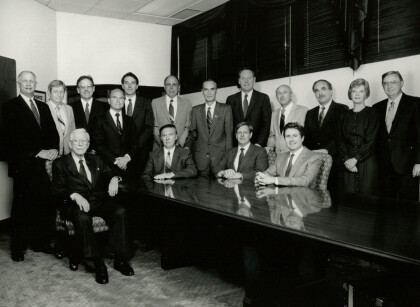
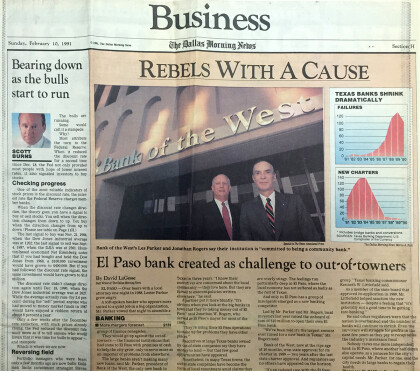
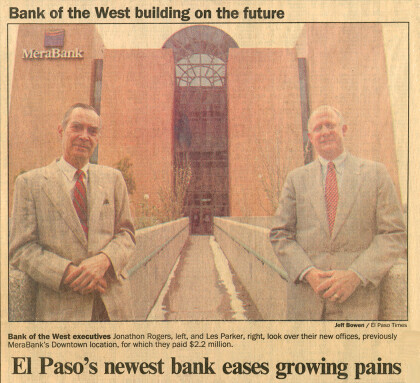
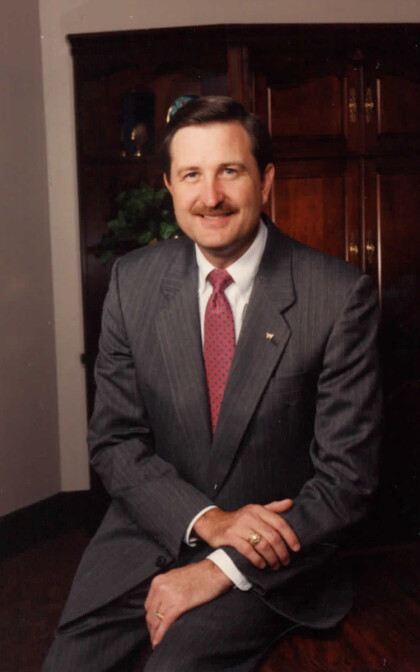
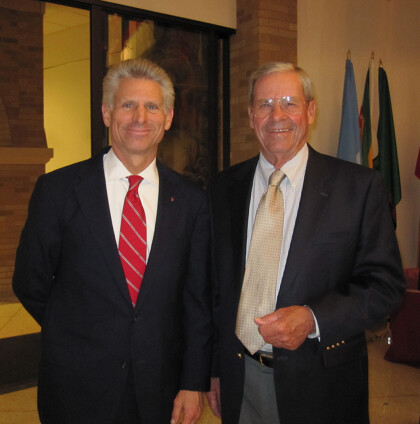
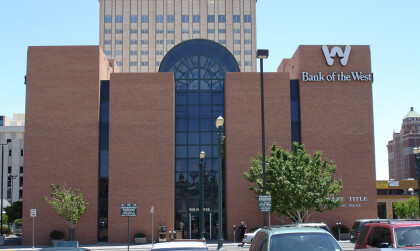








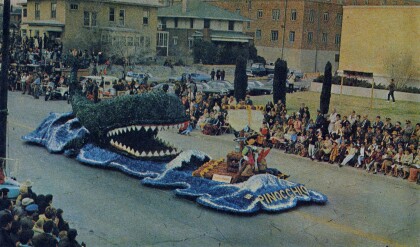
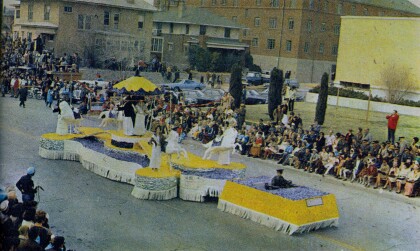
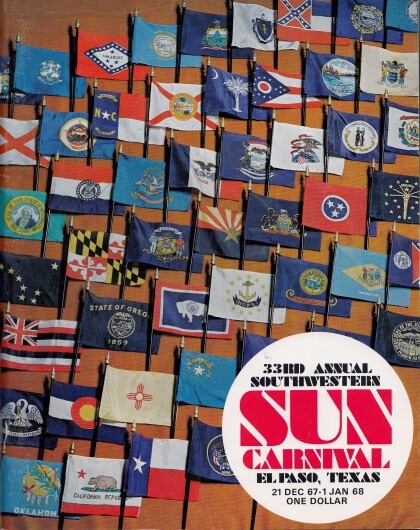
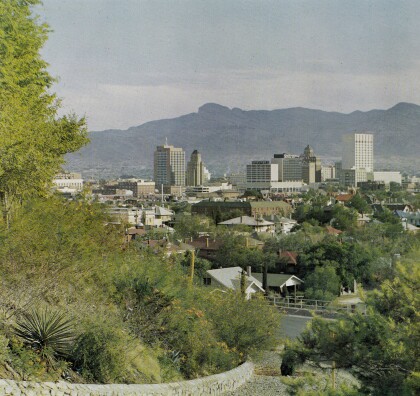
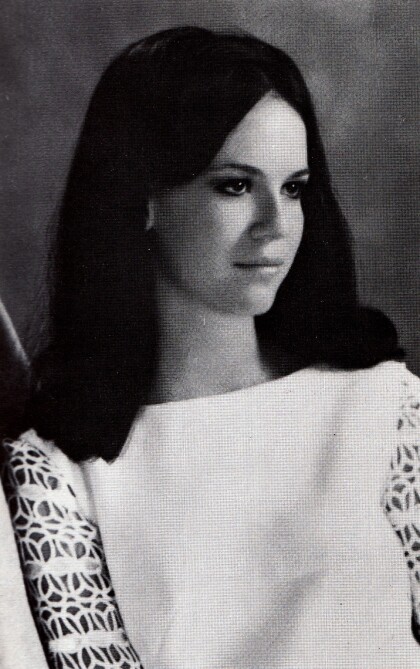
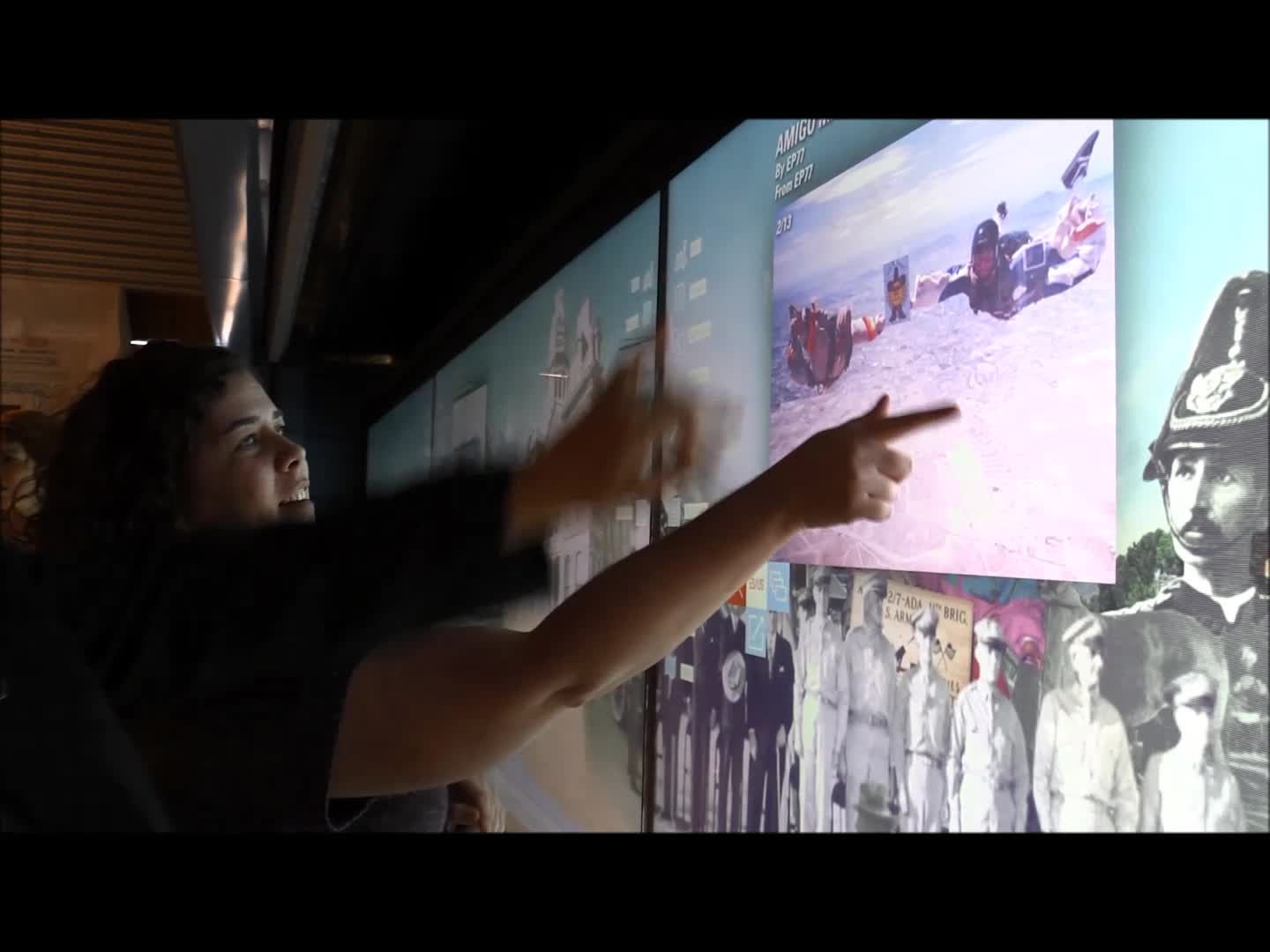
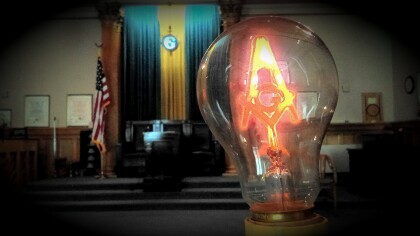

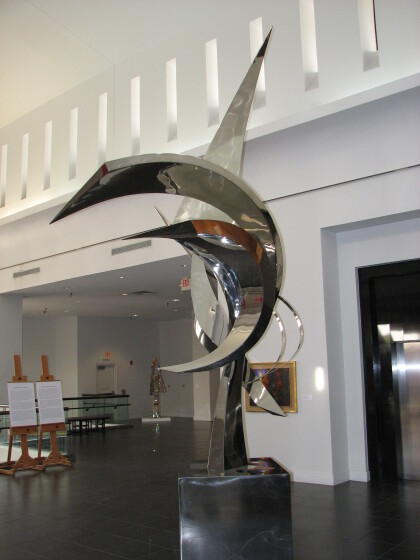
Comments
Add a comment